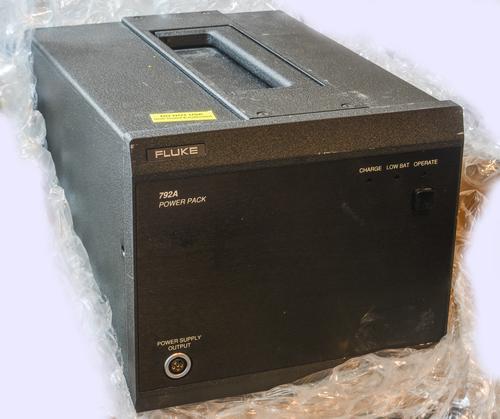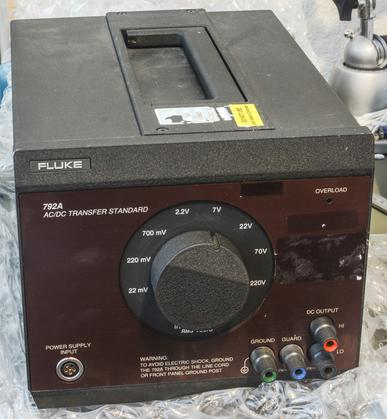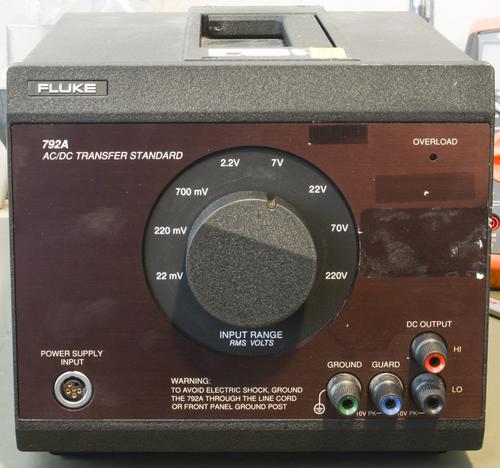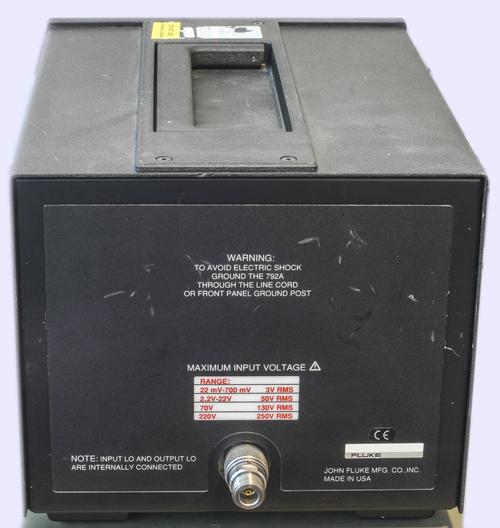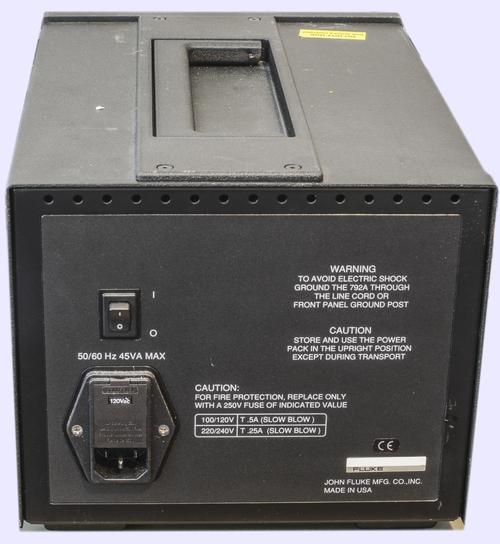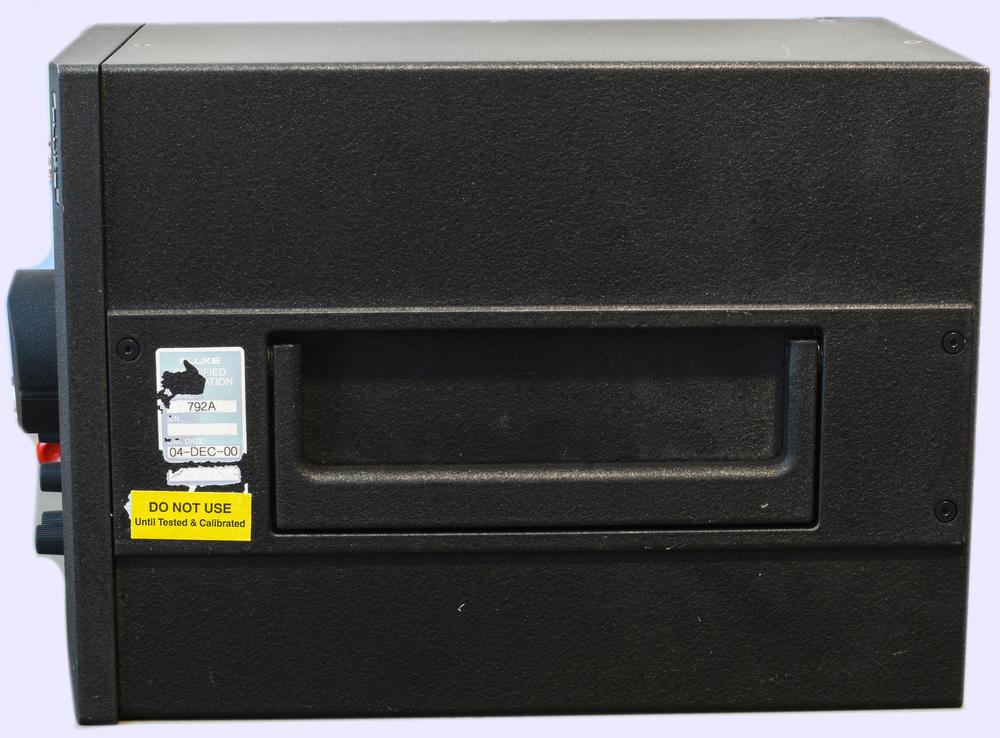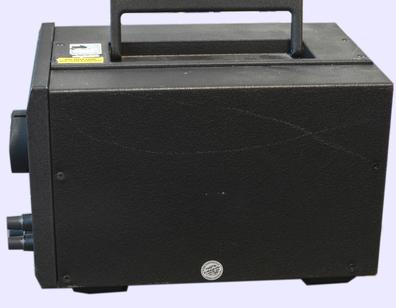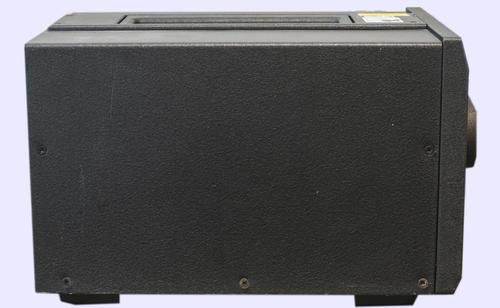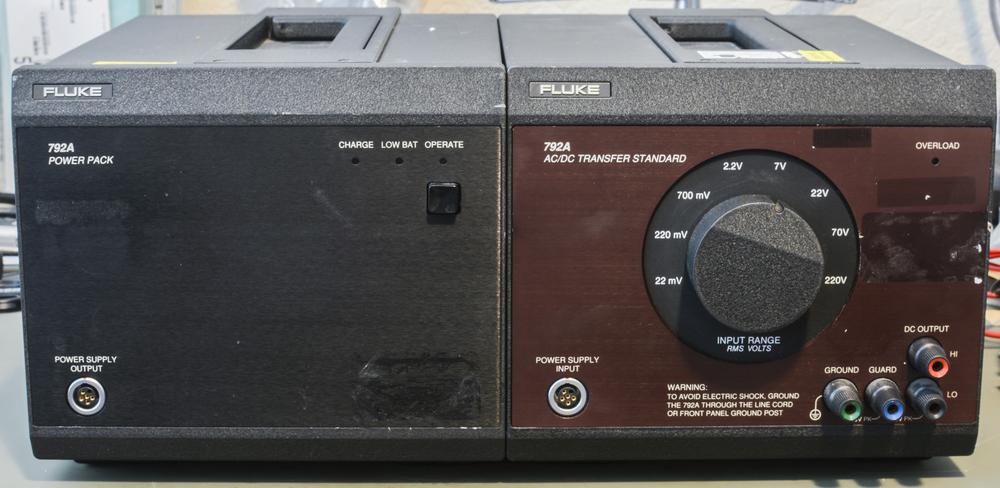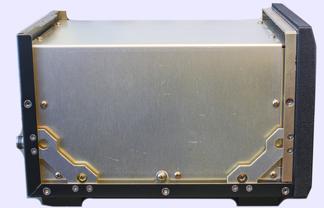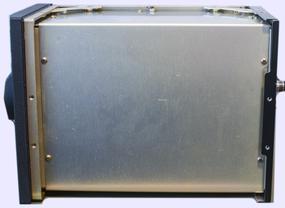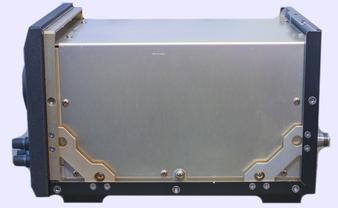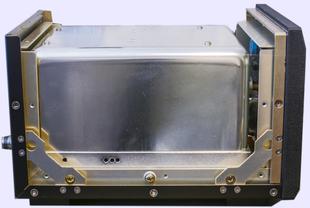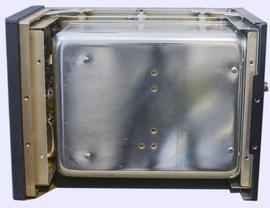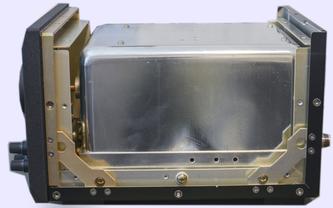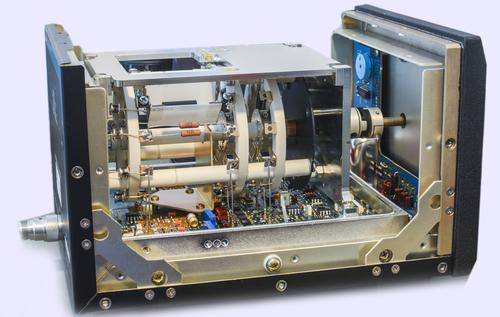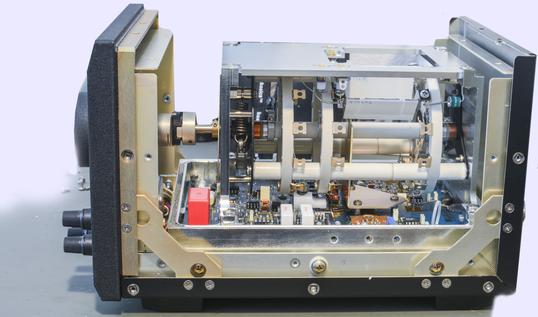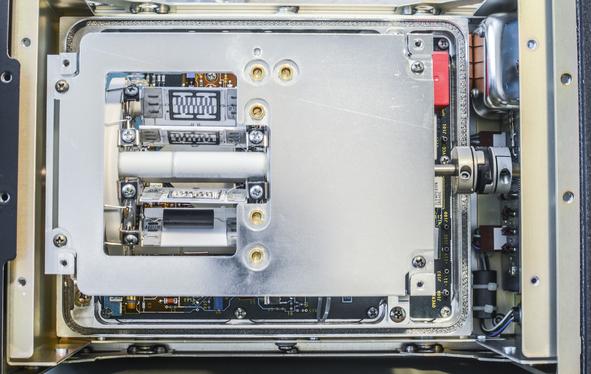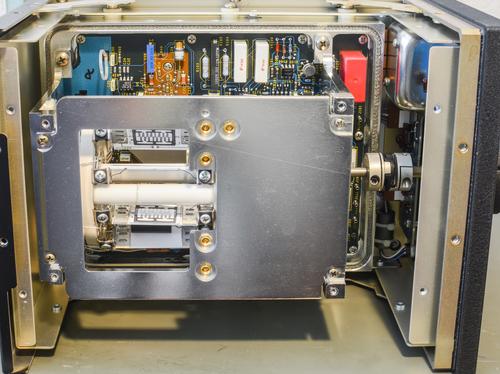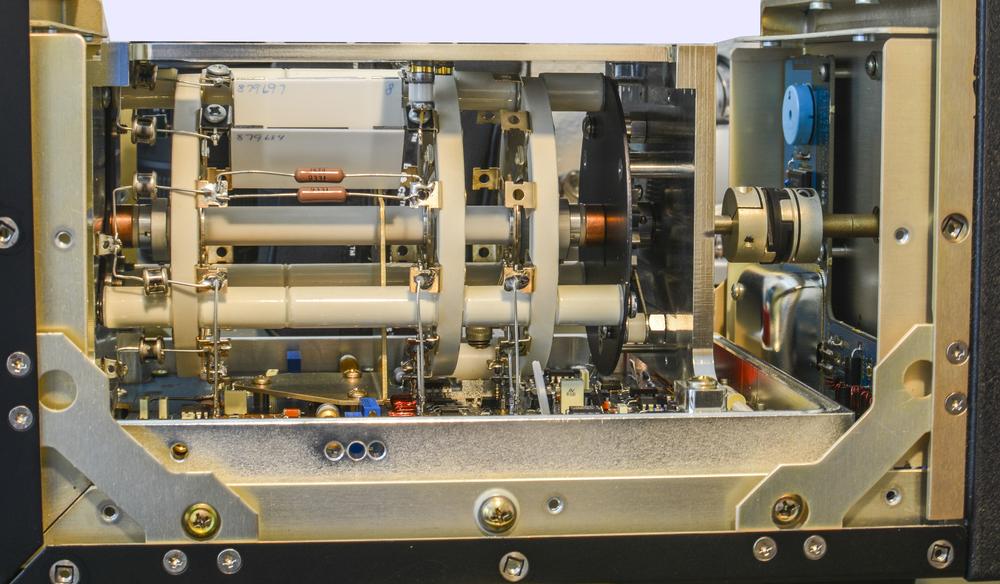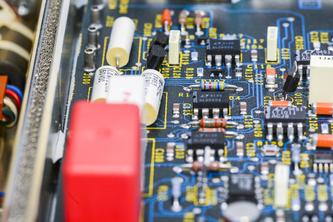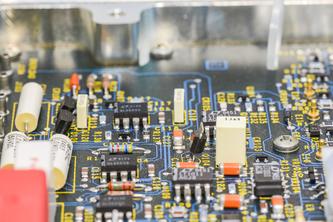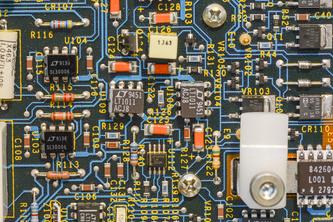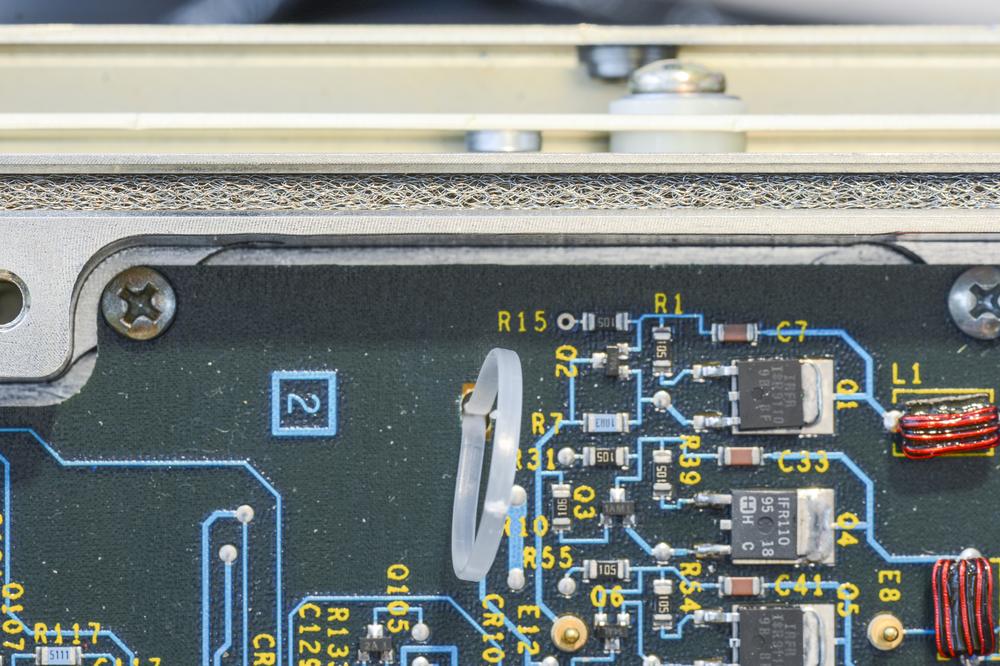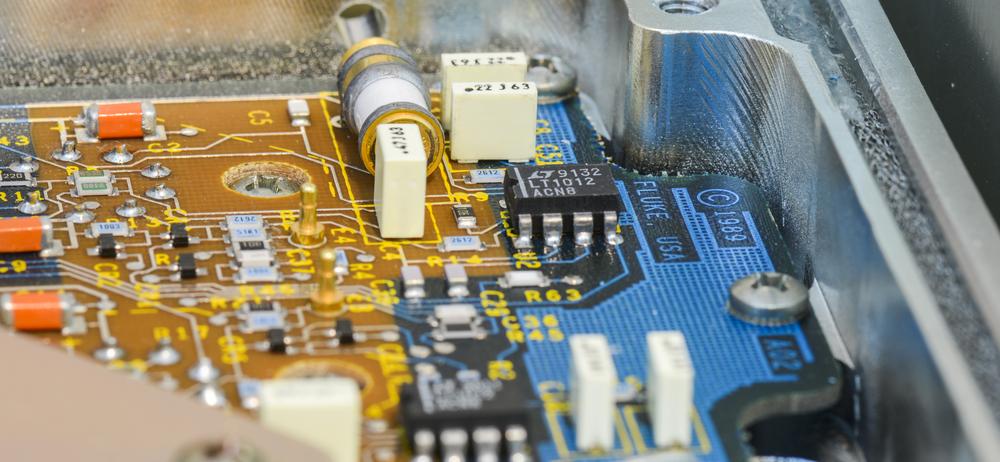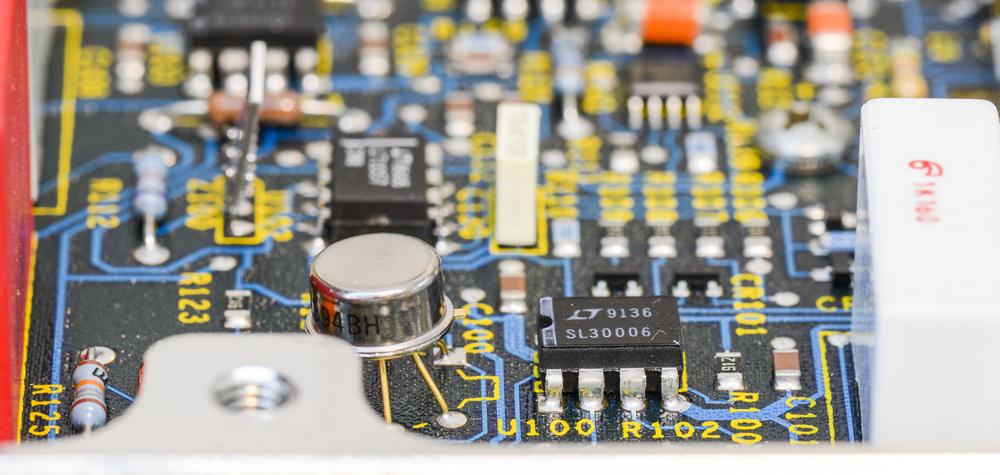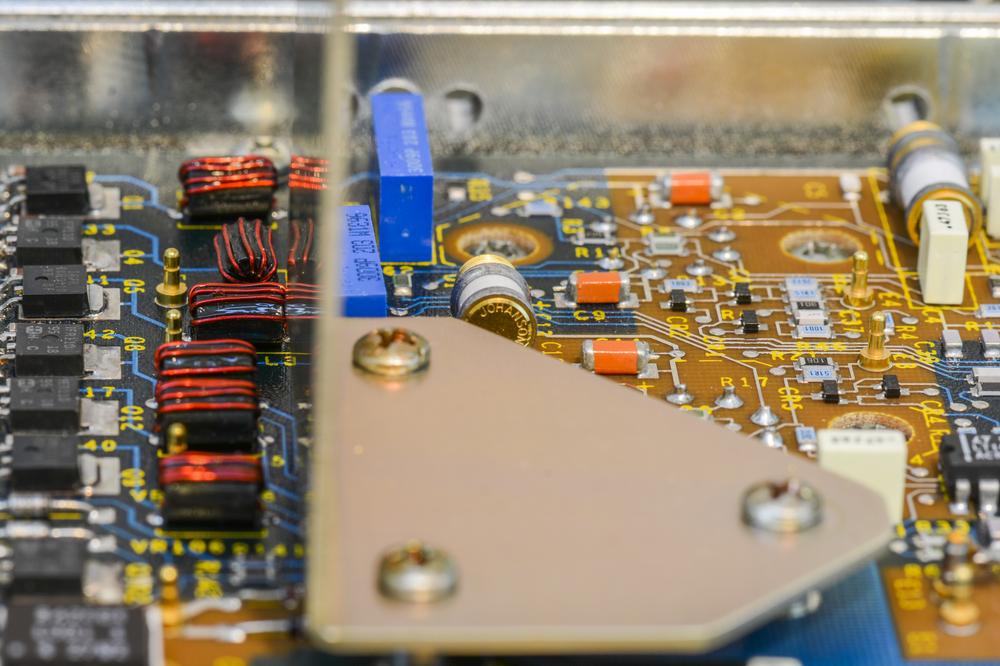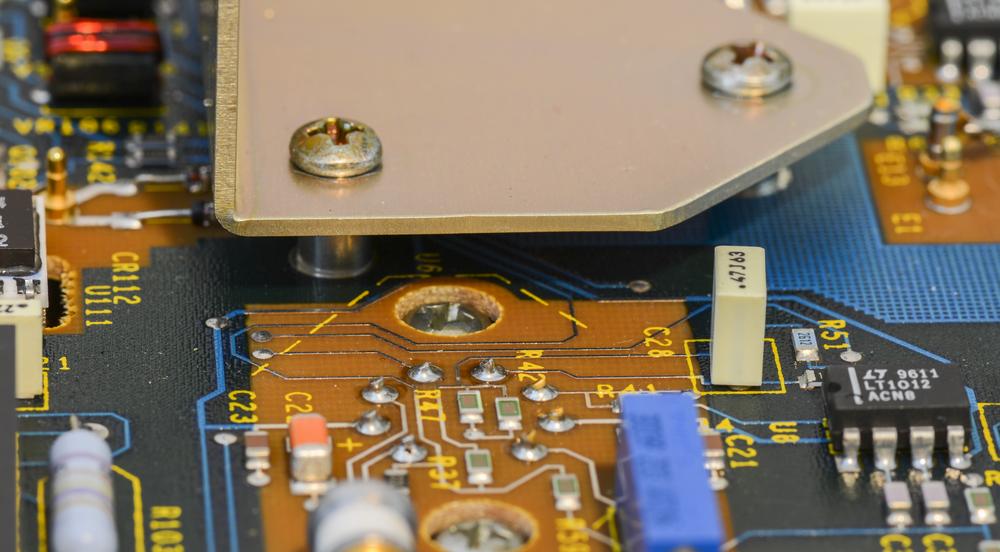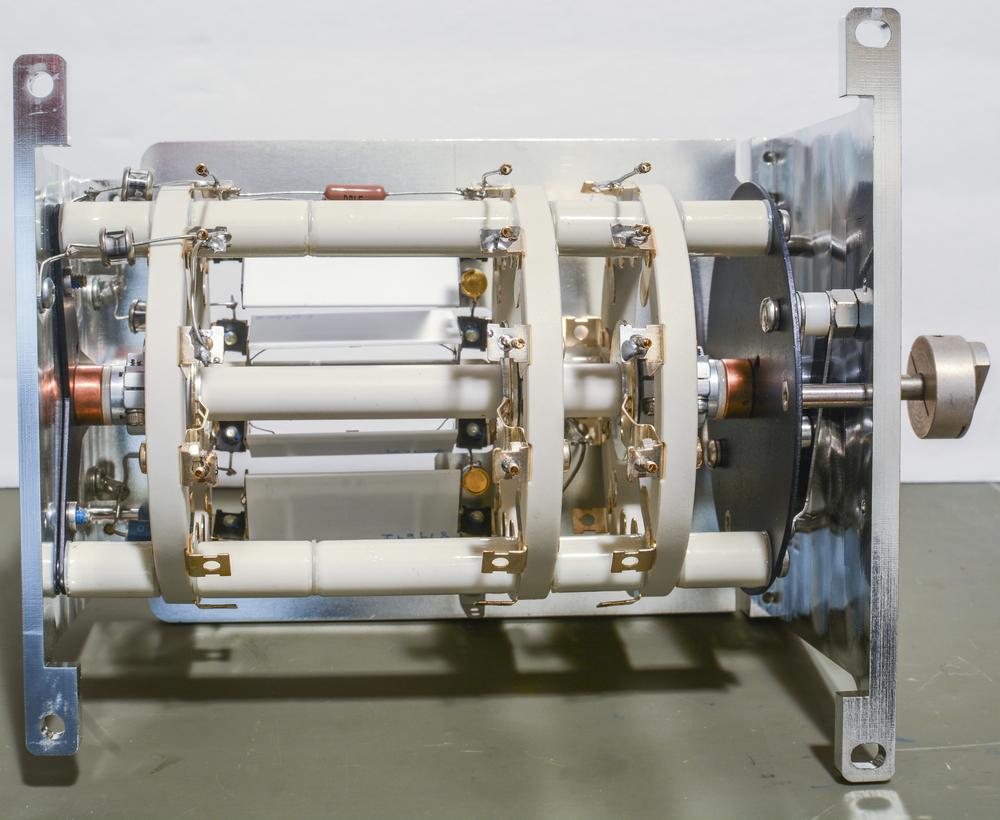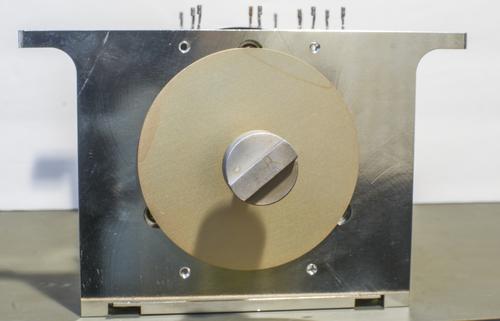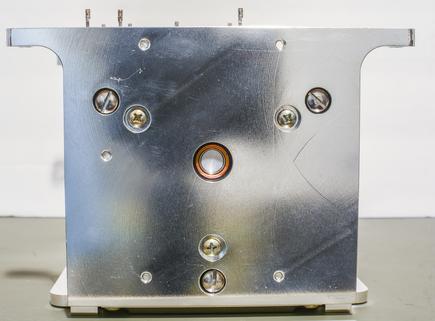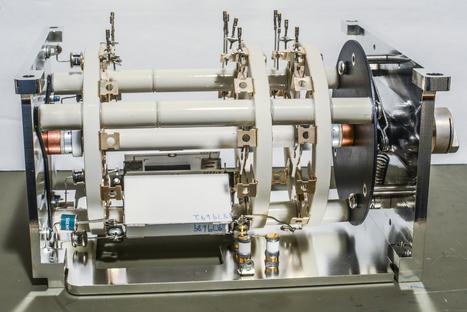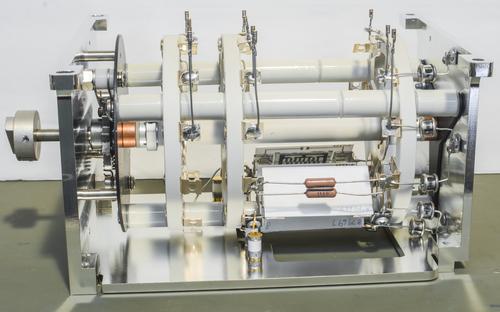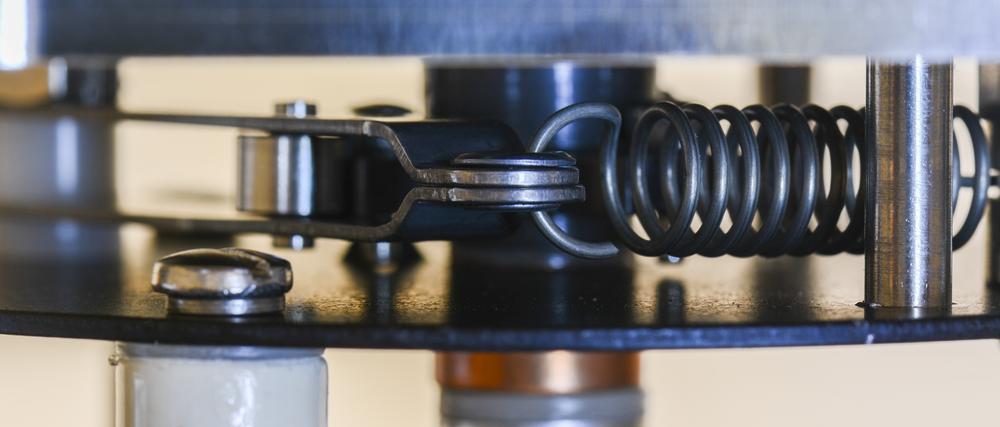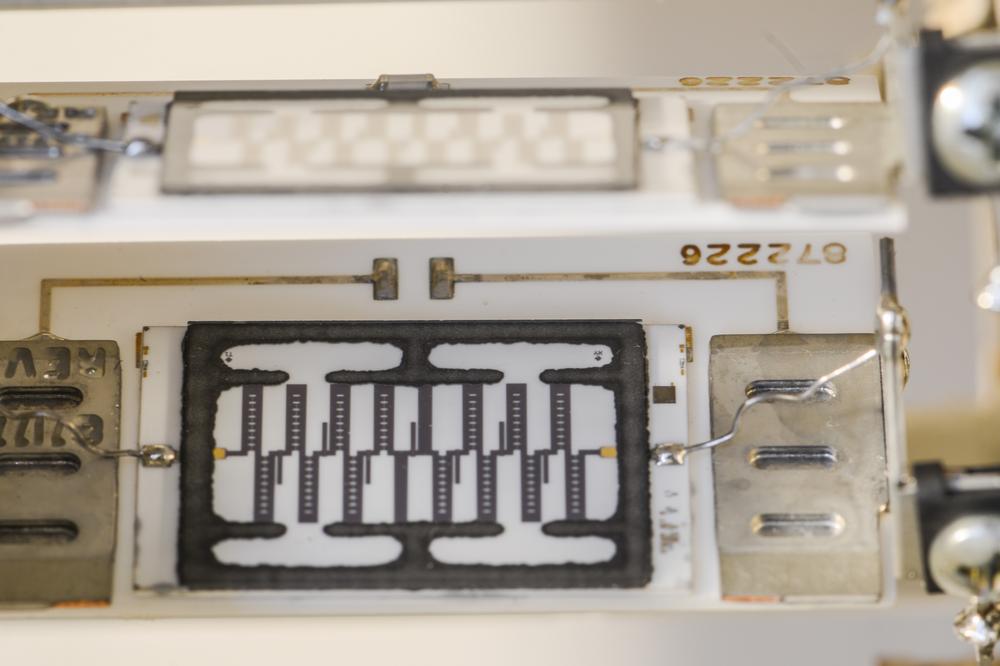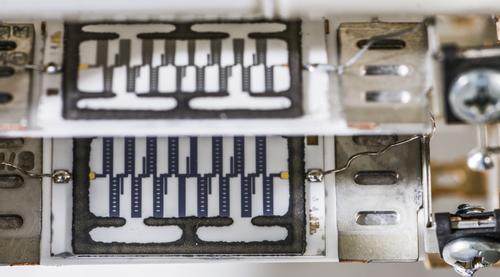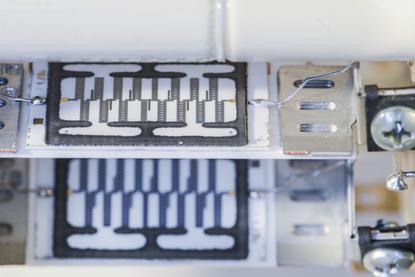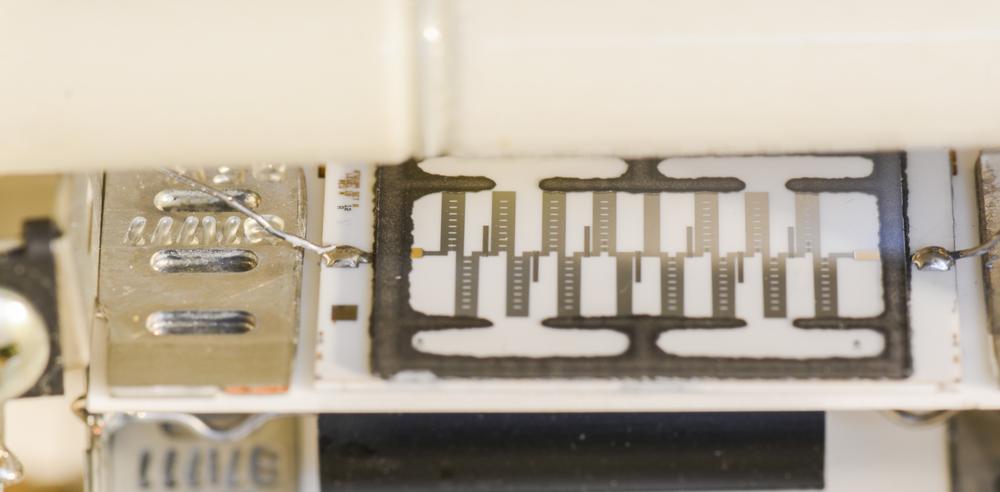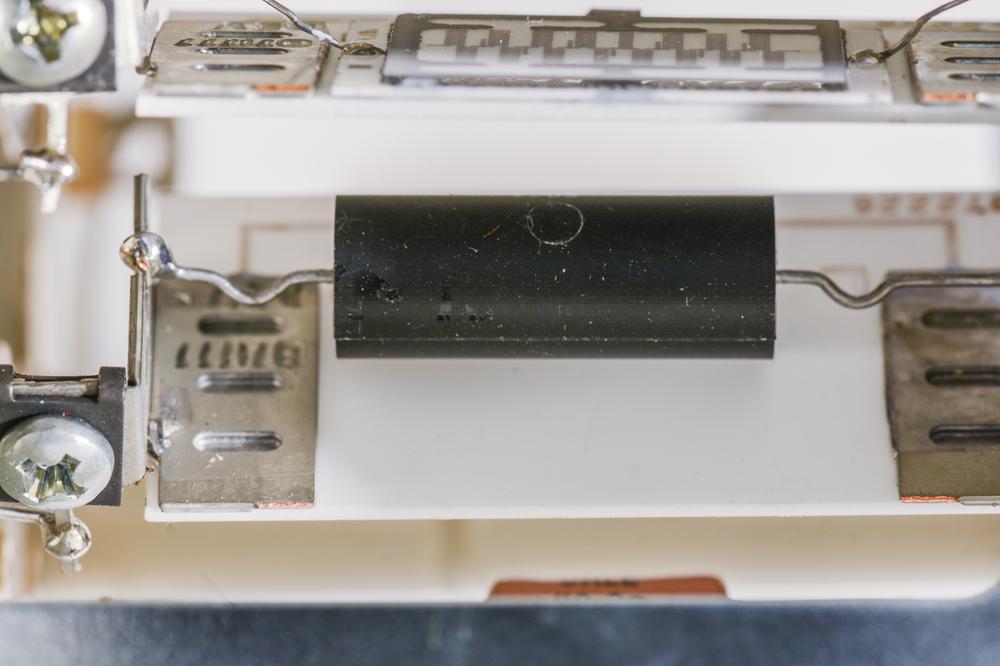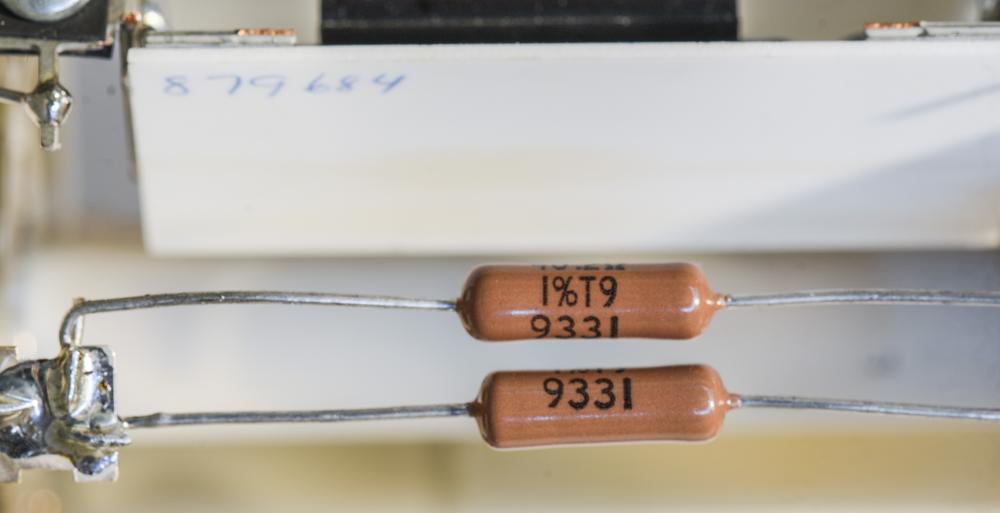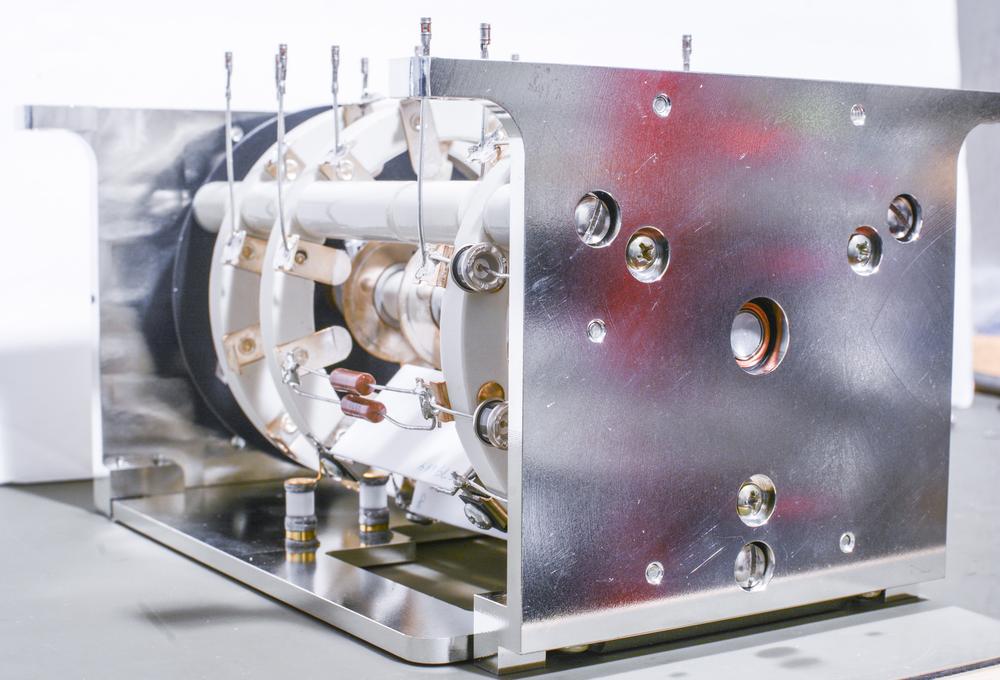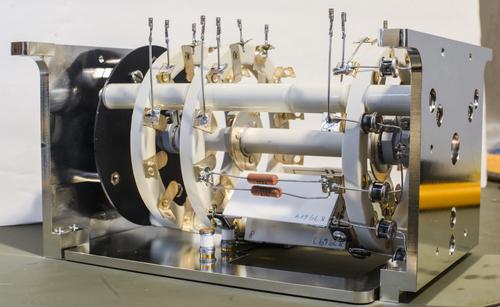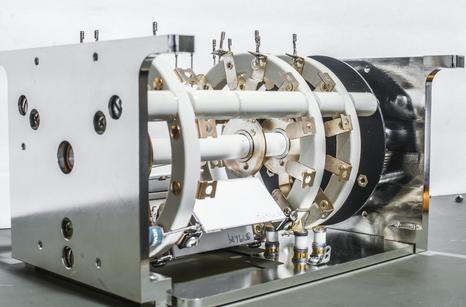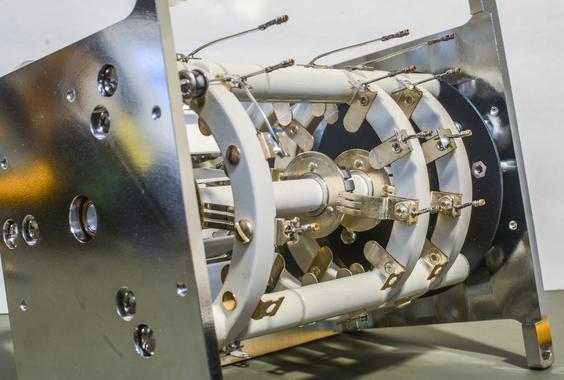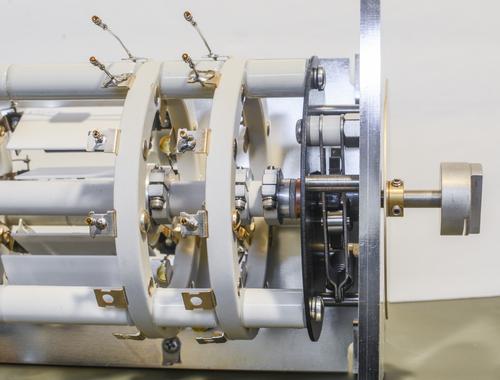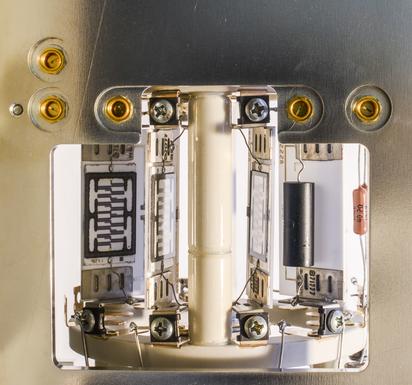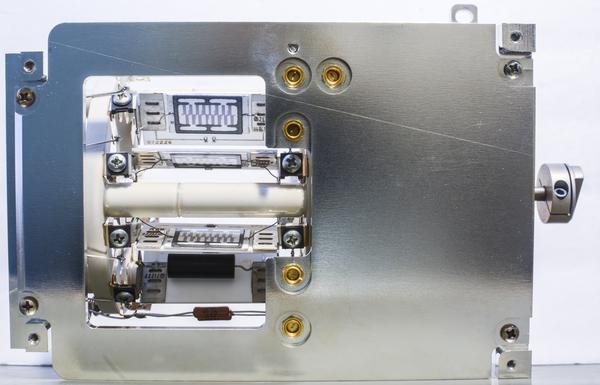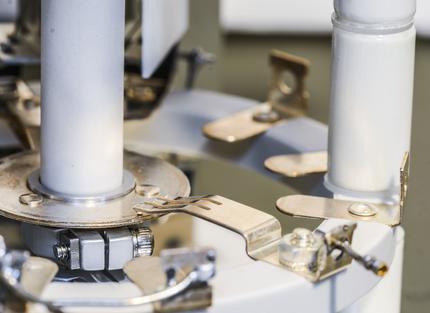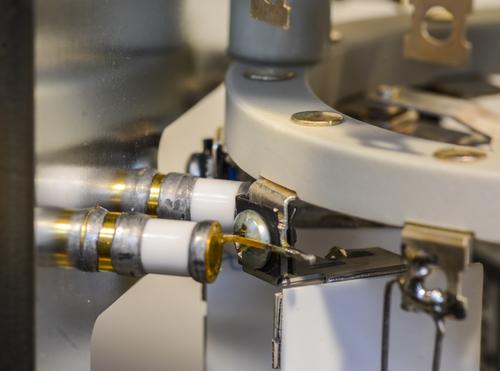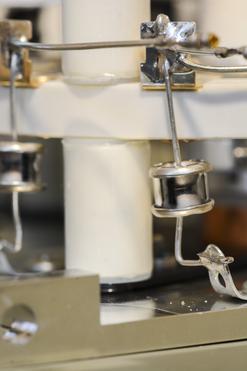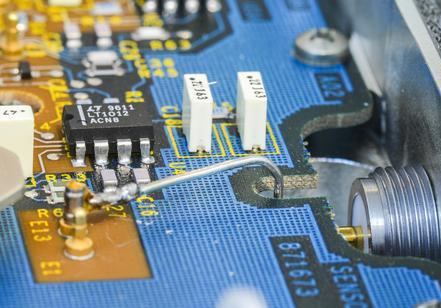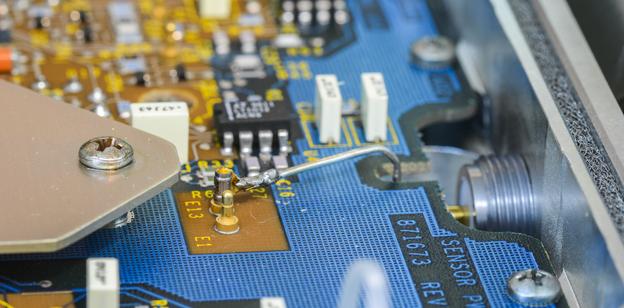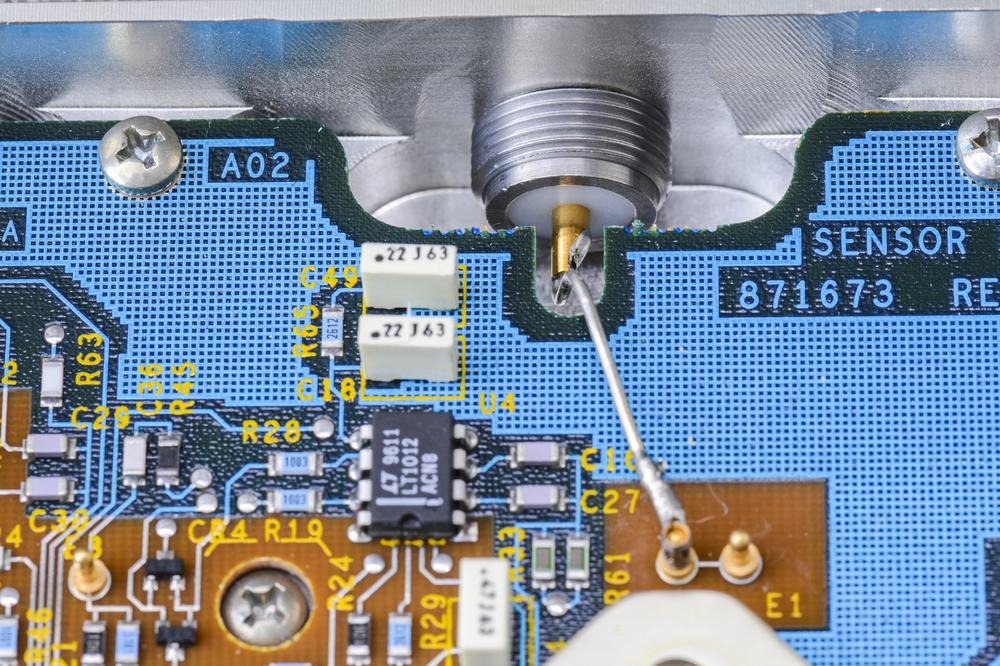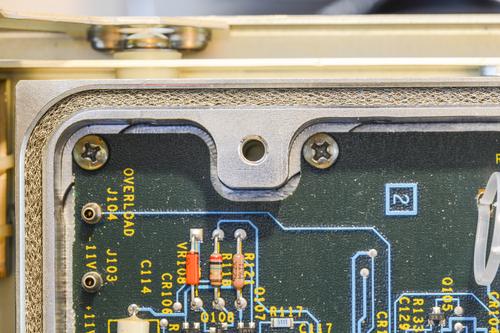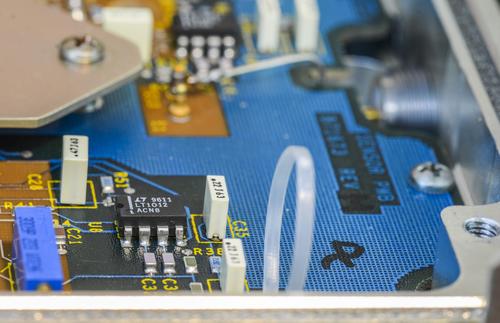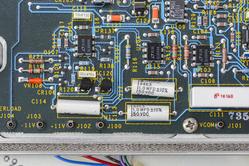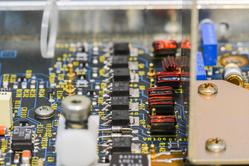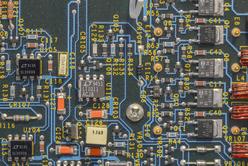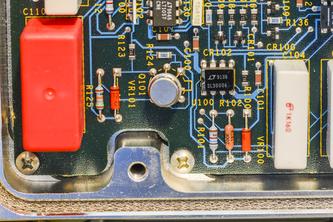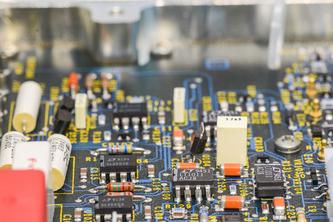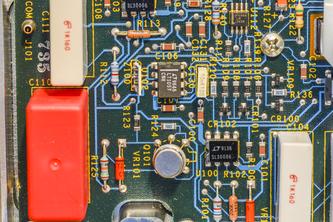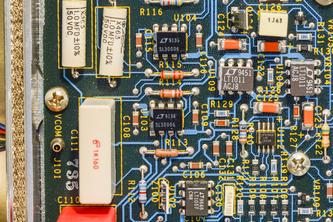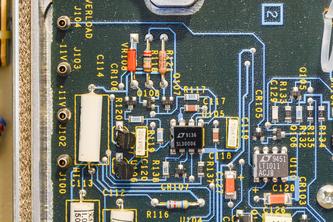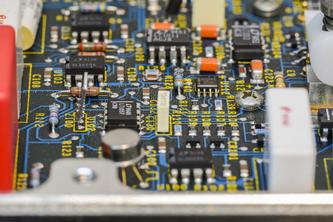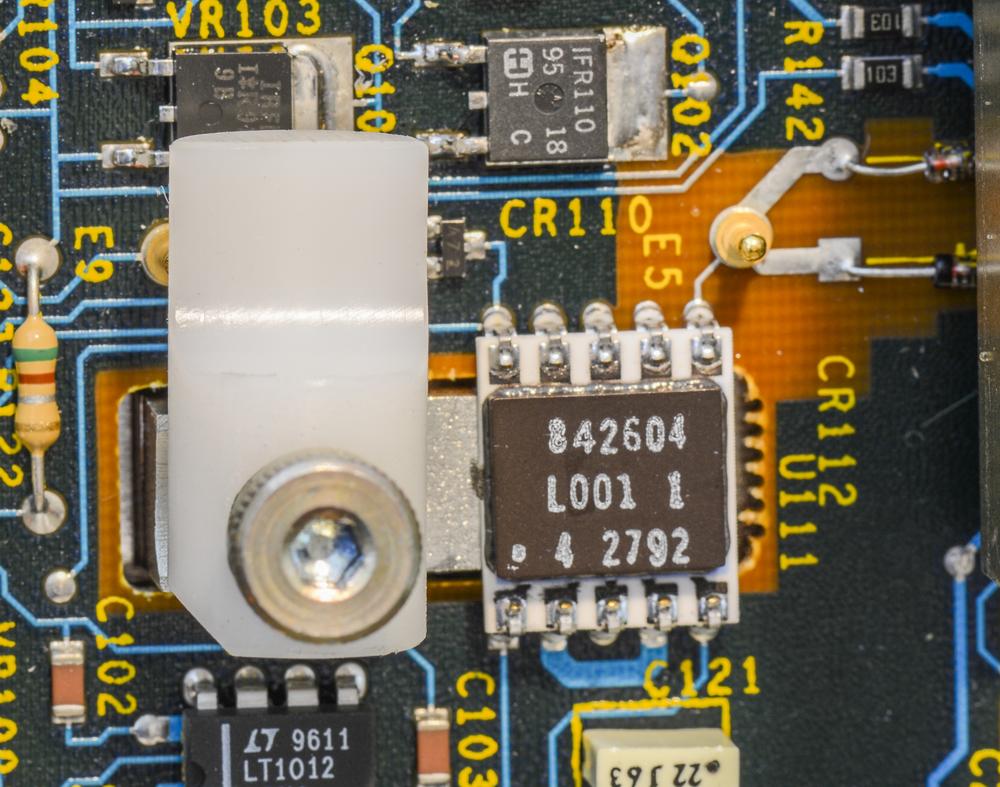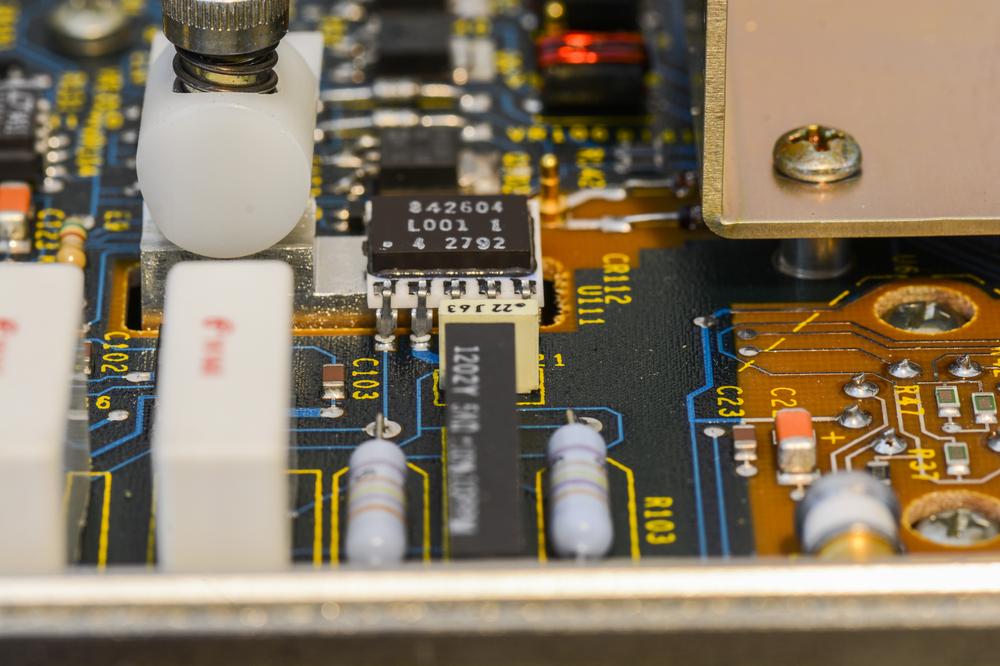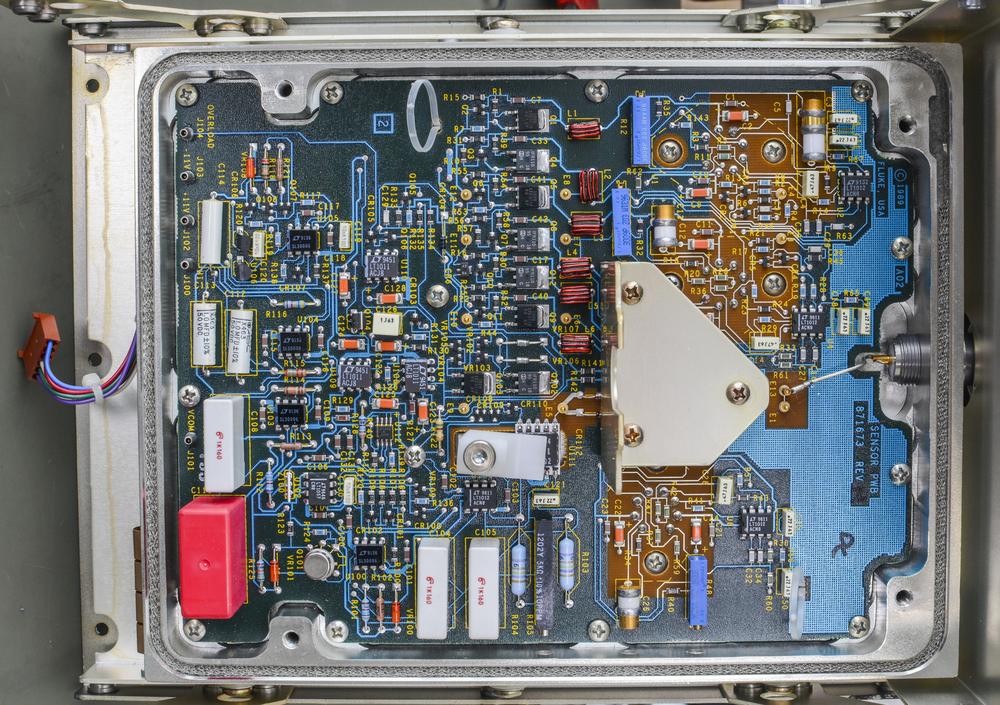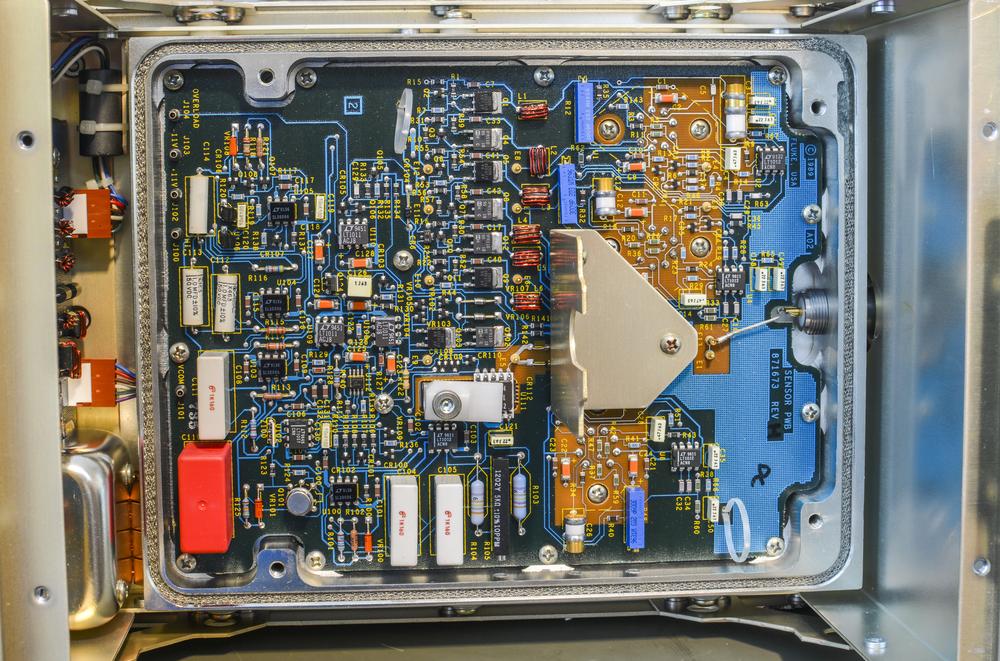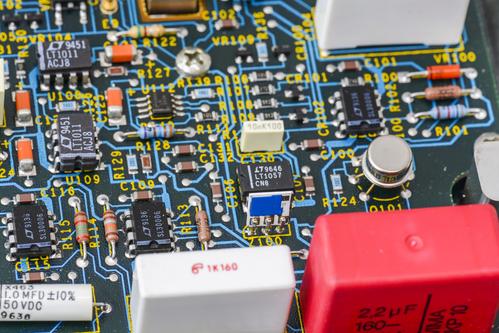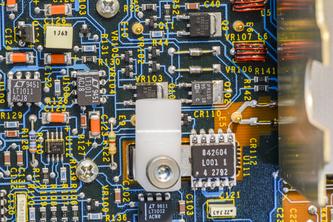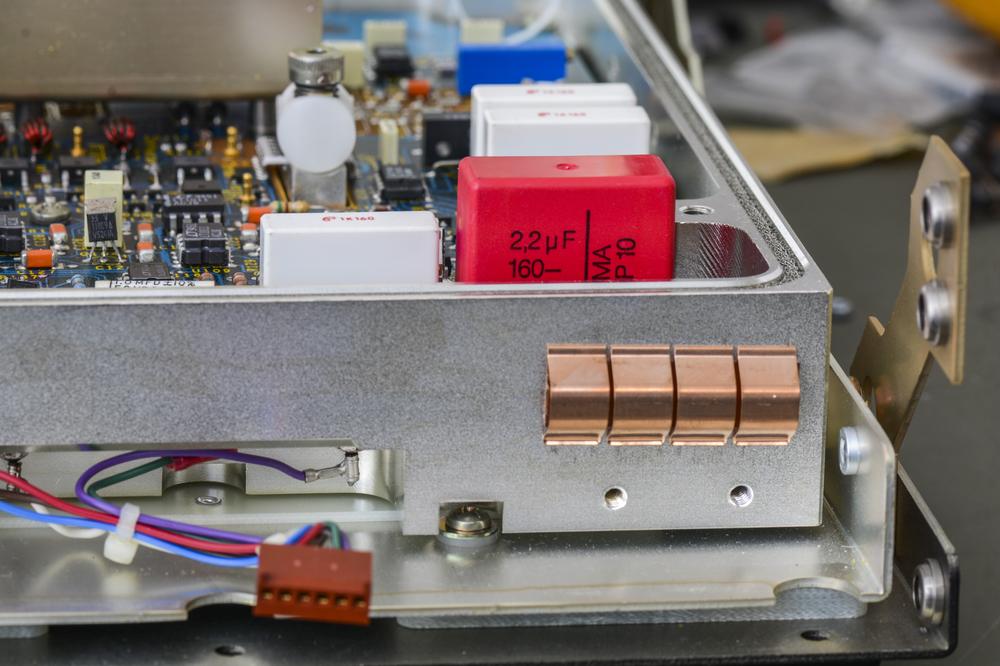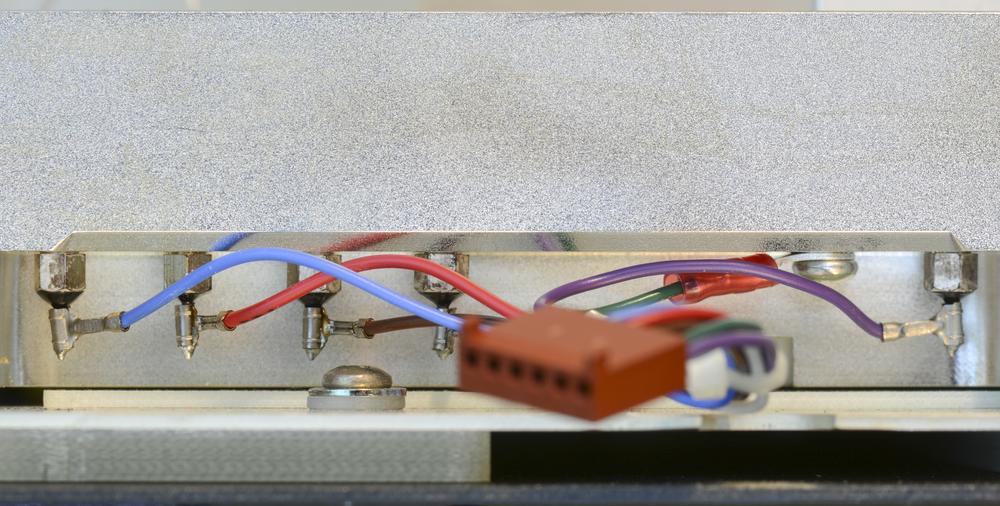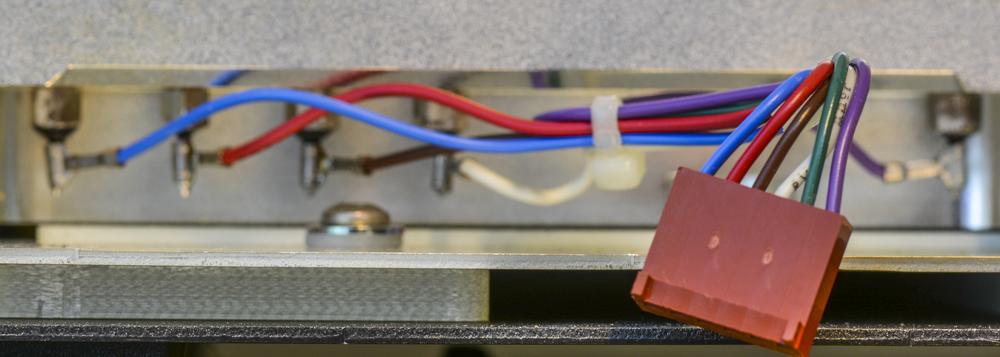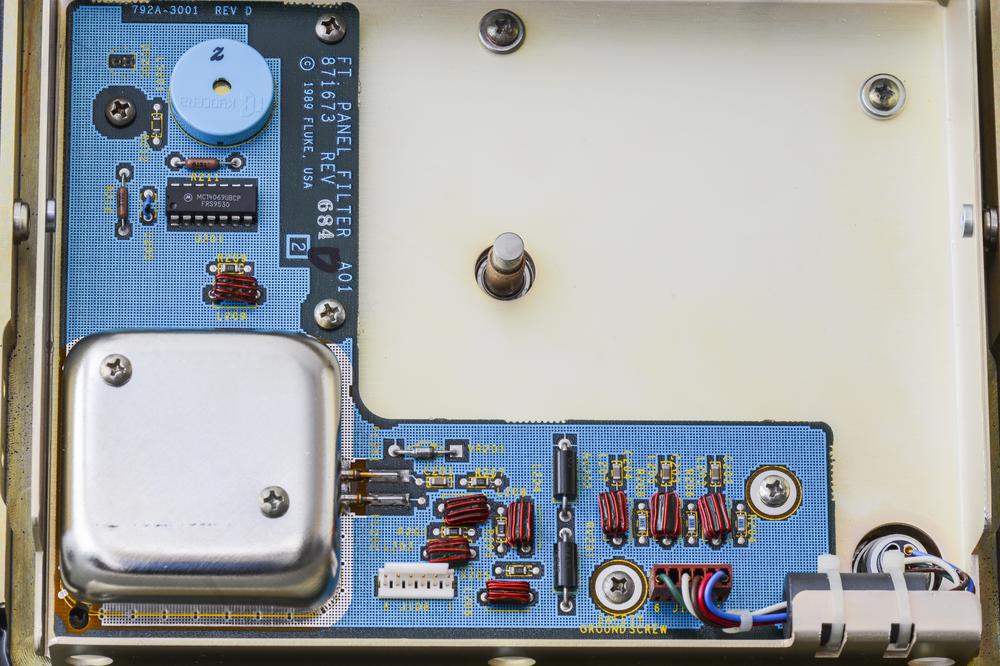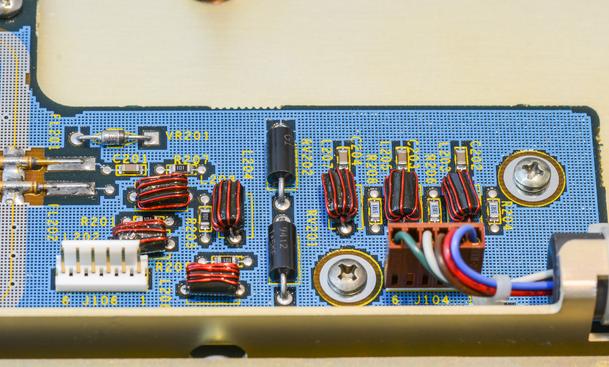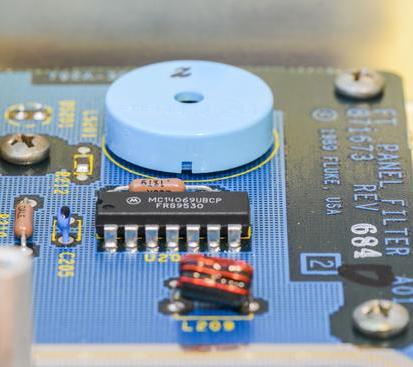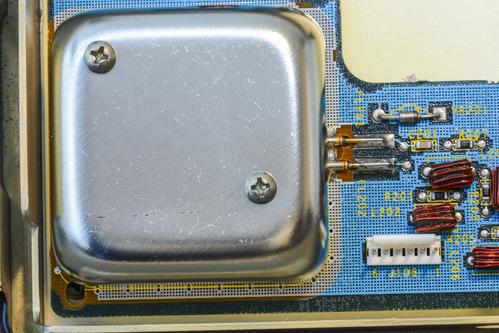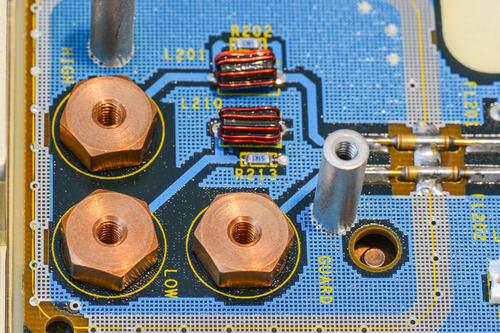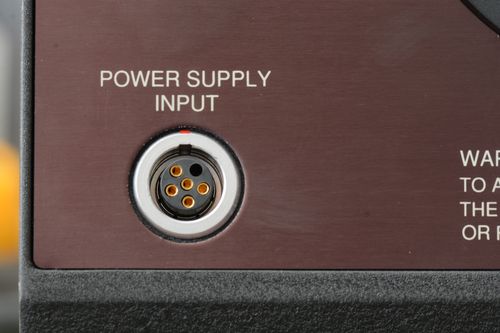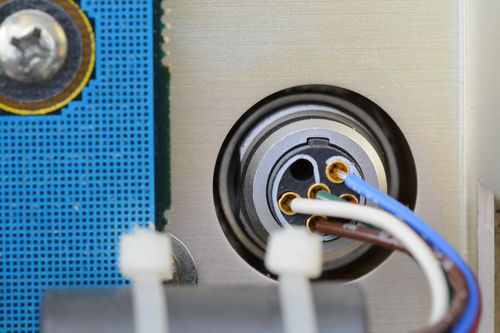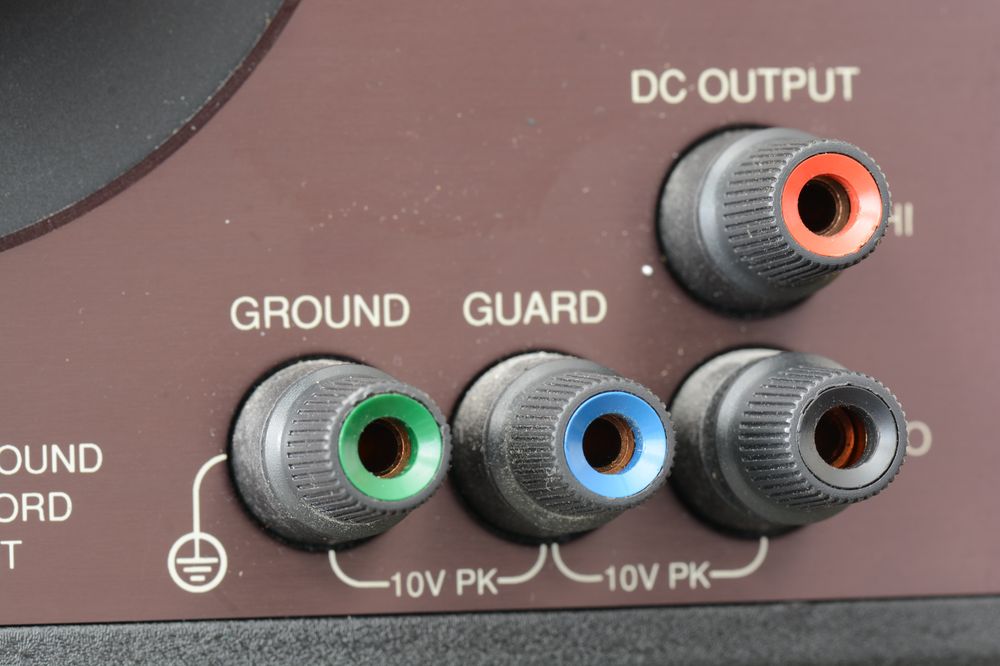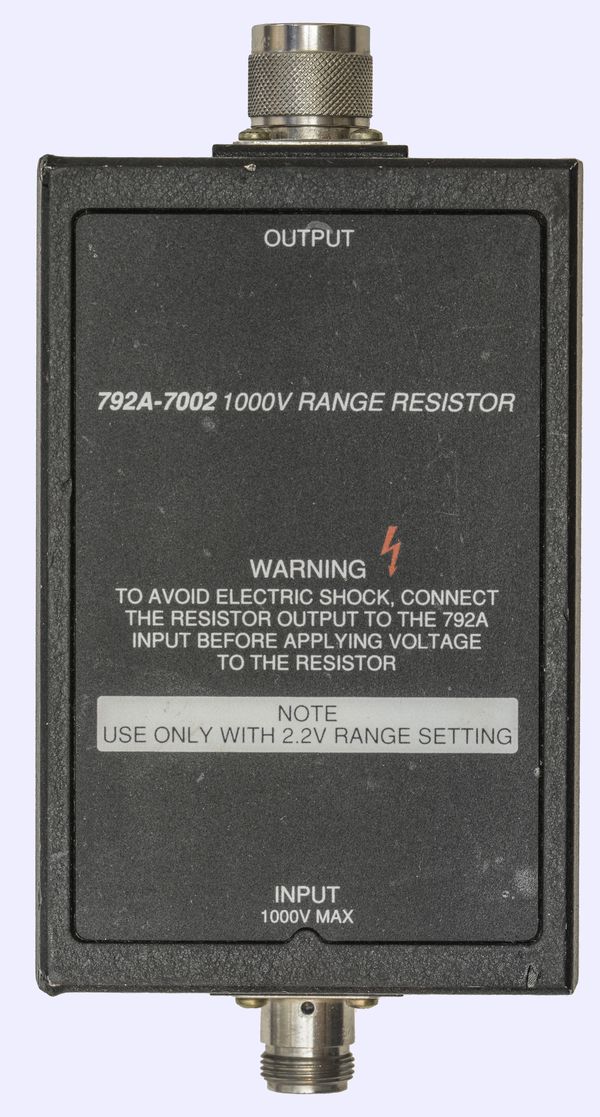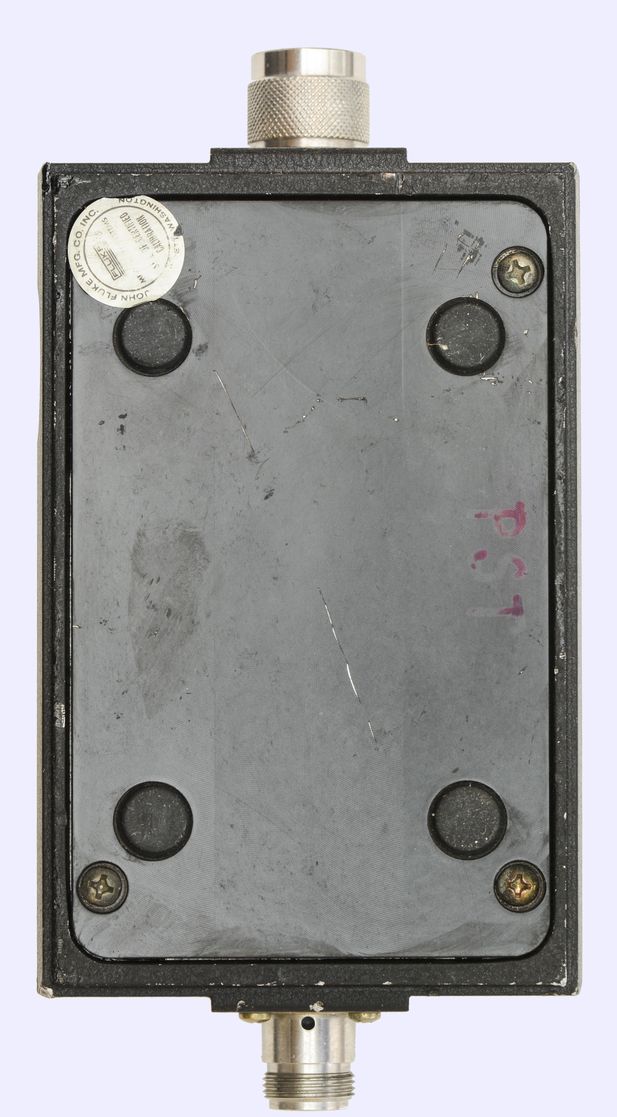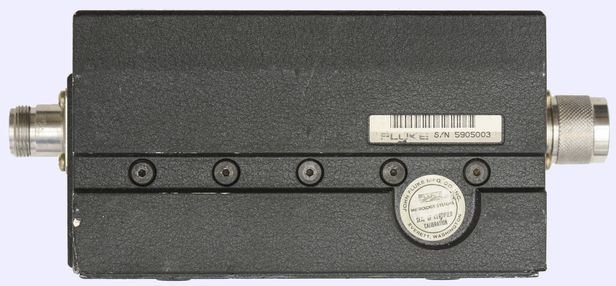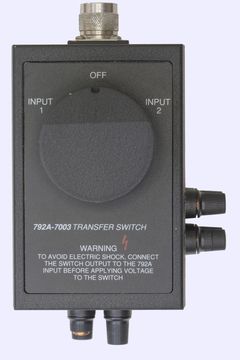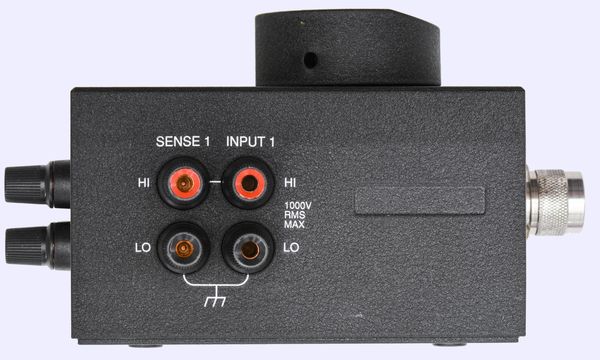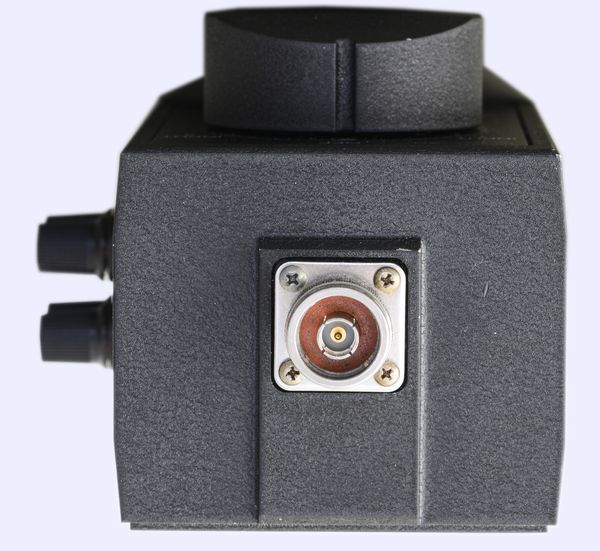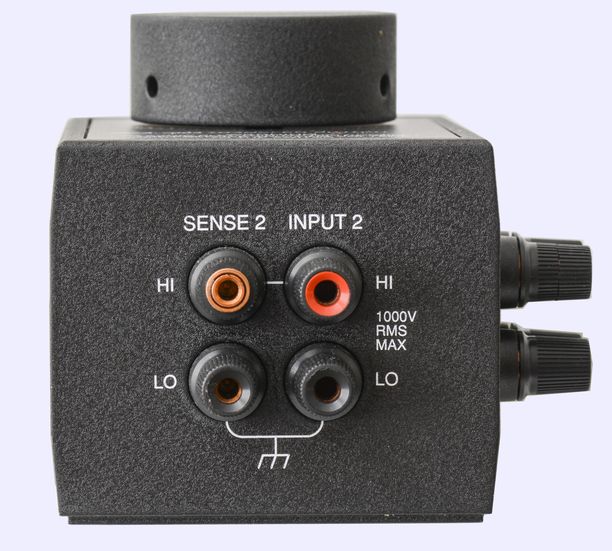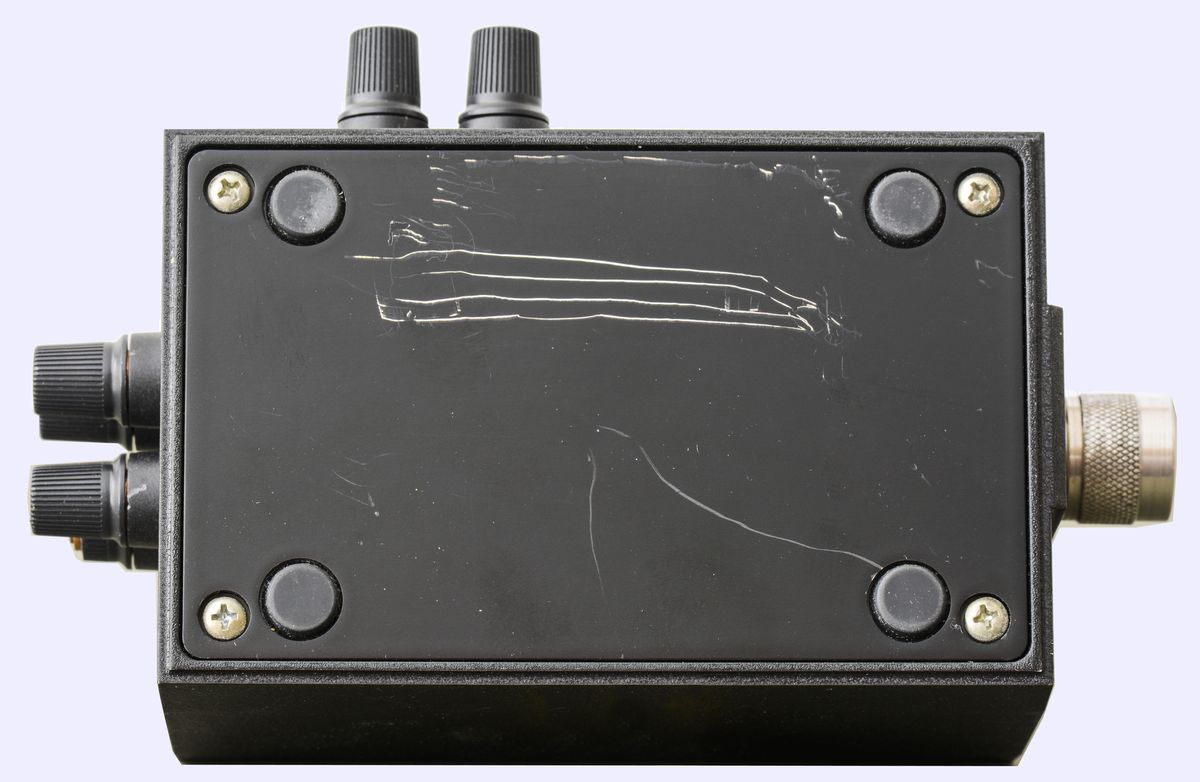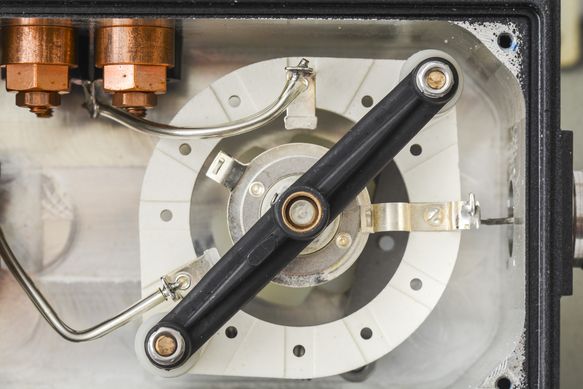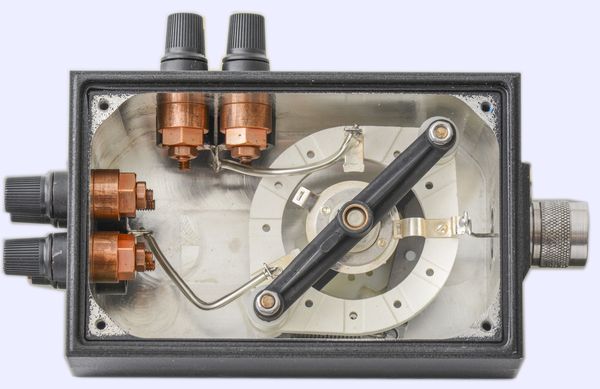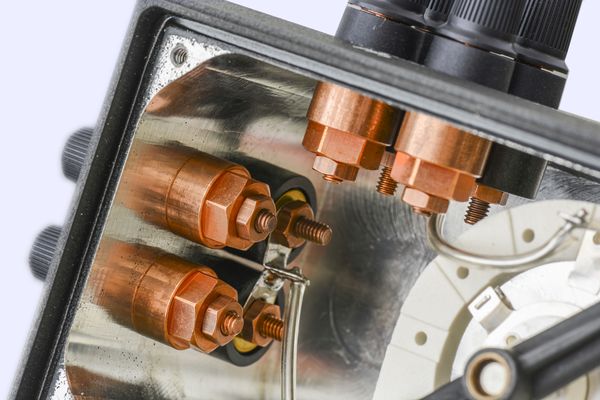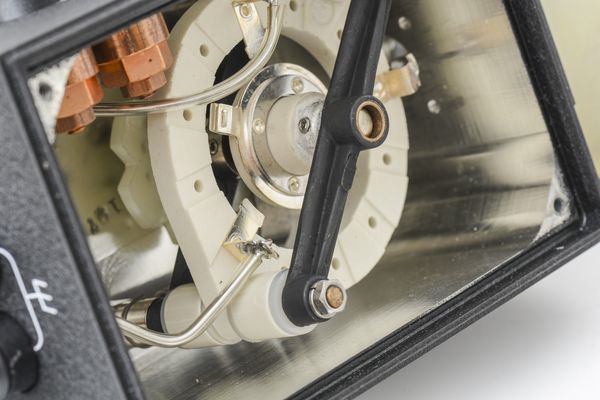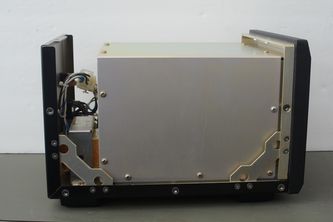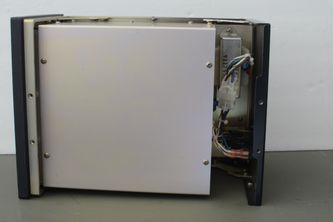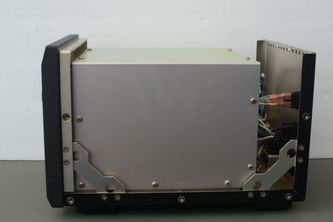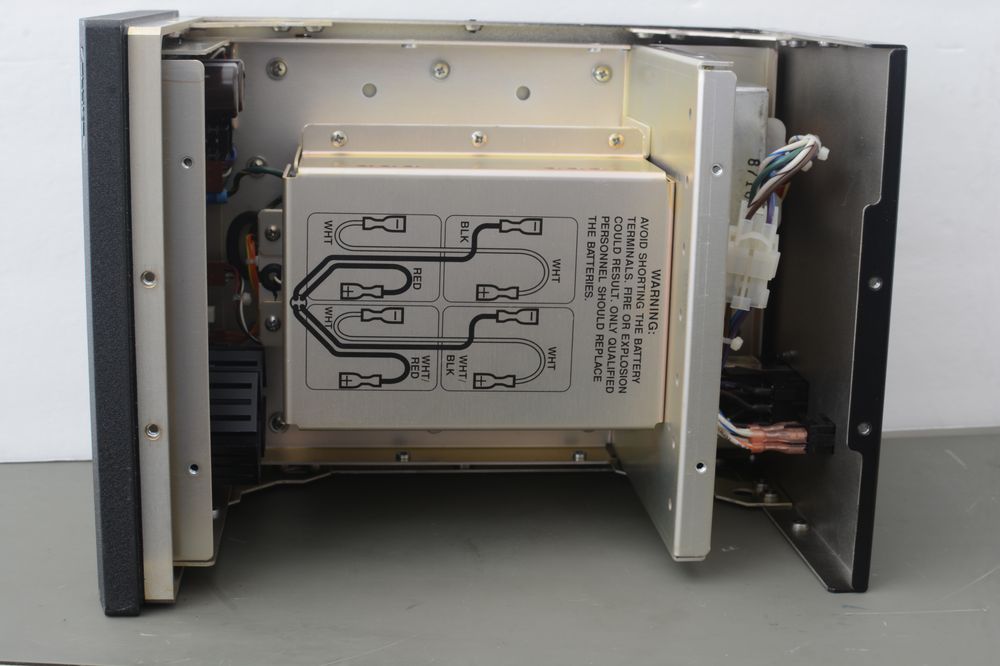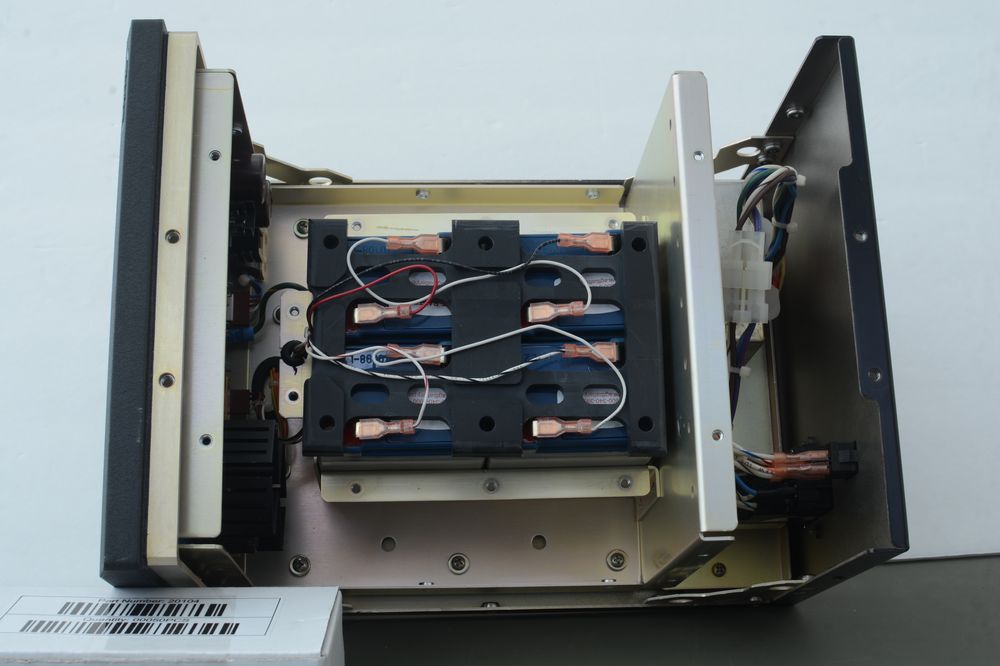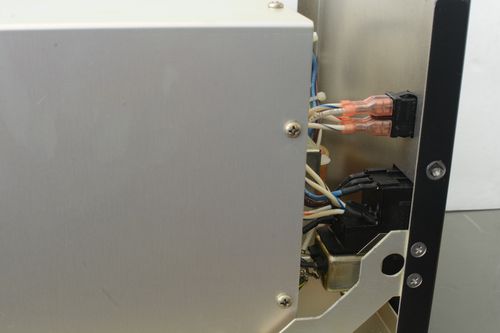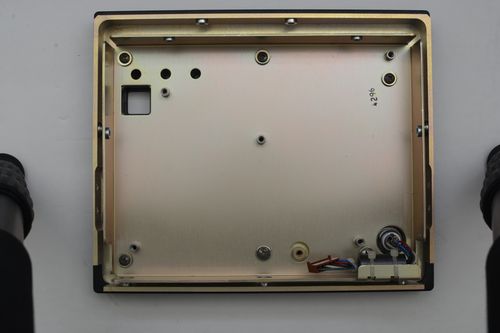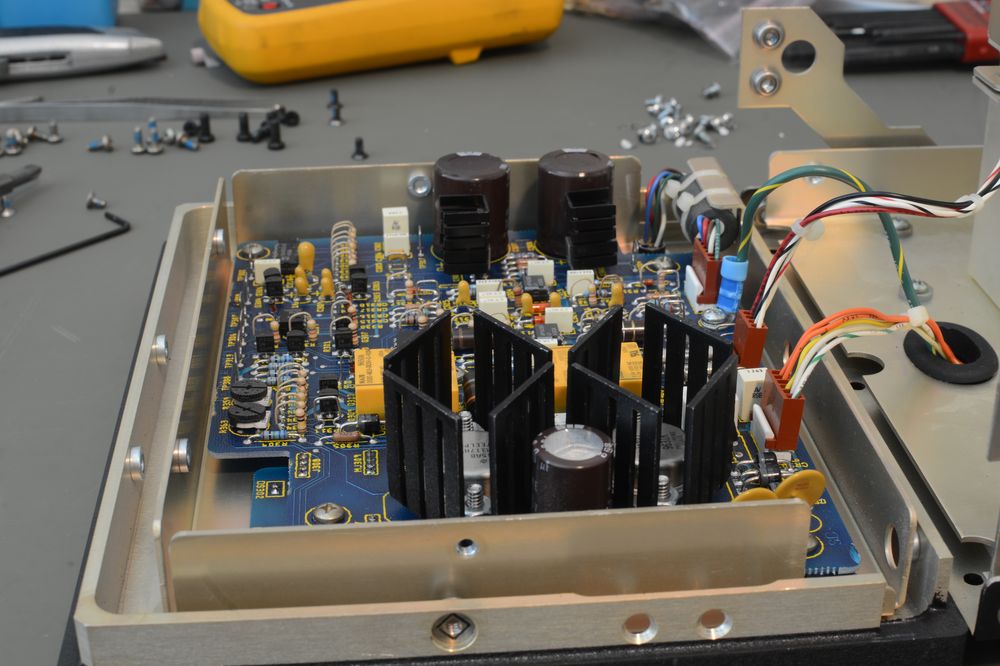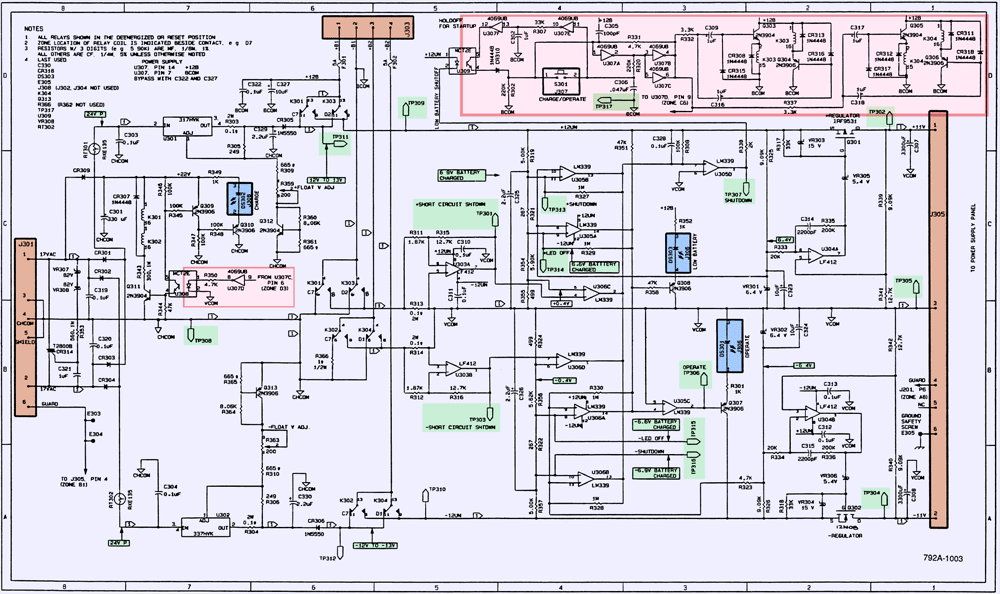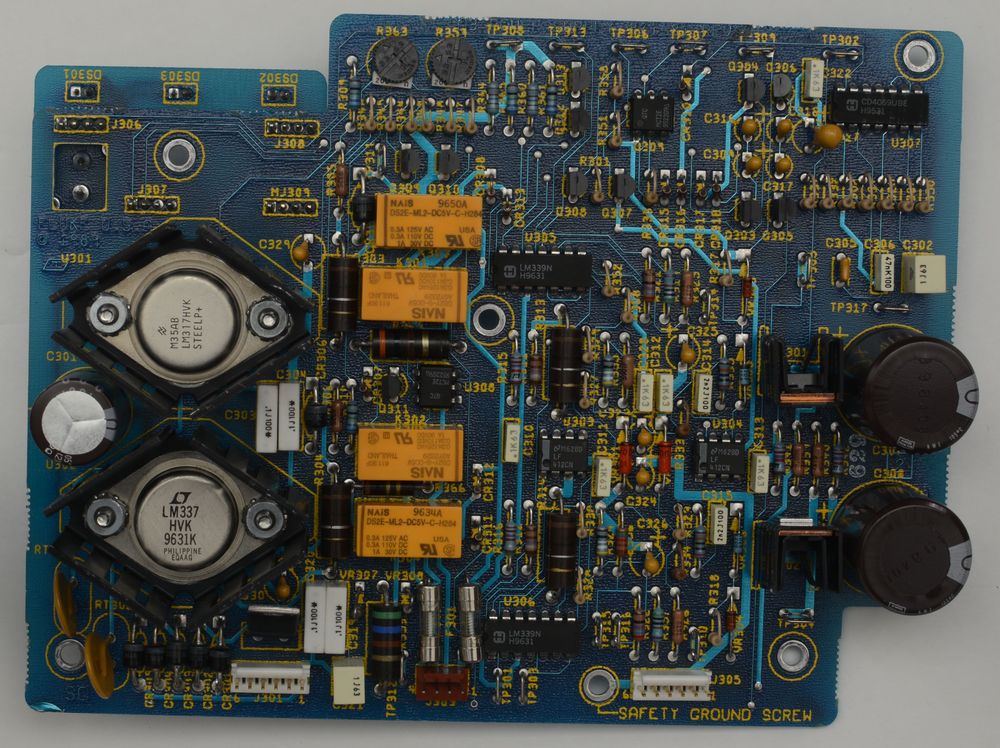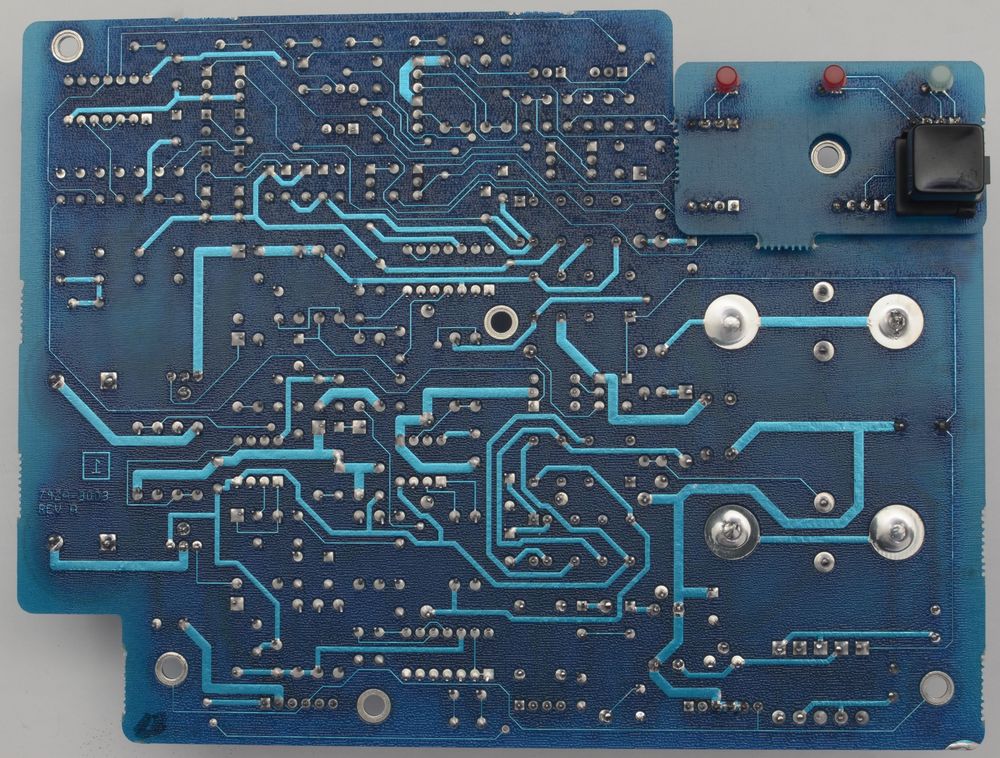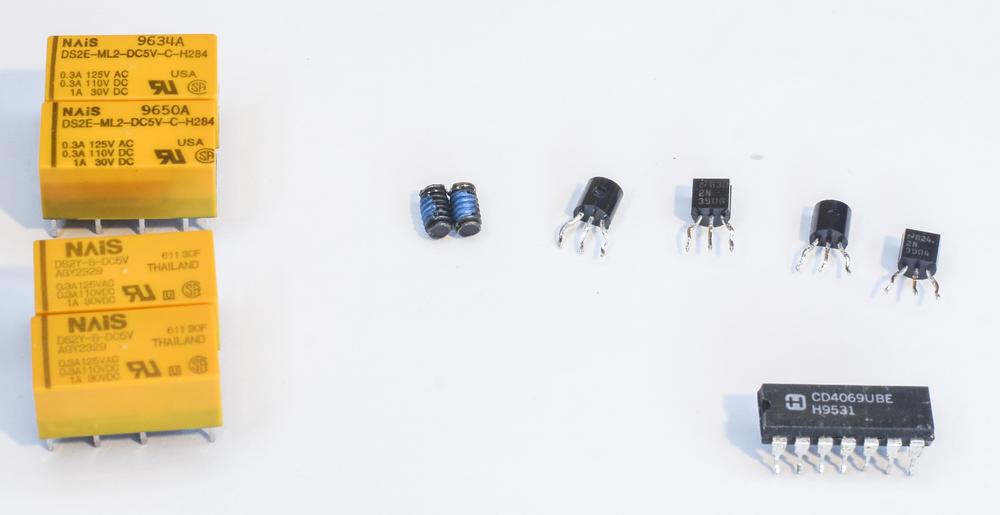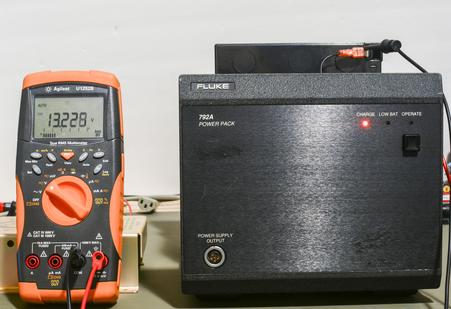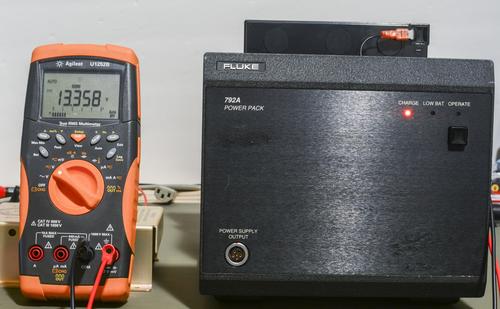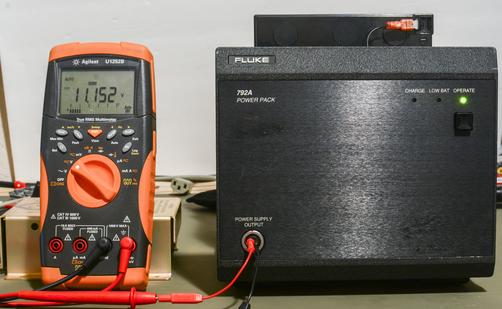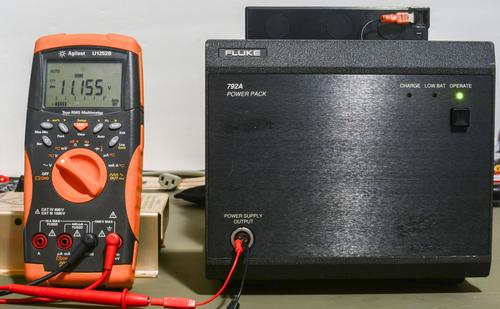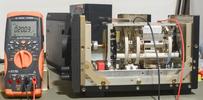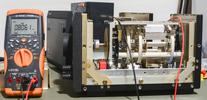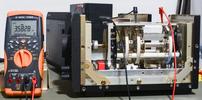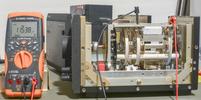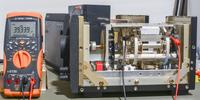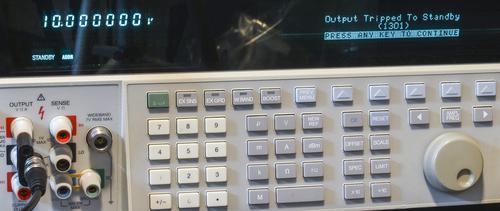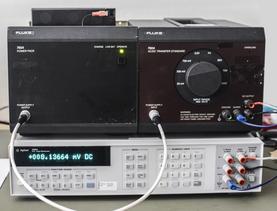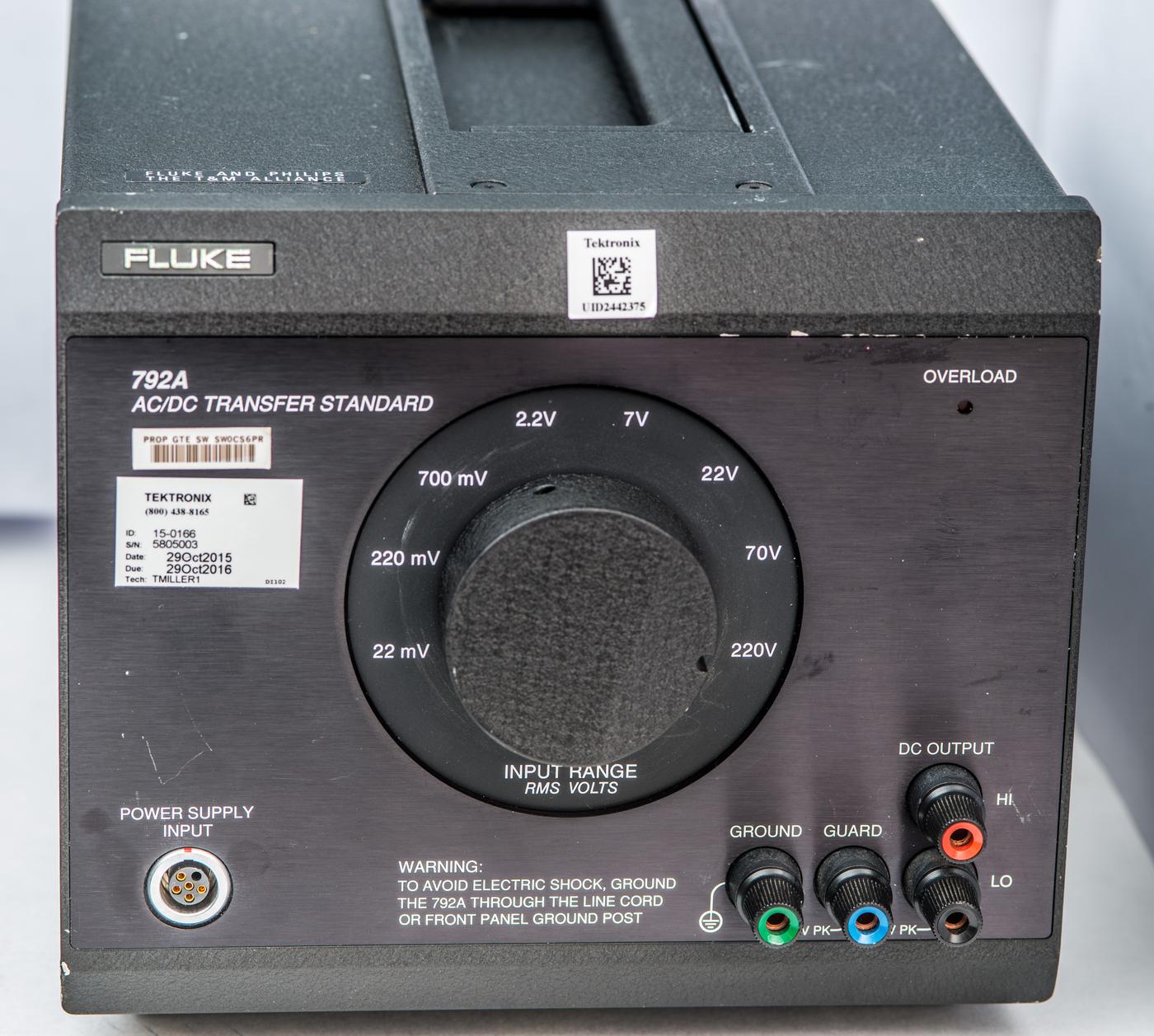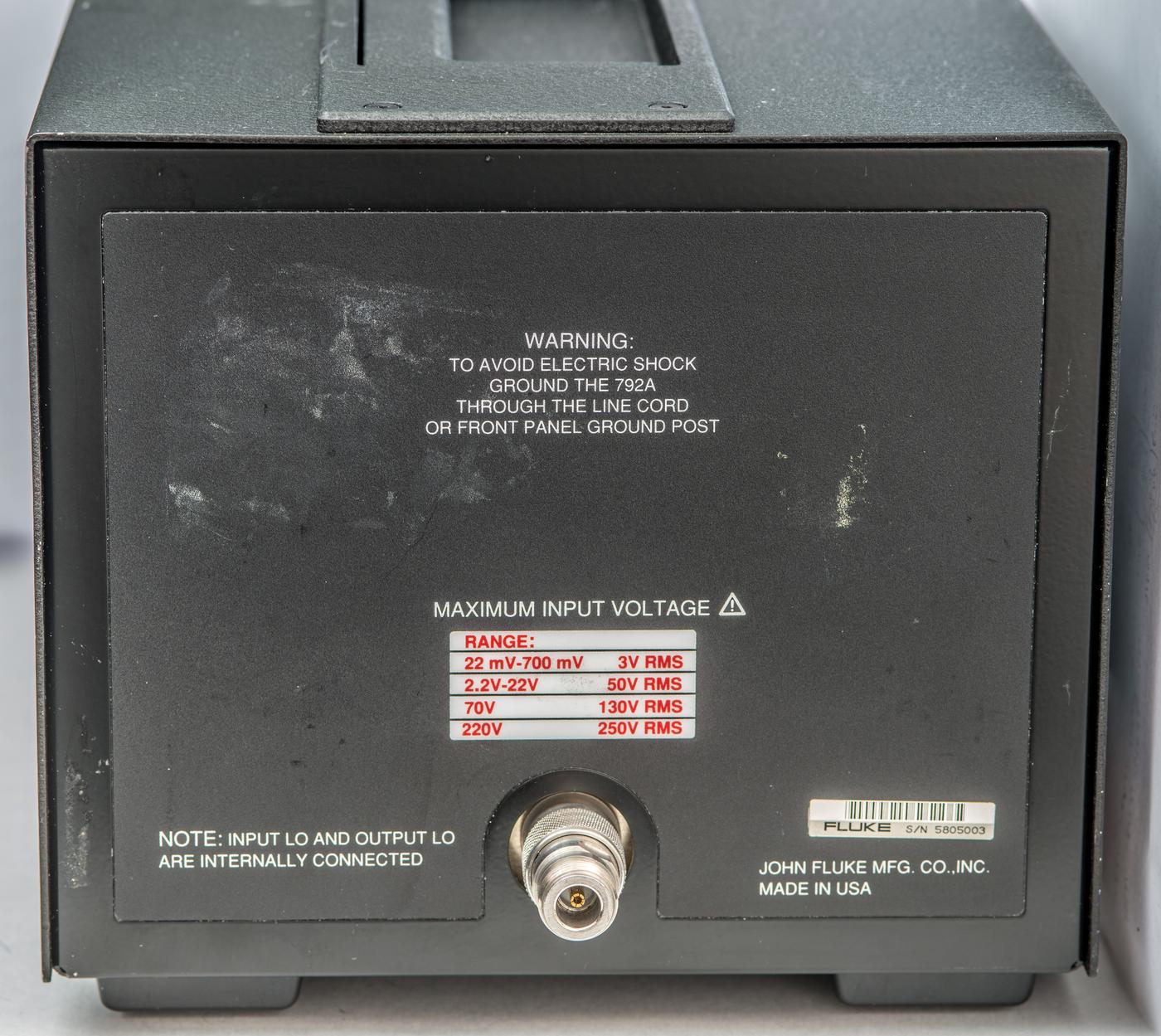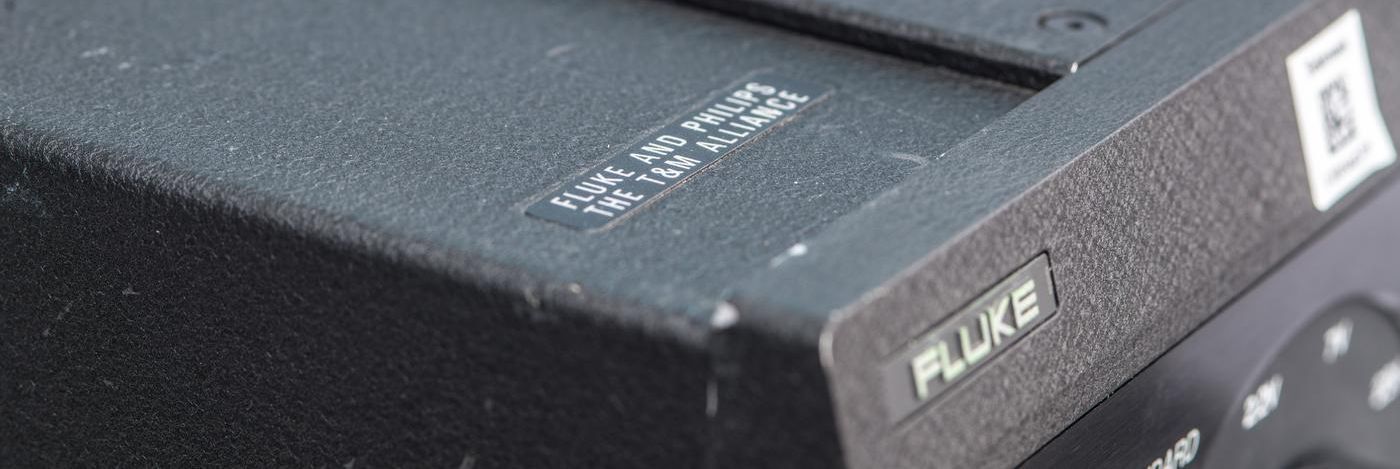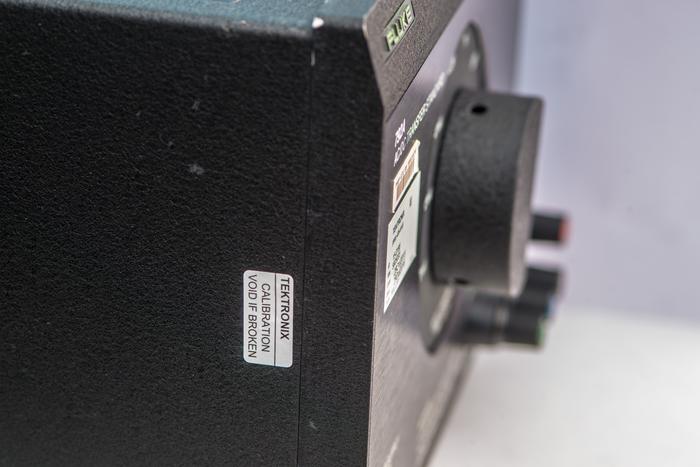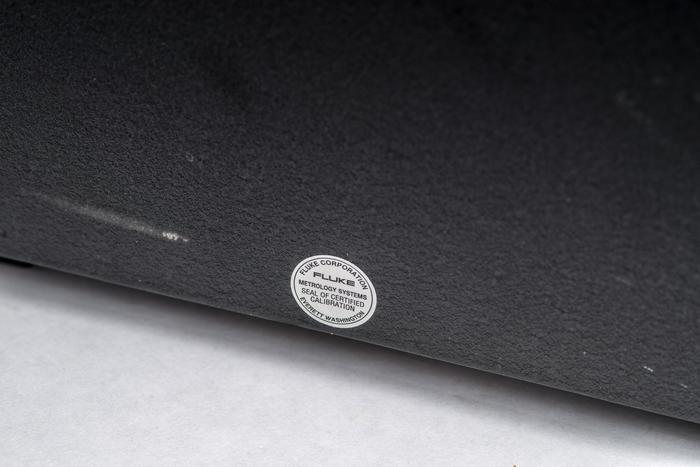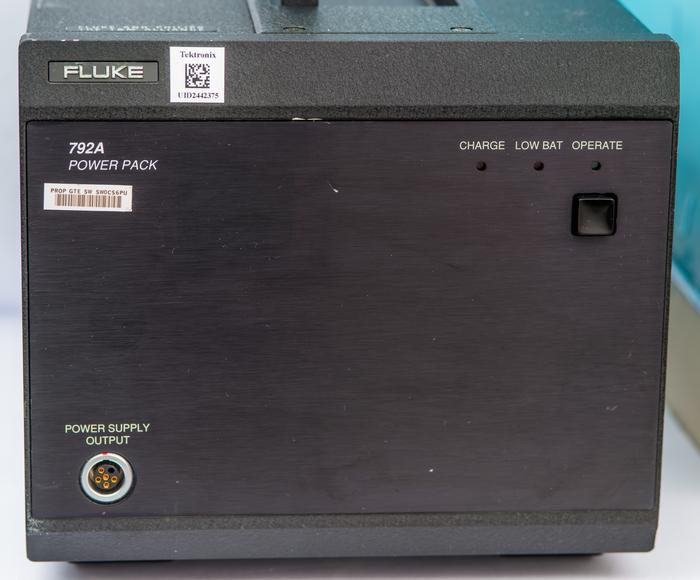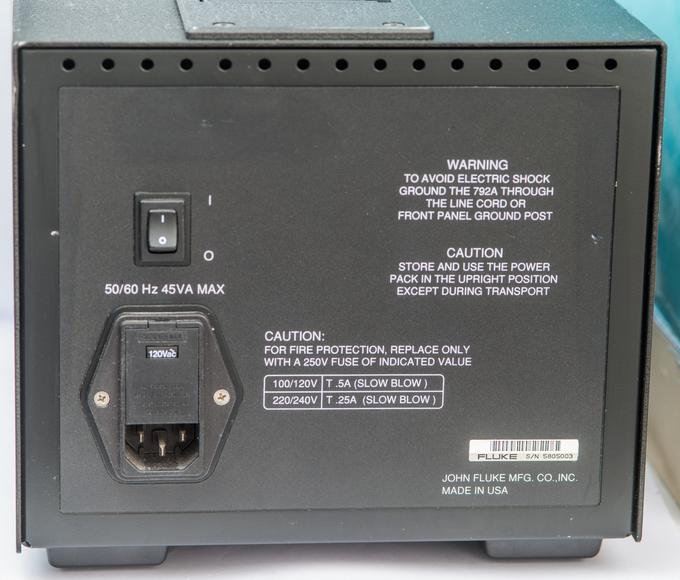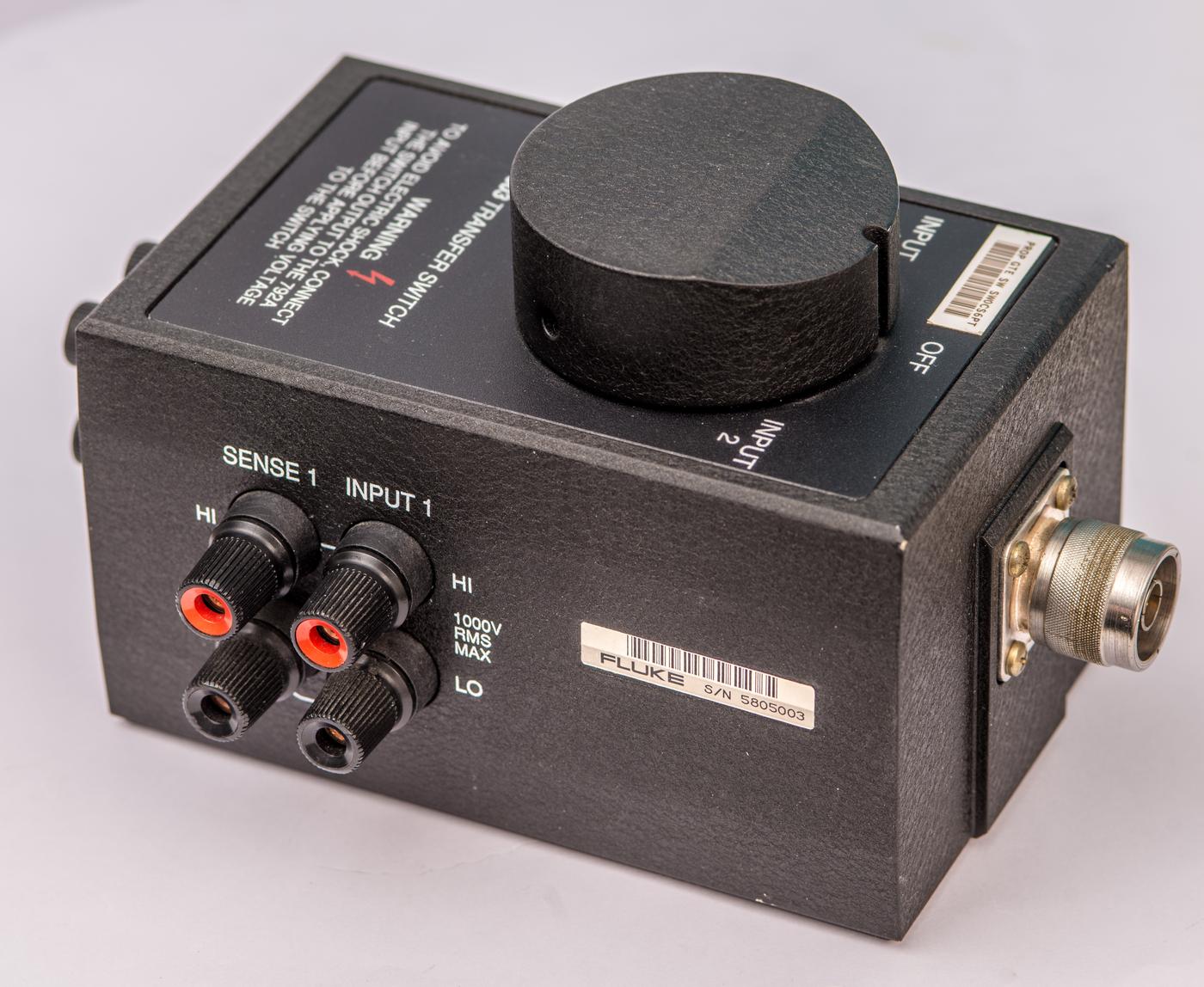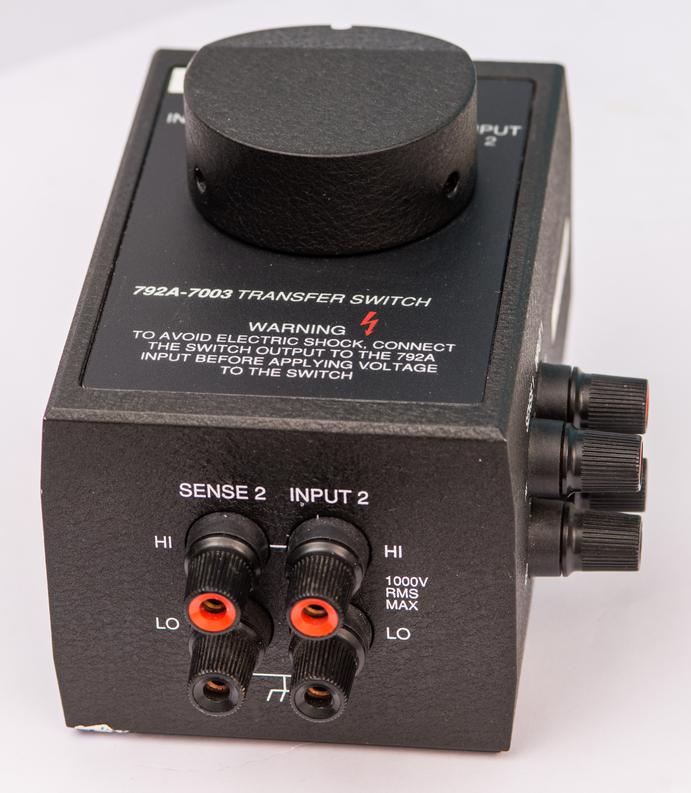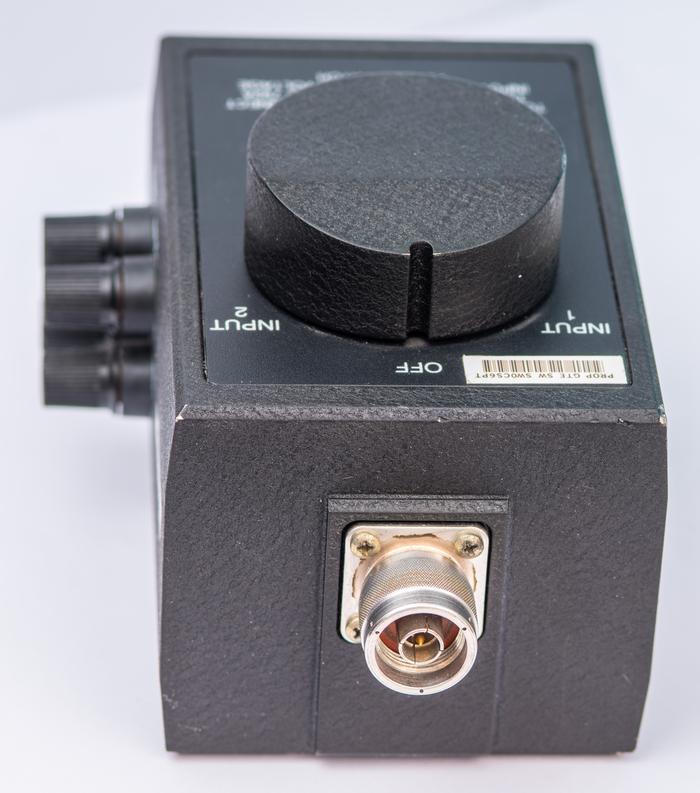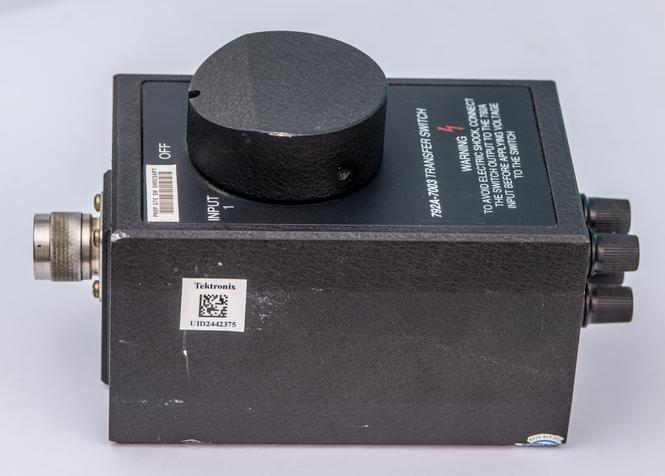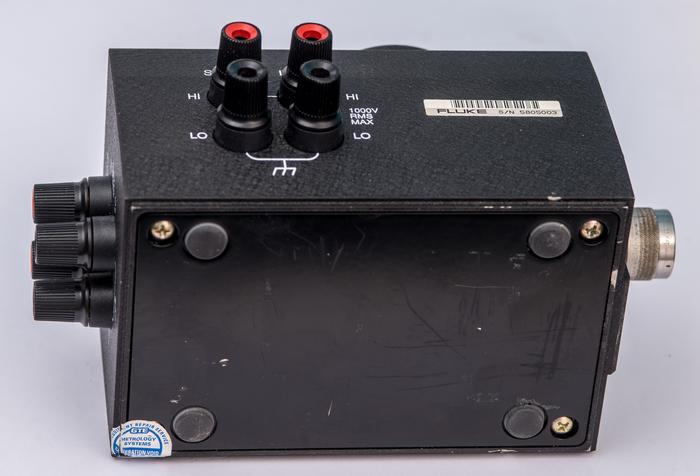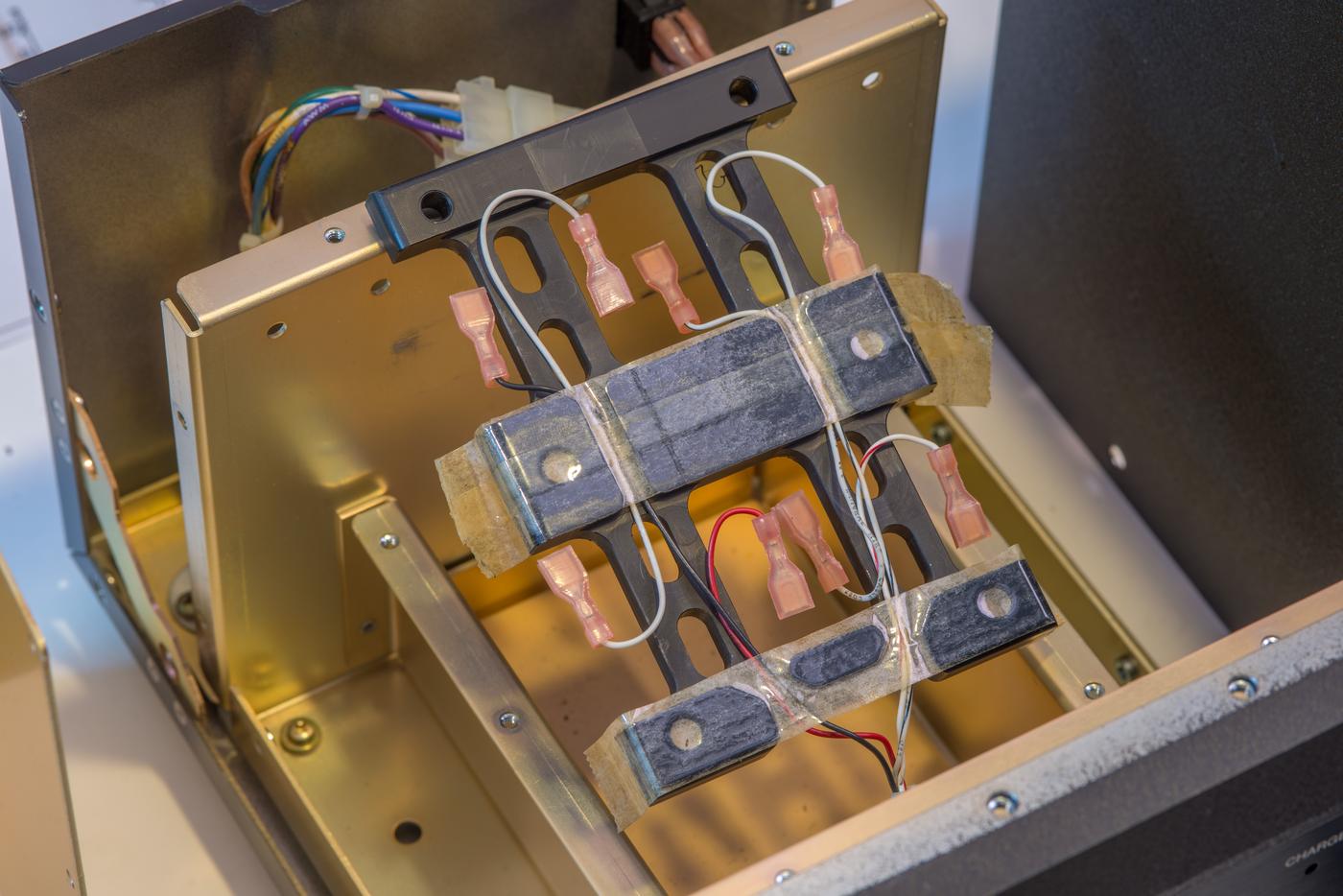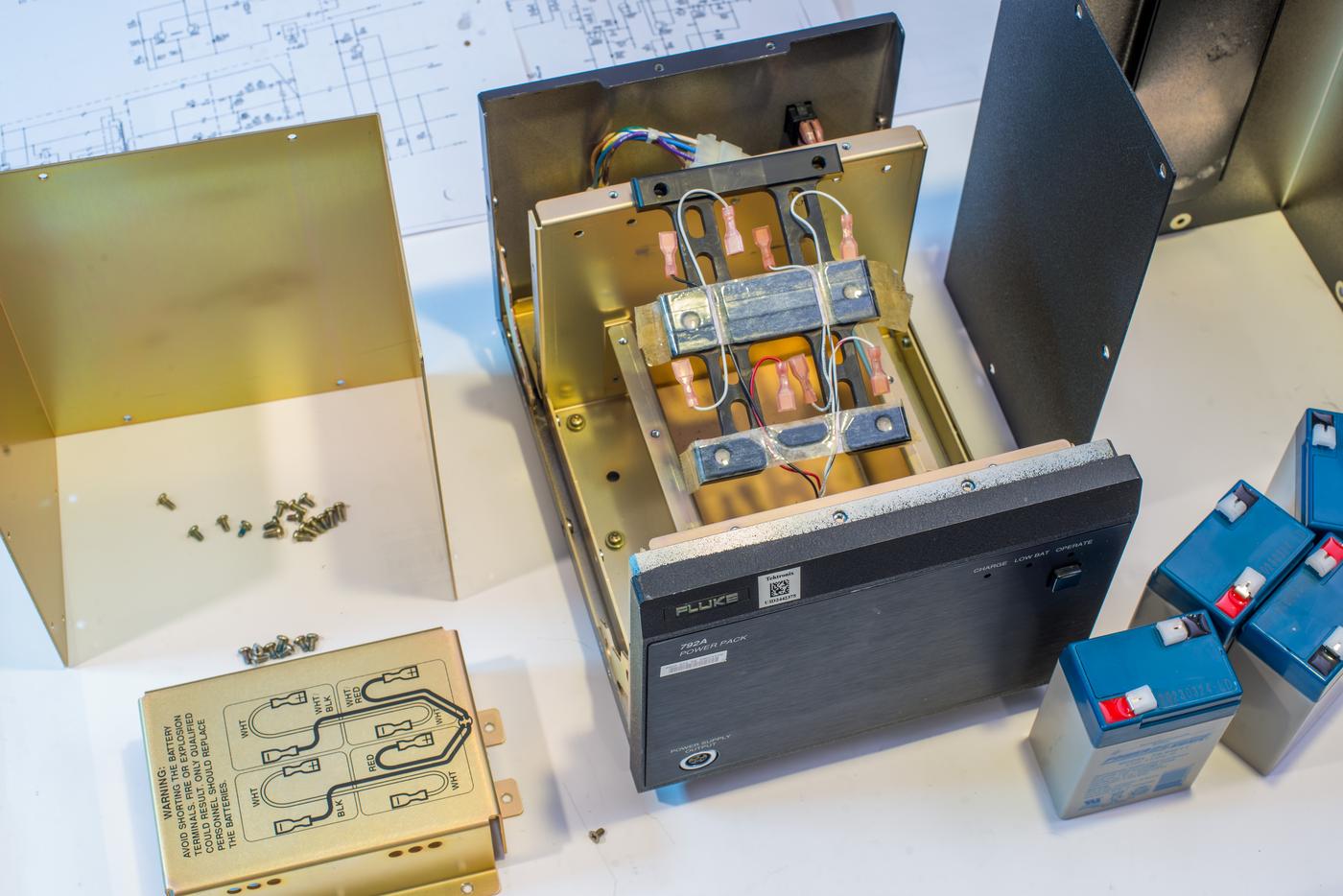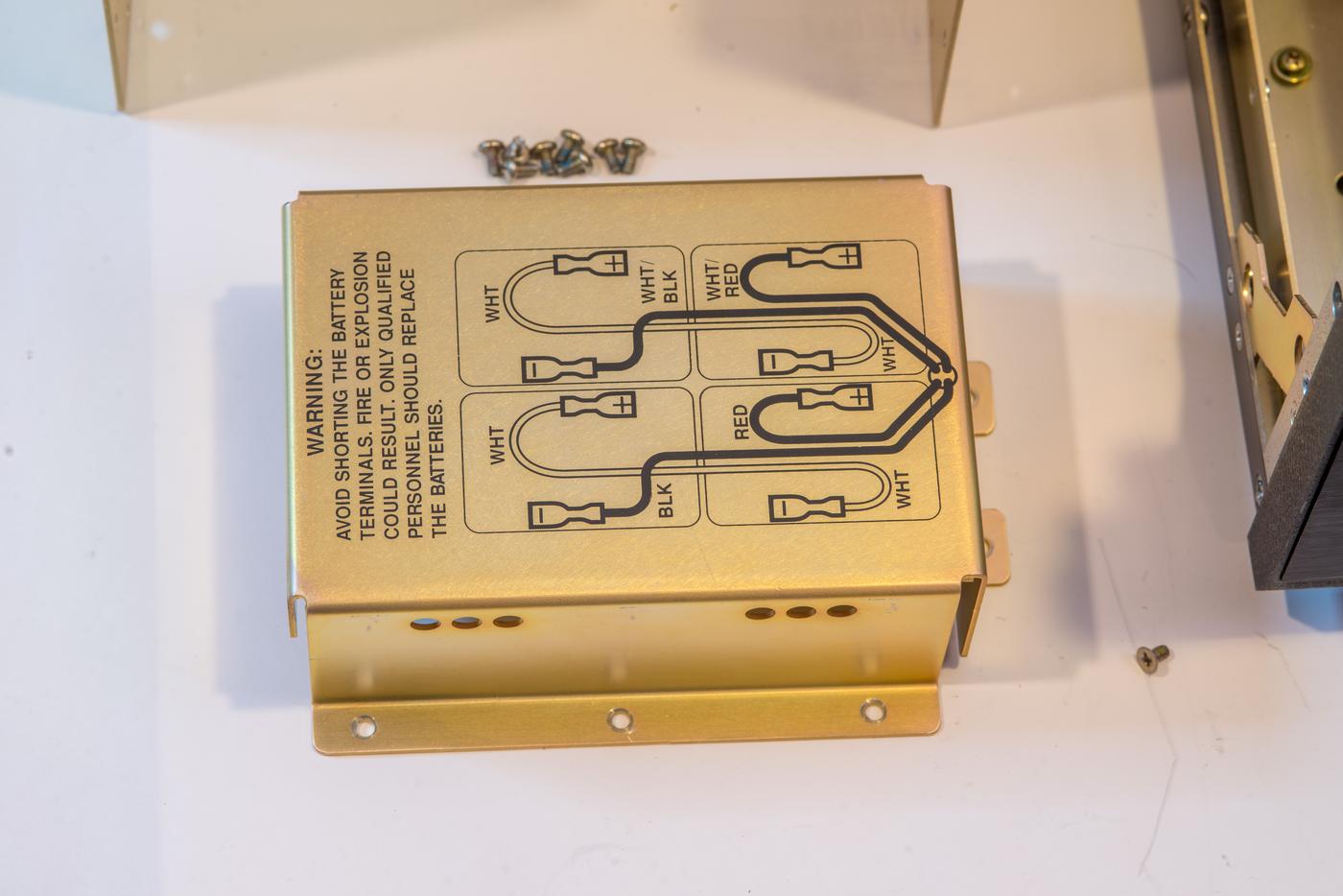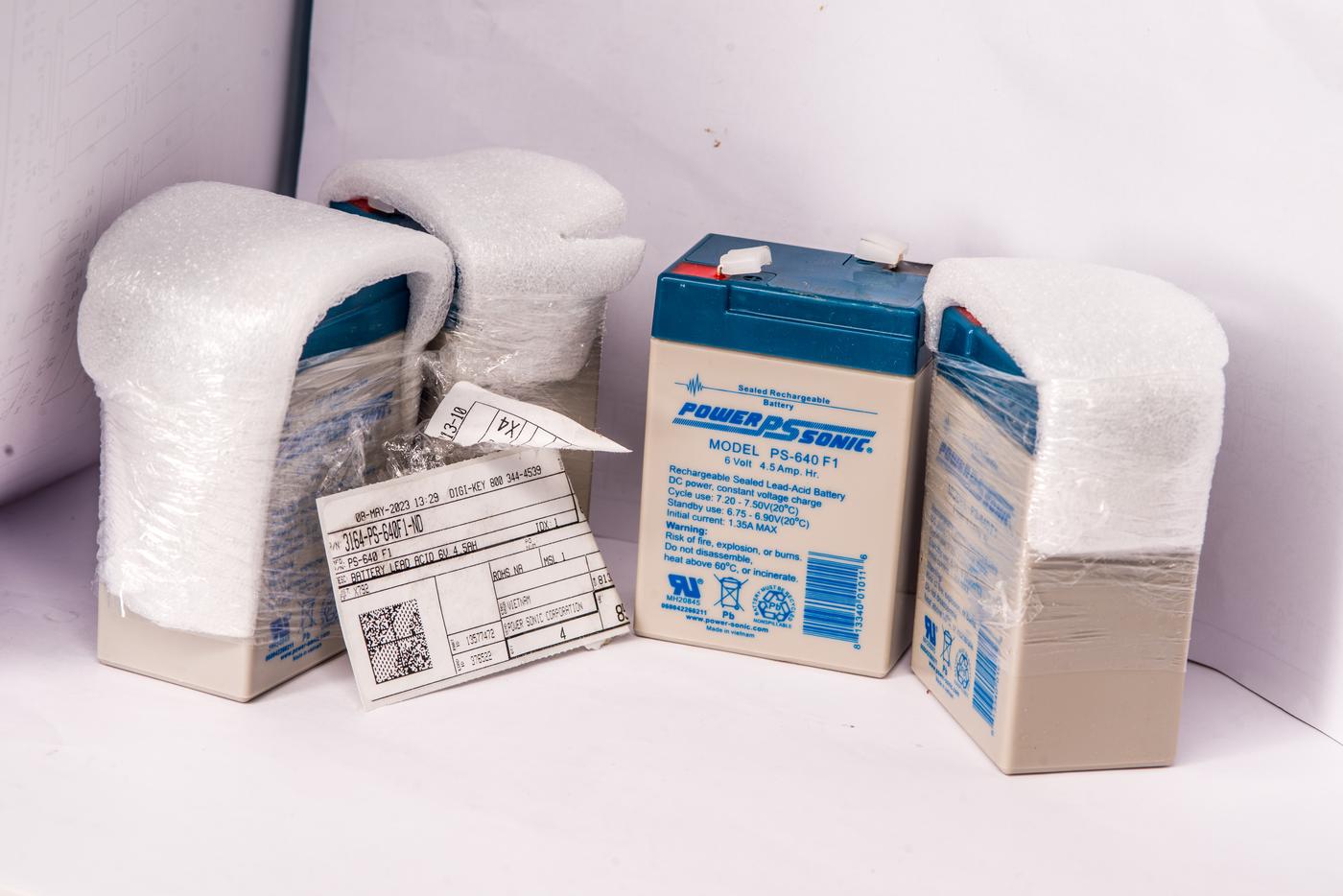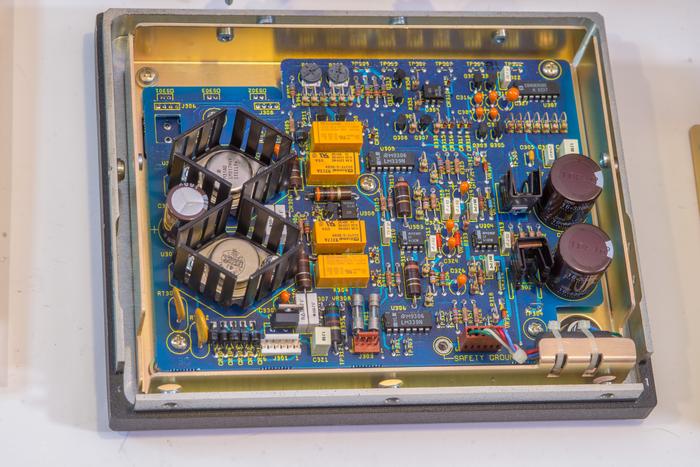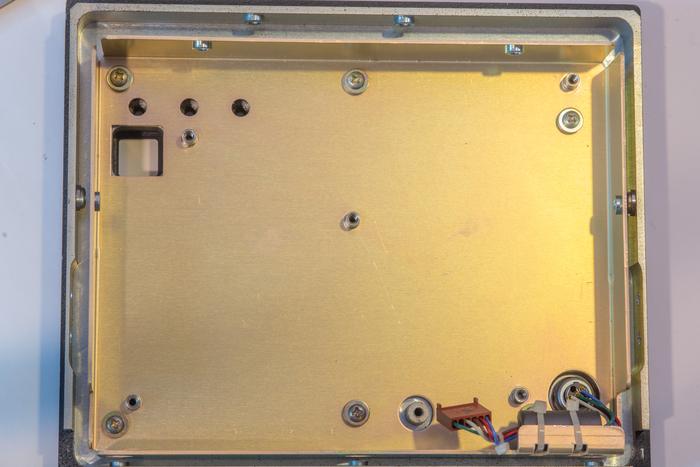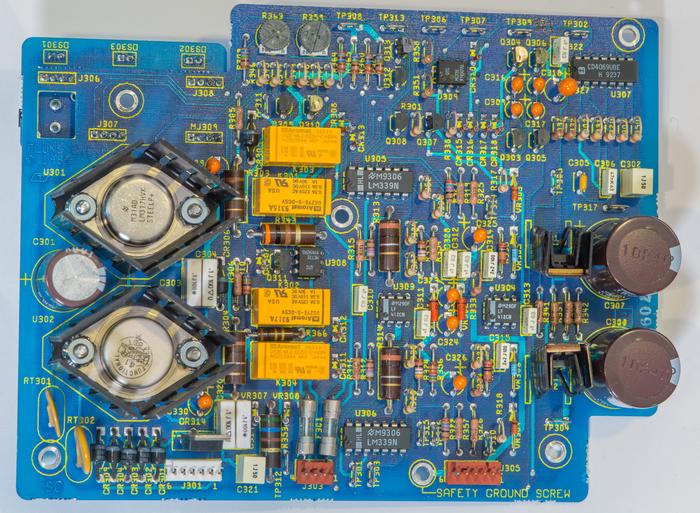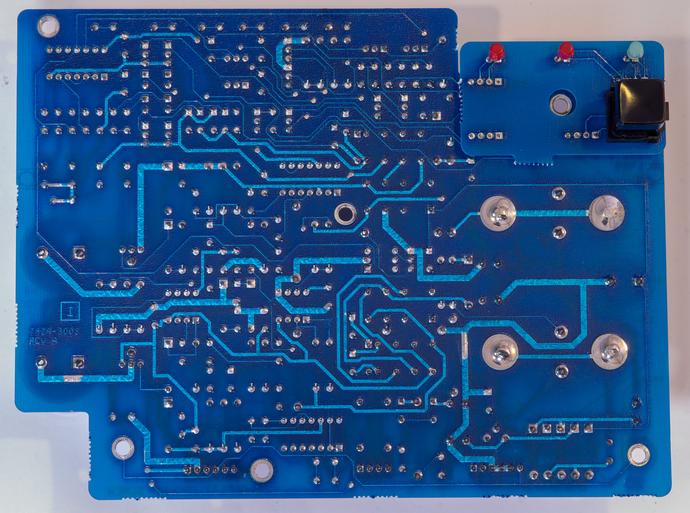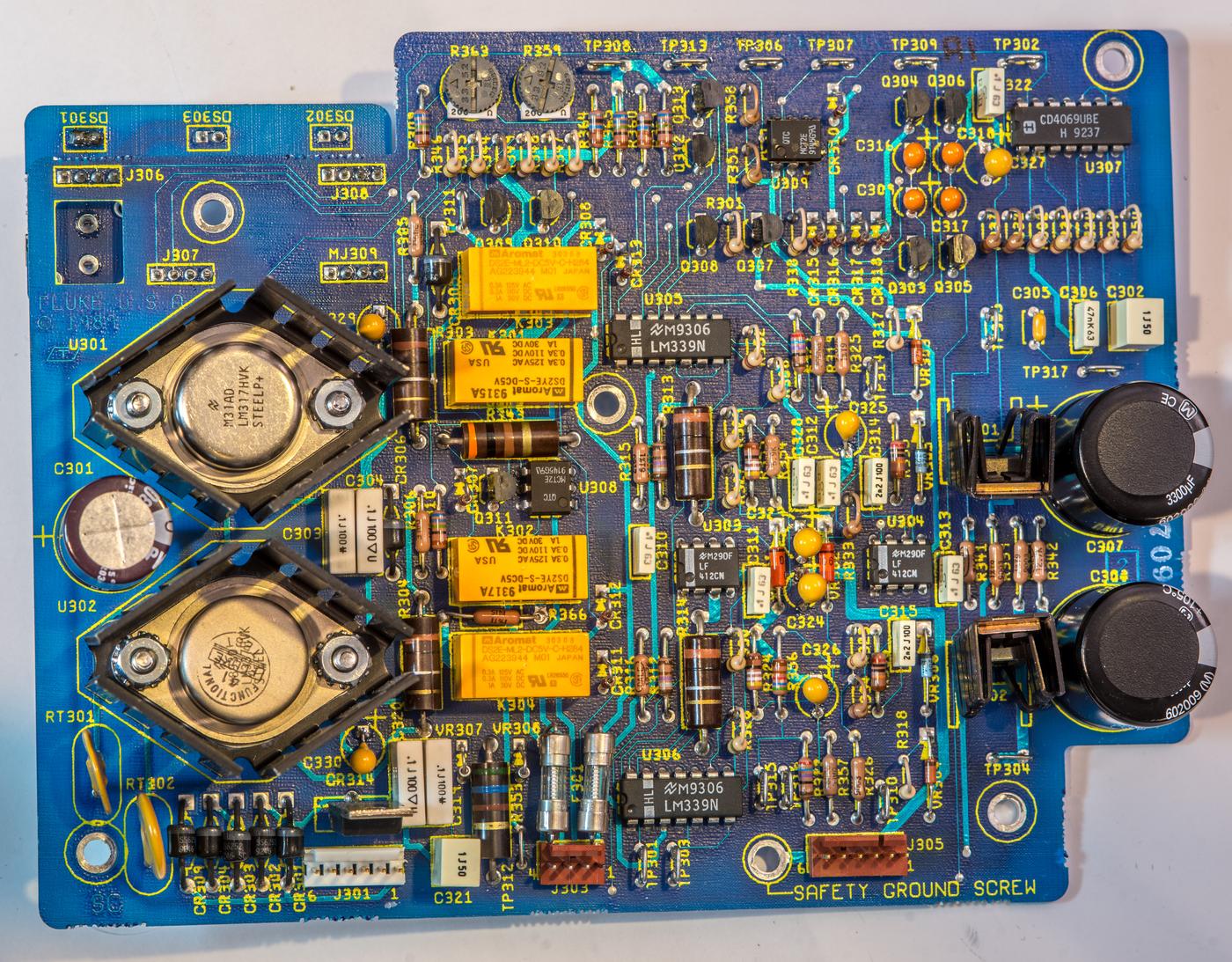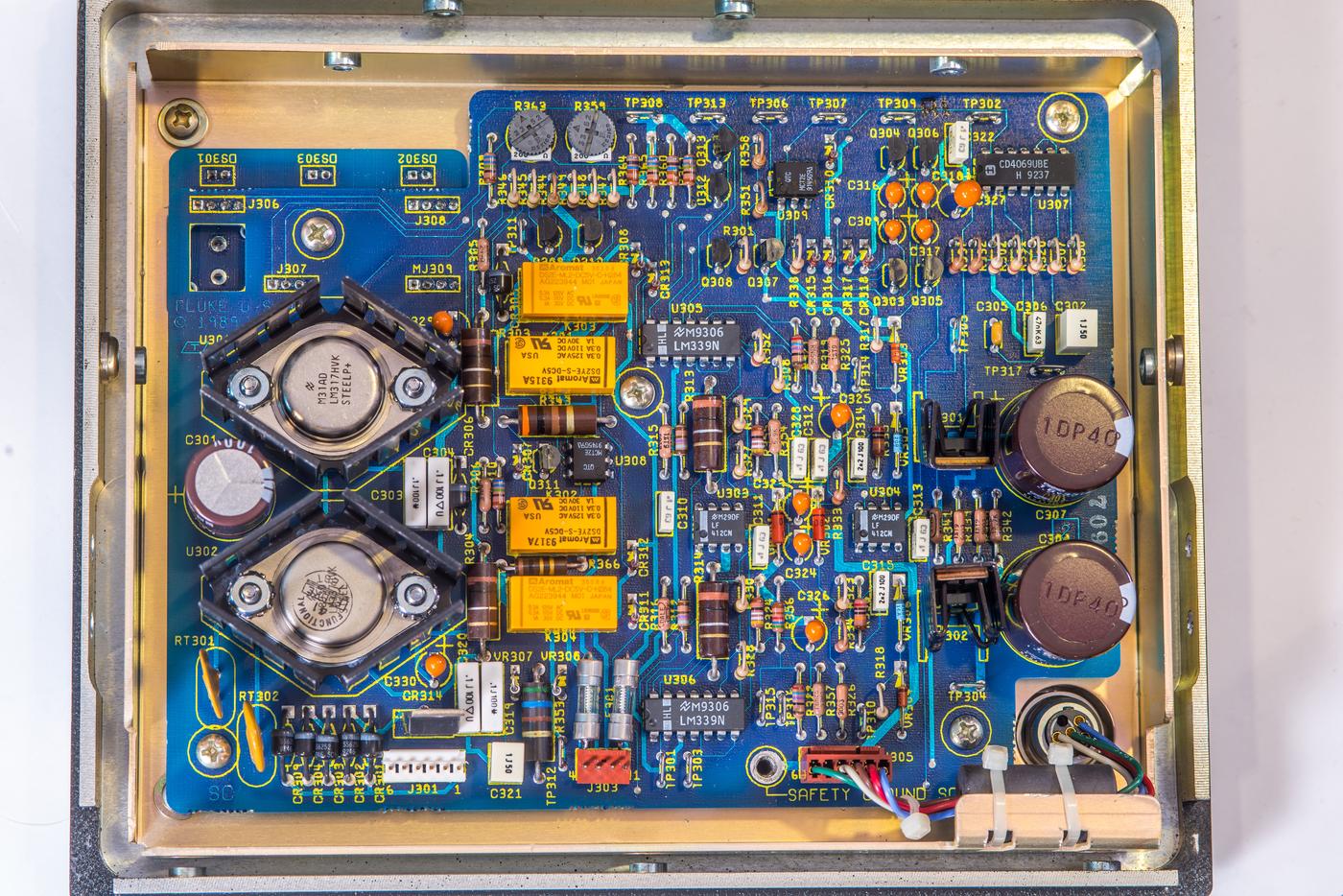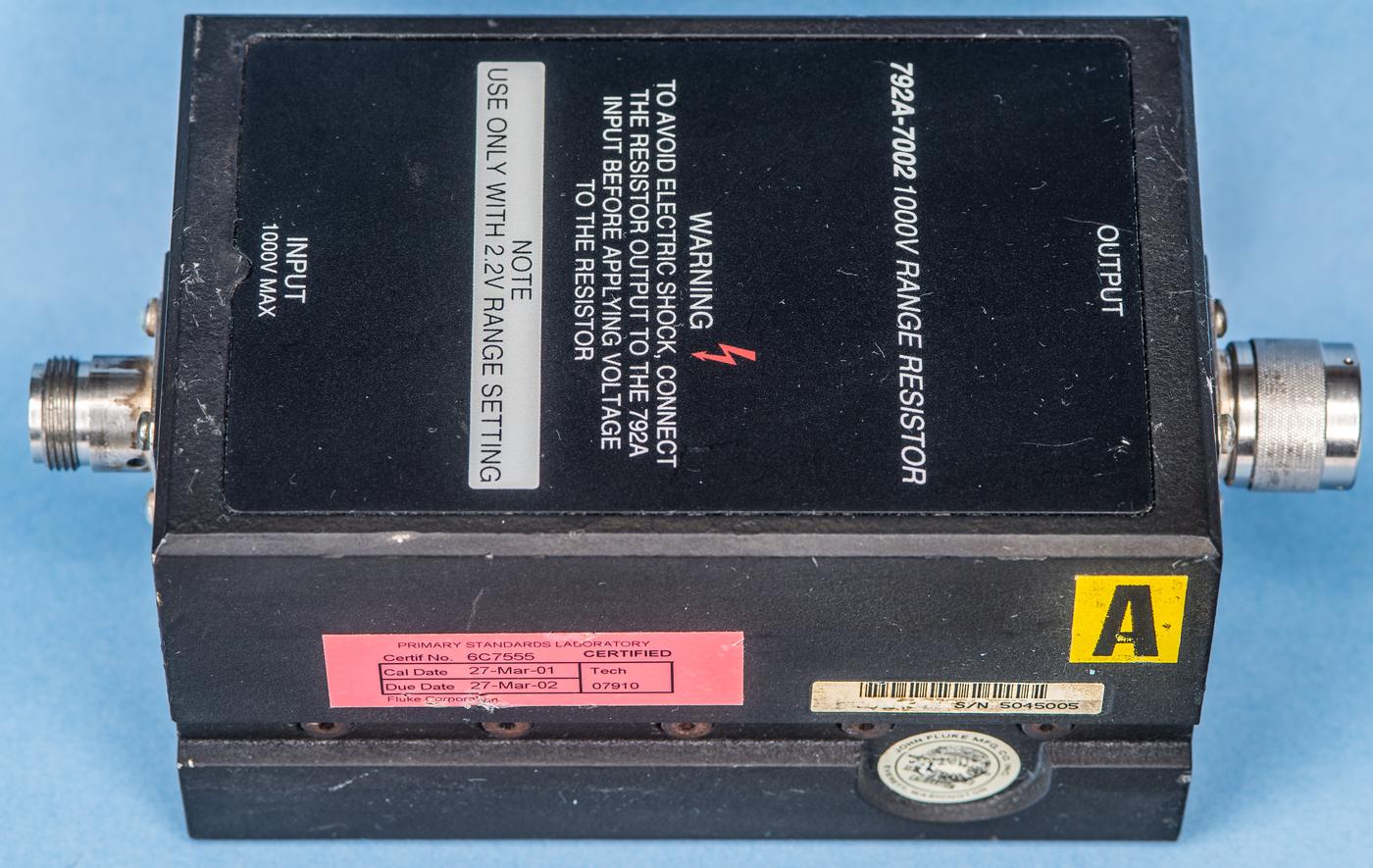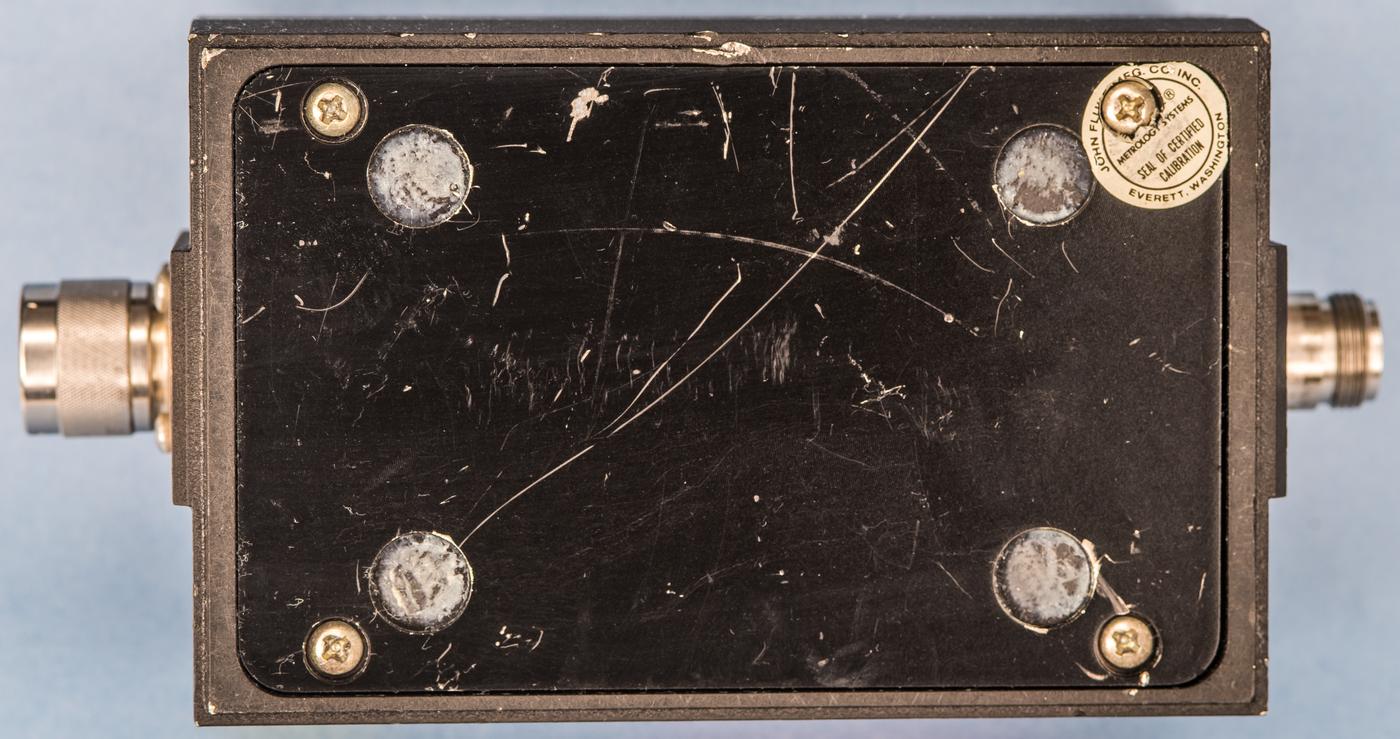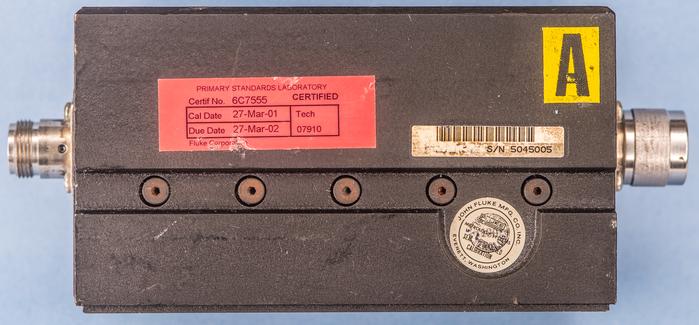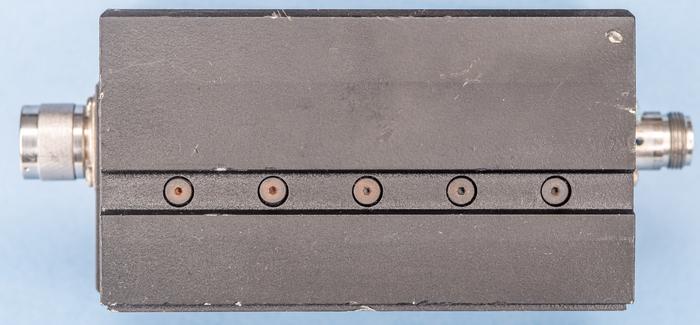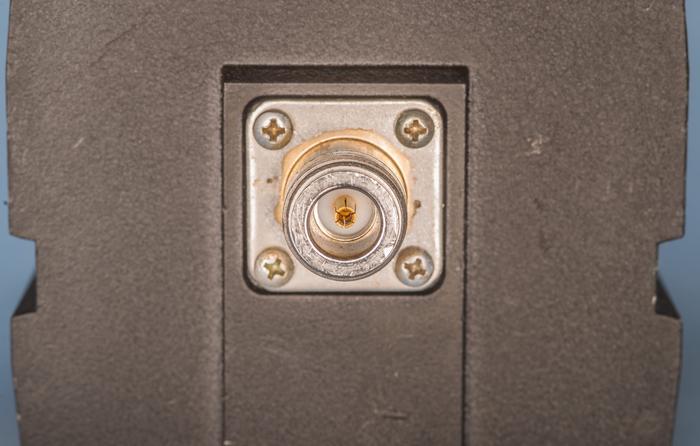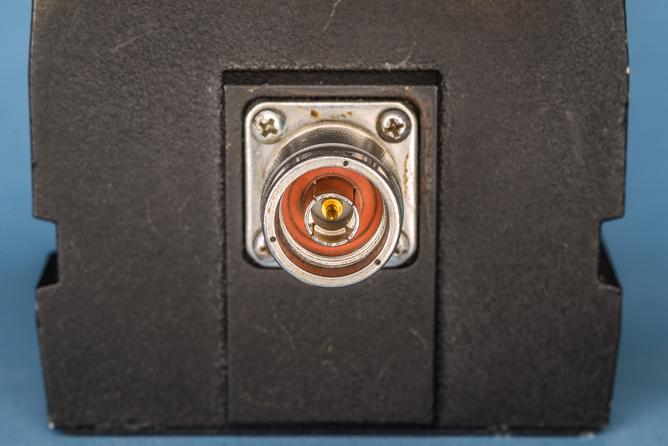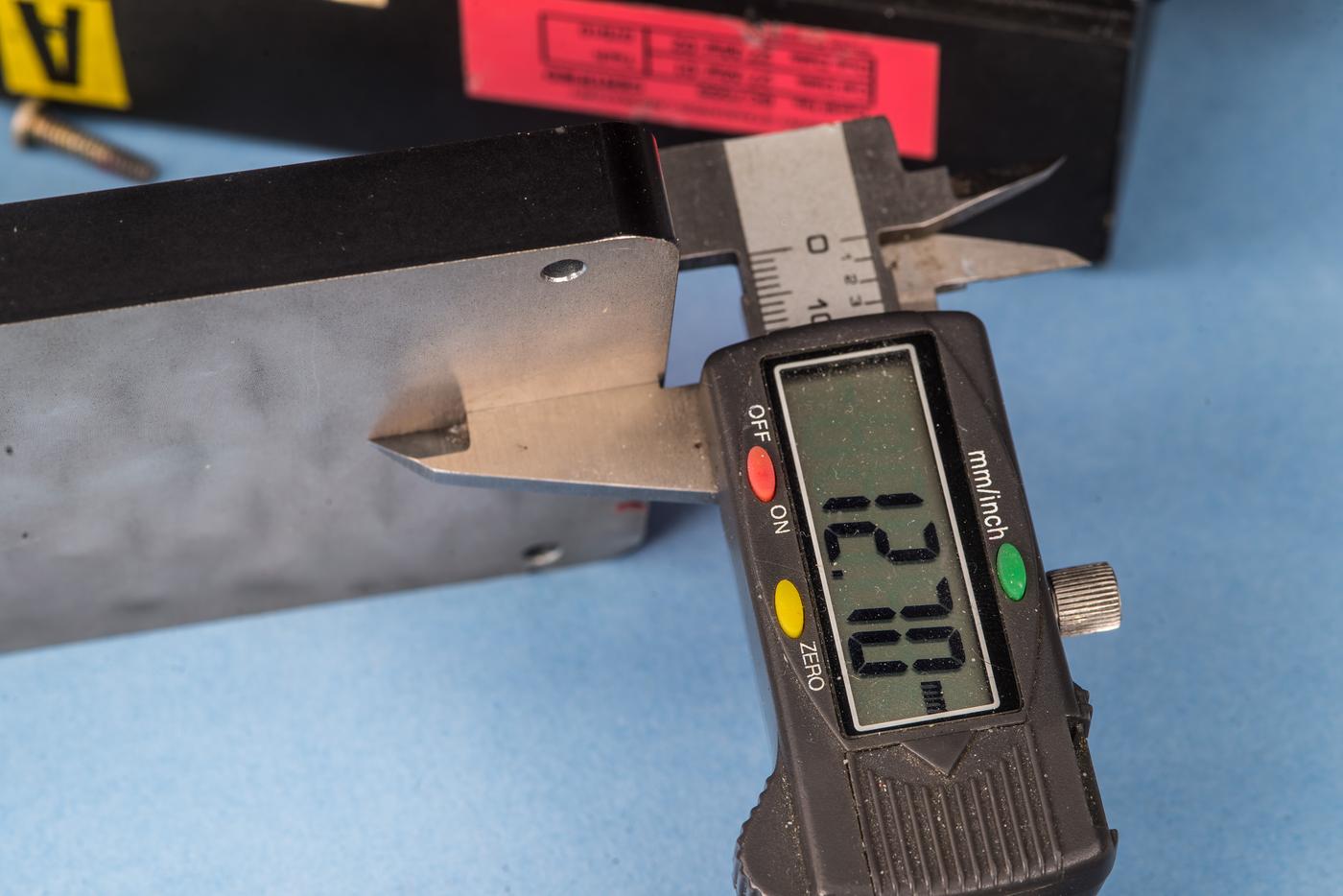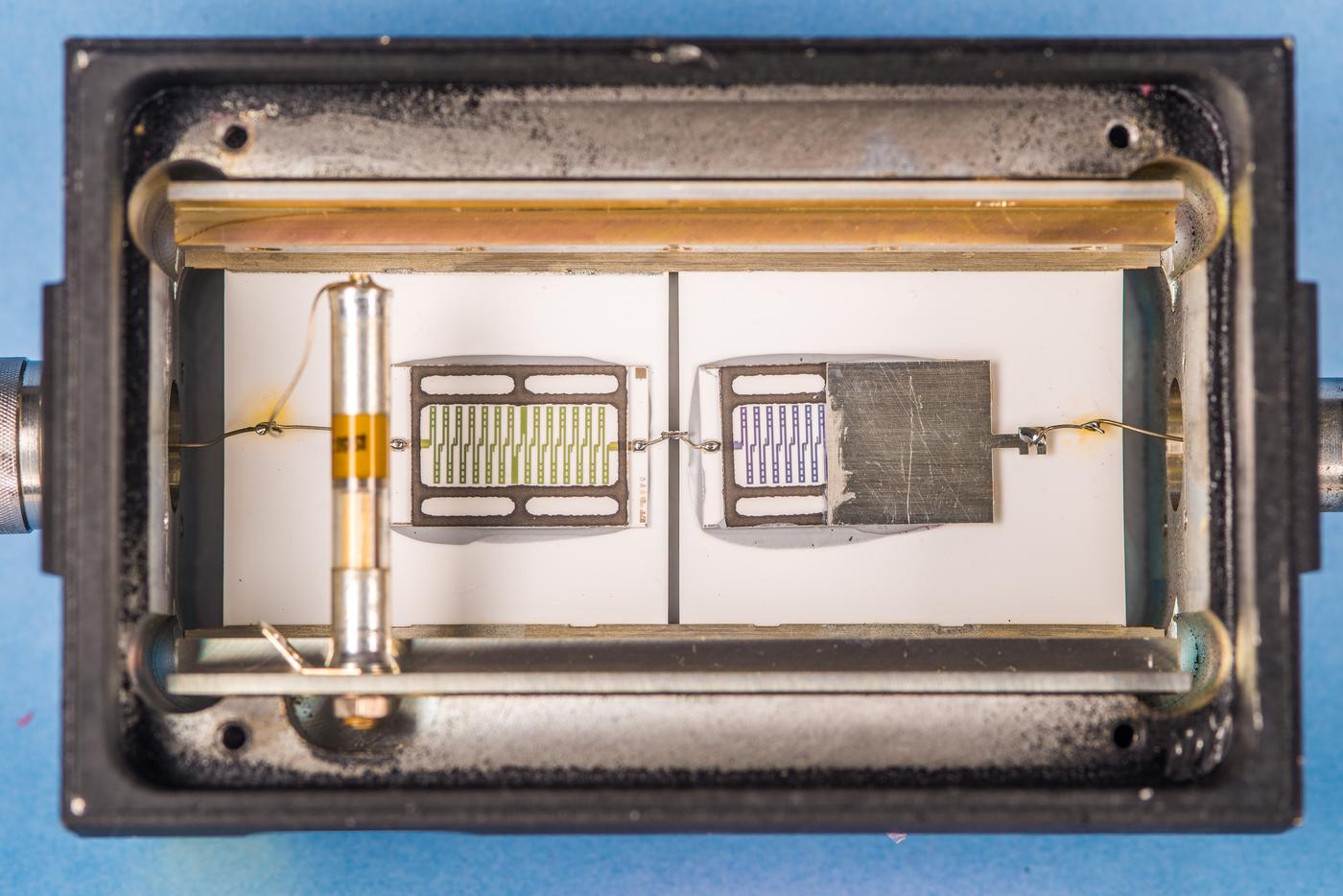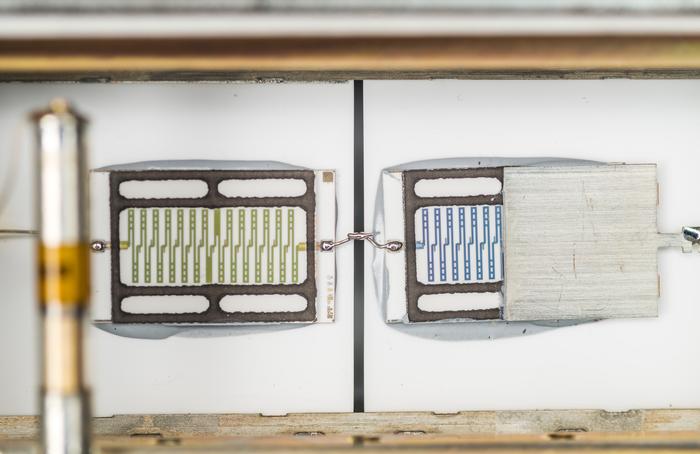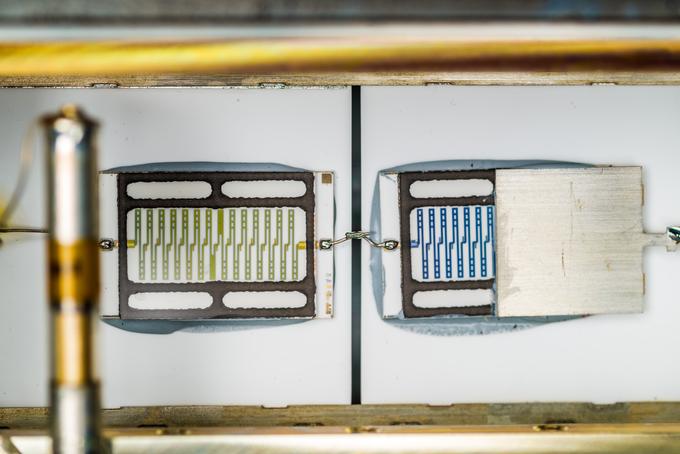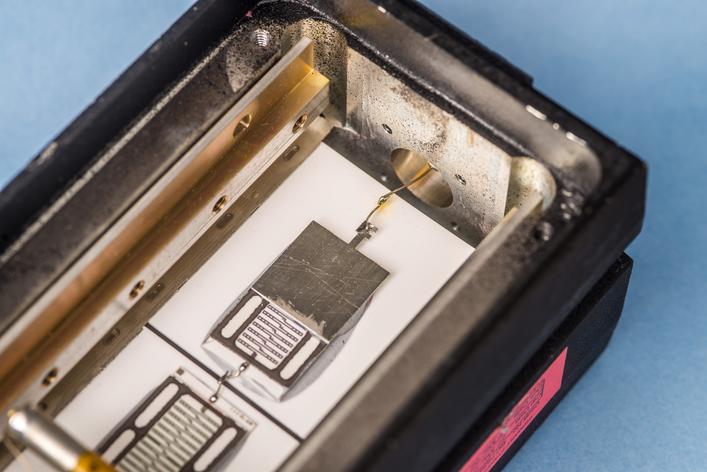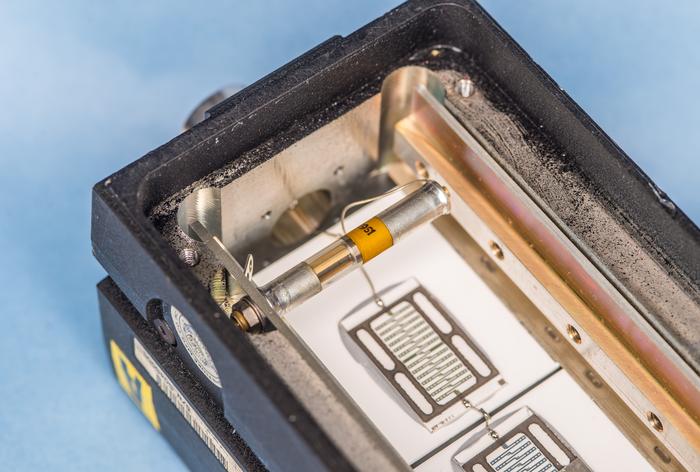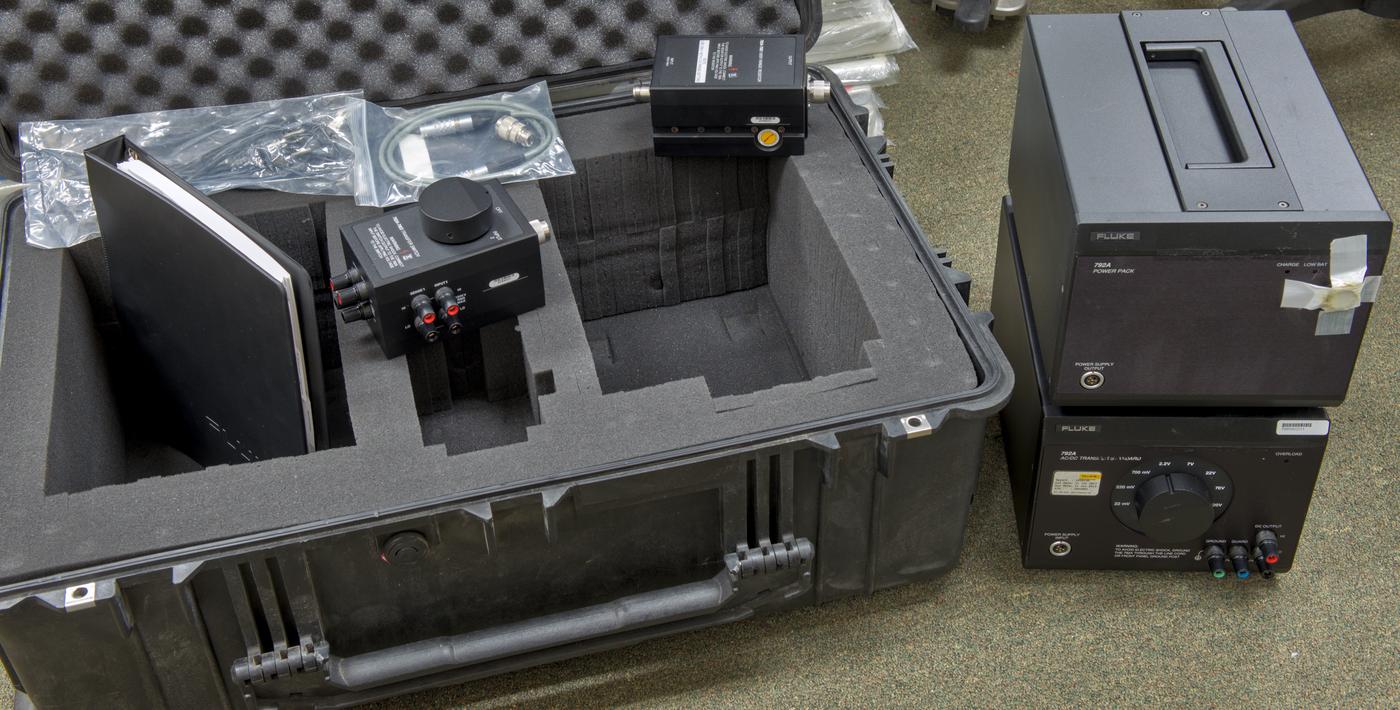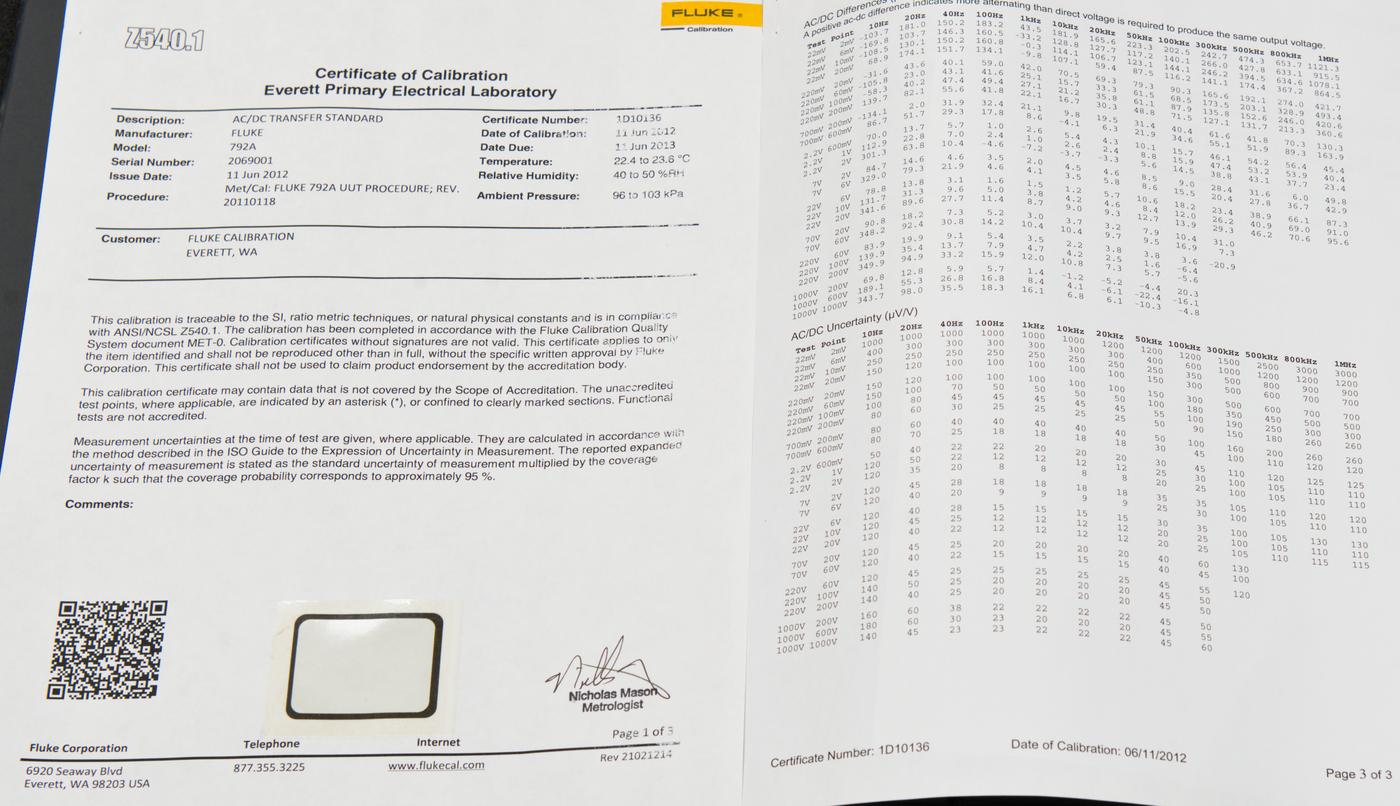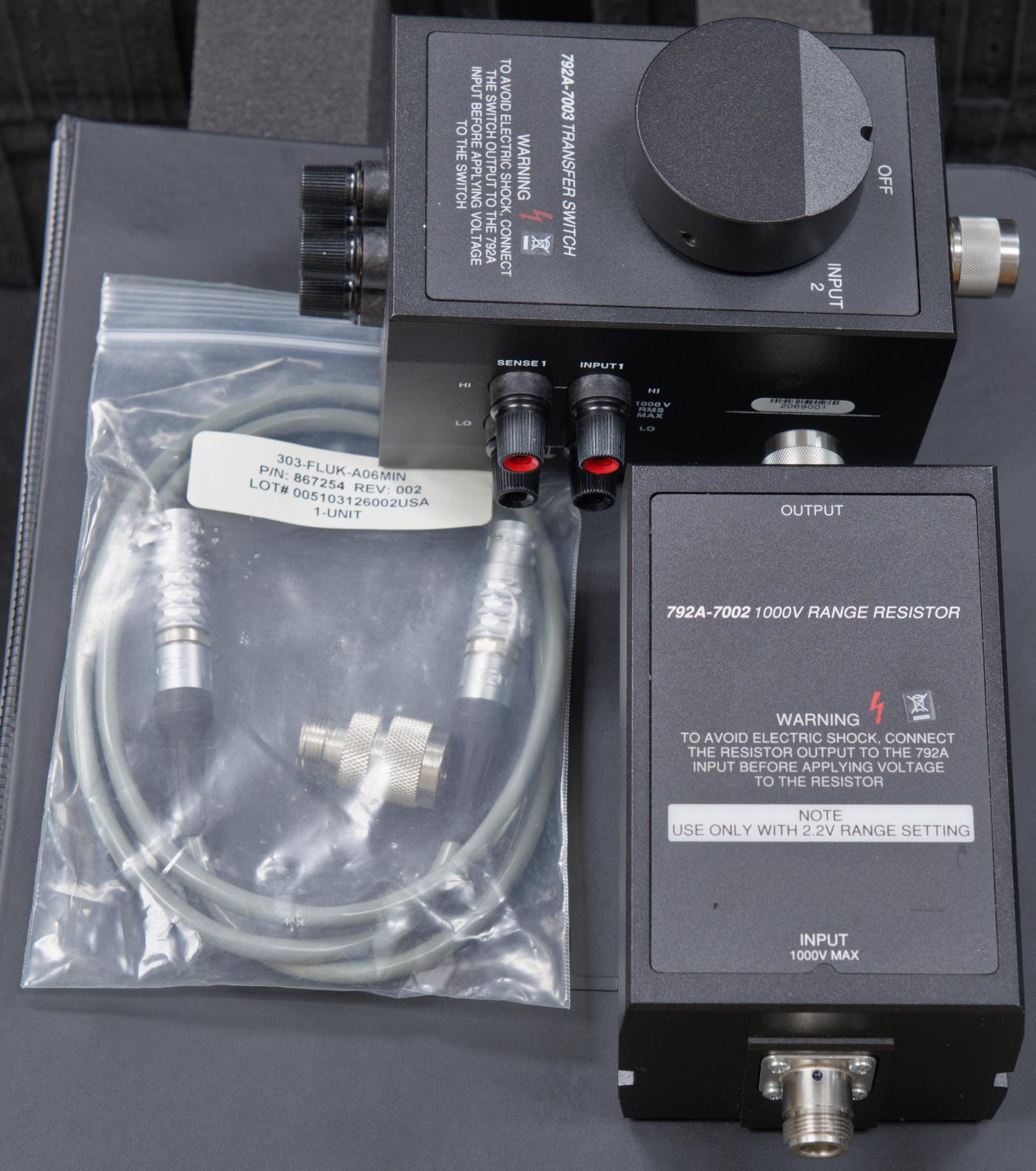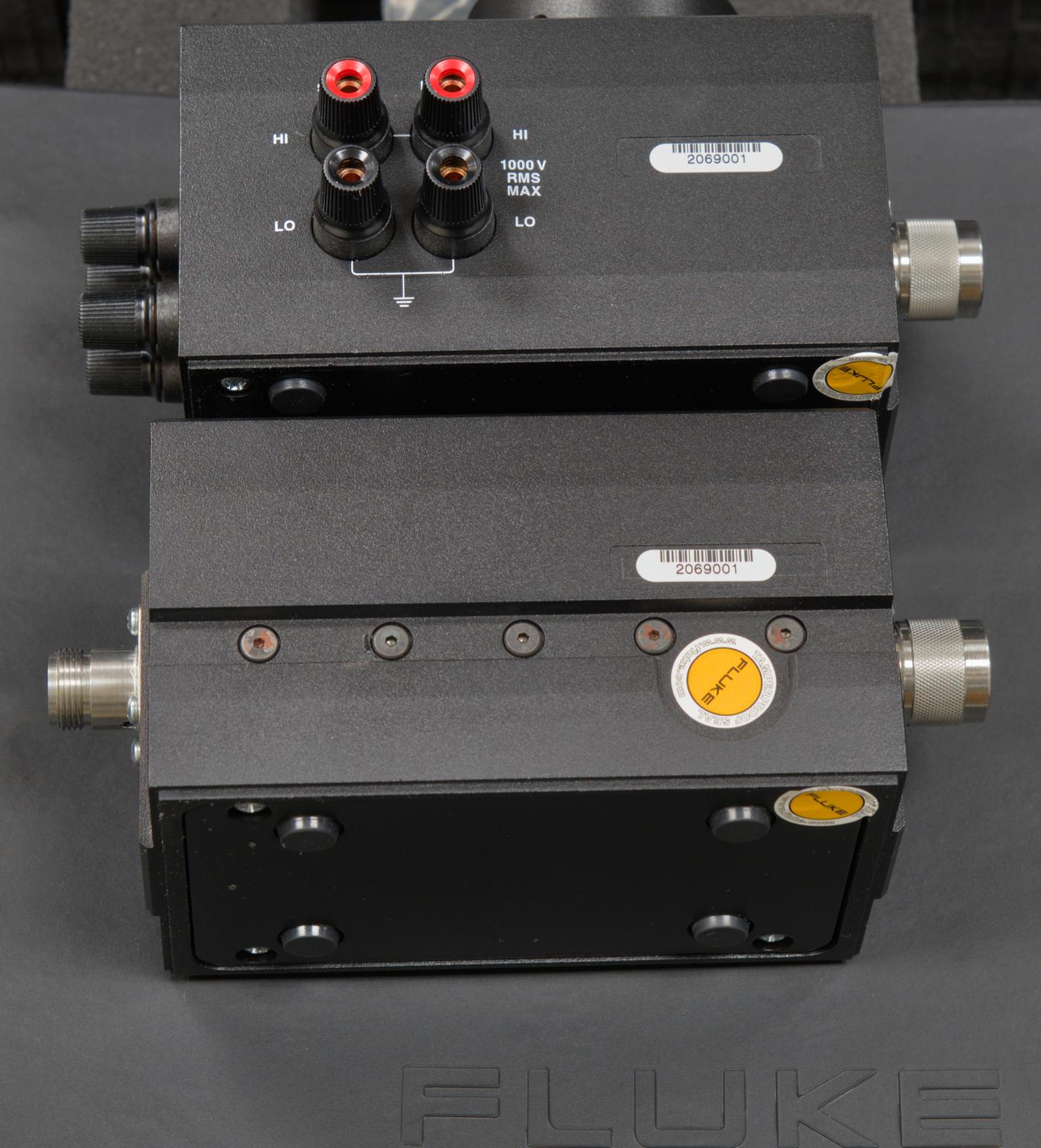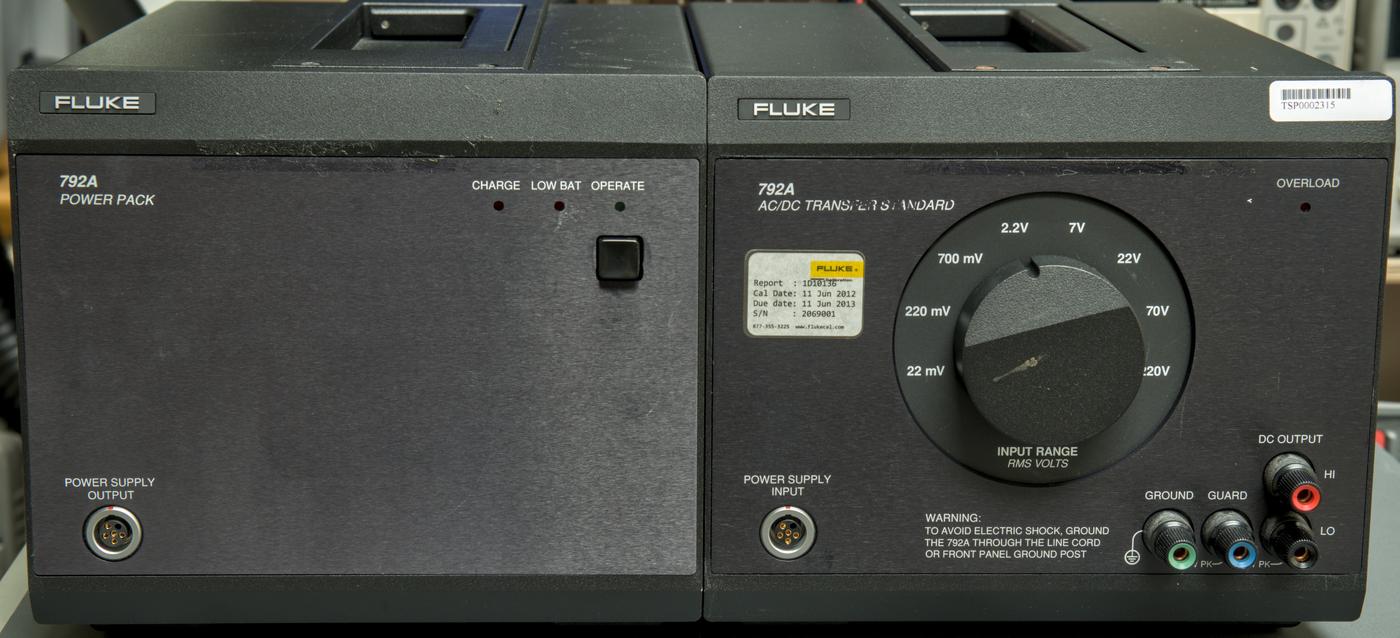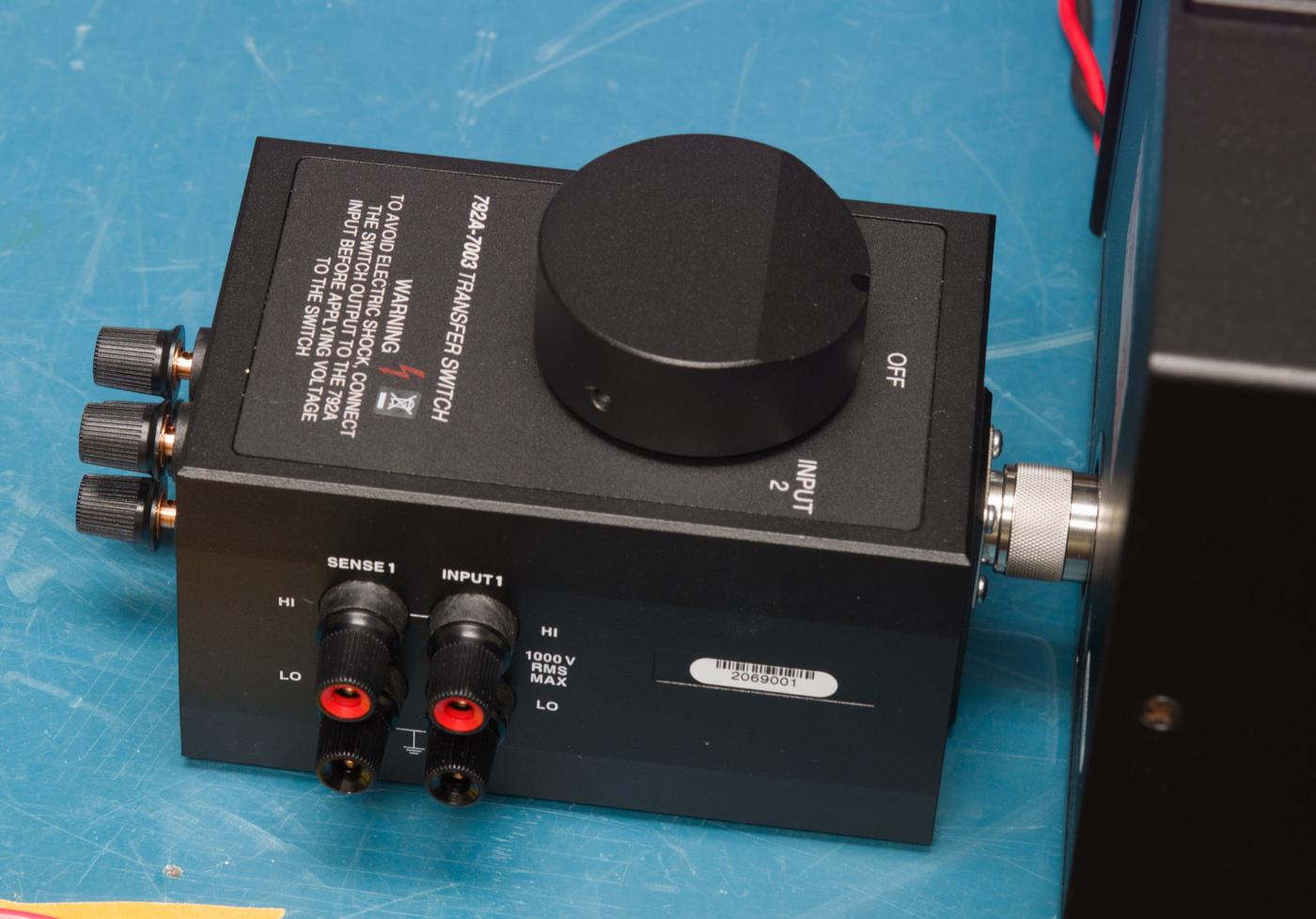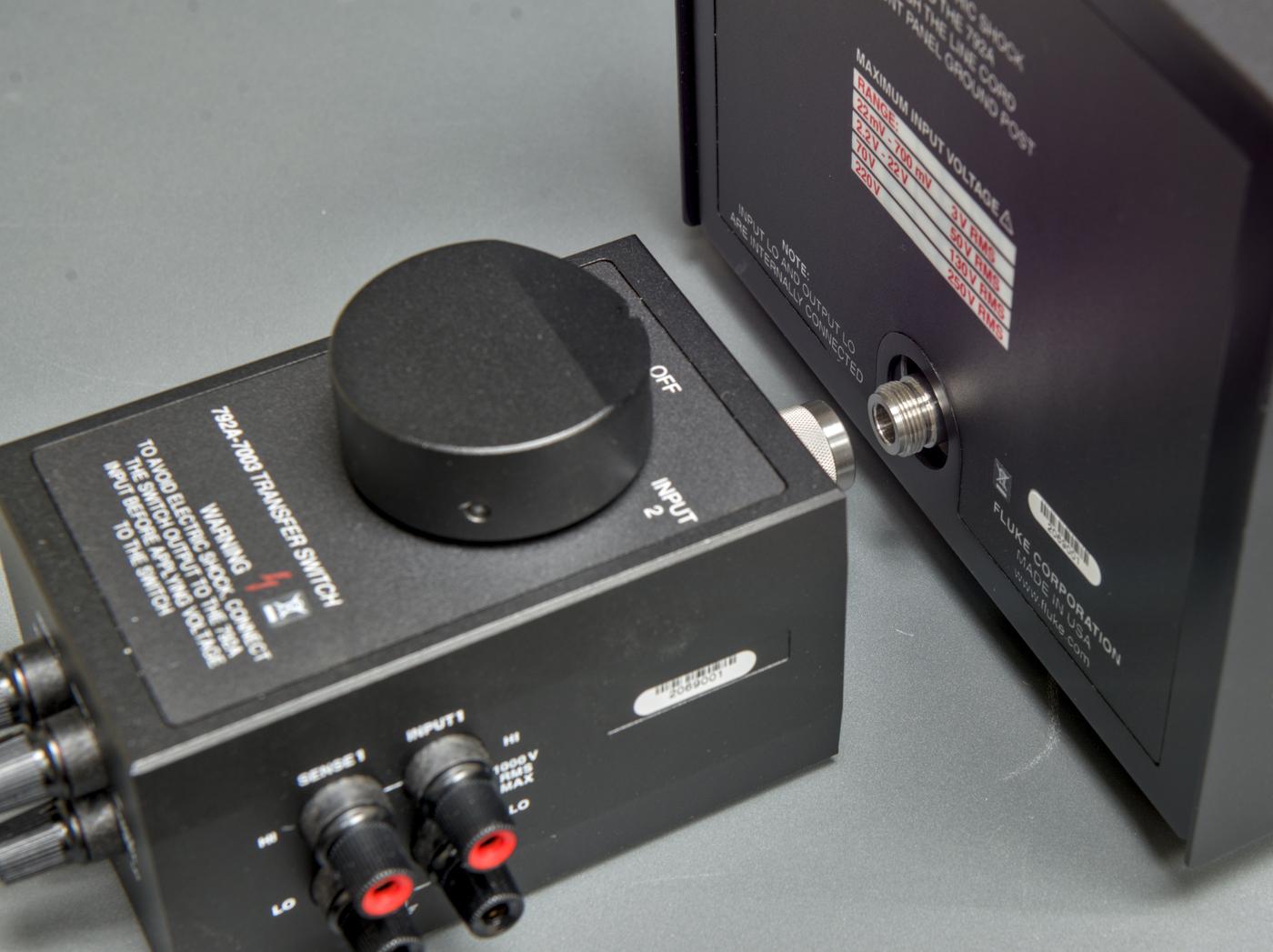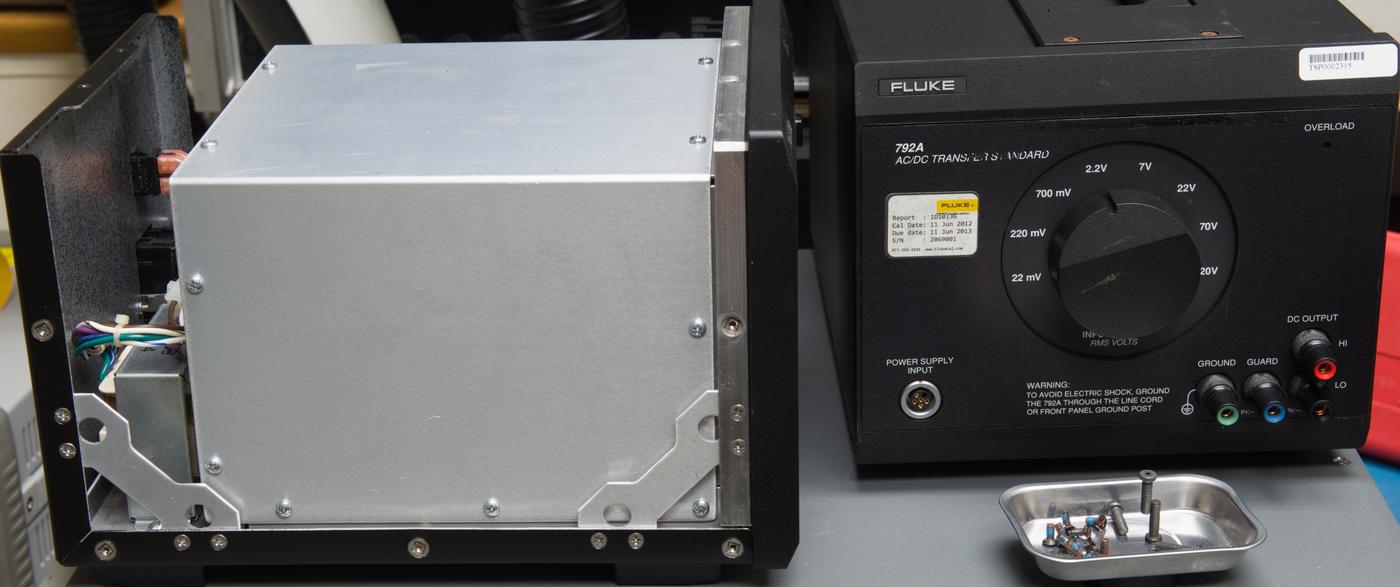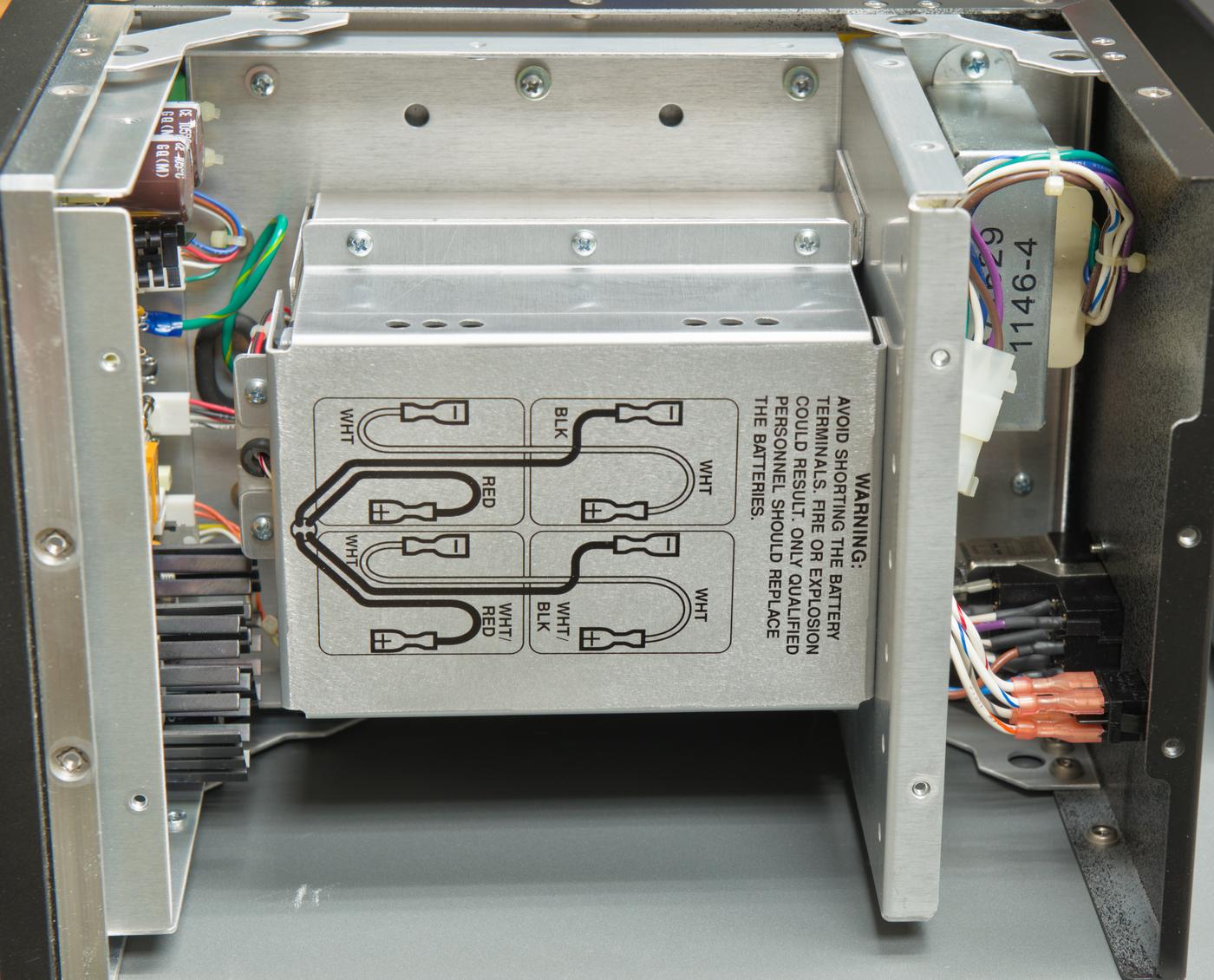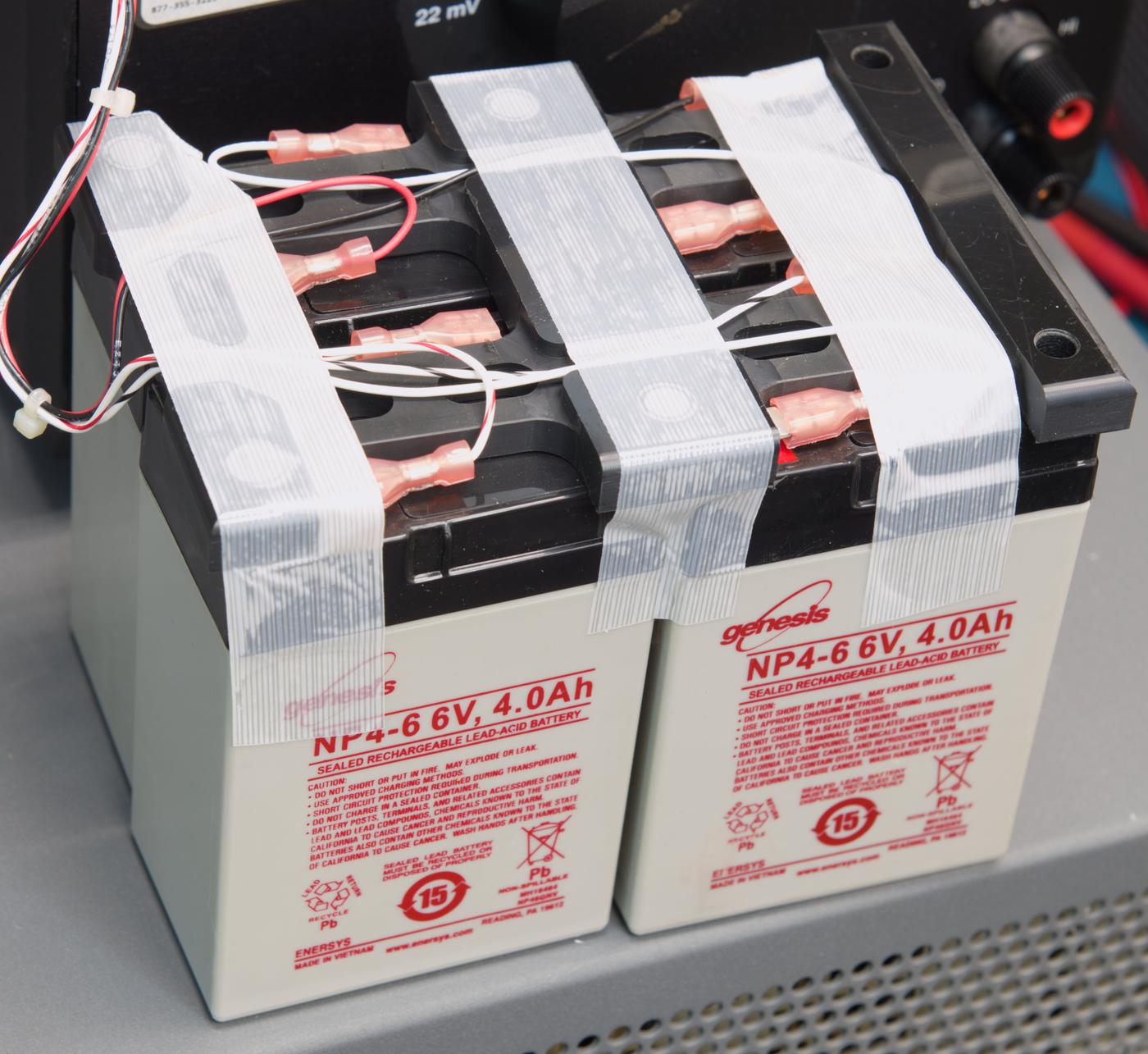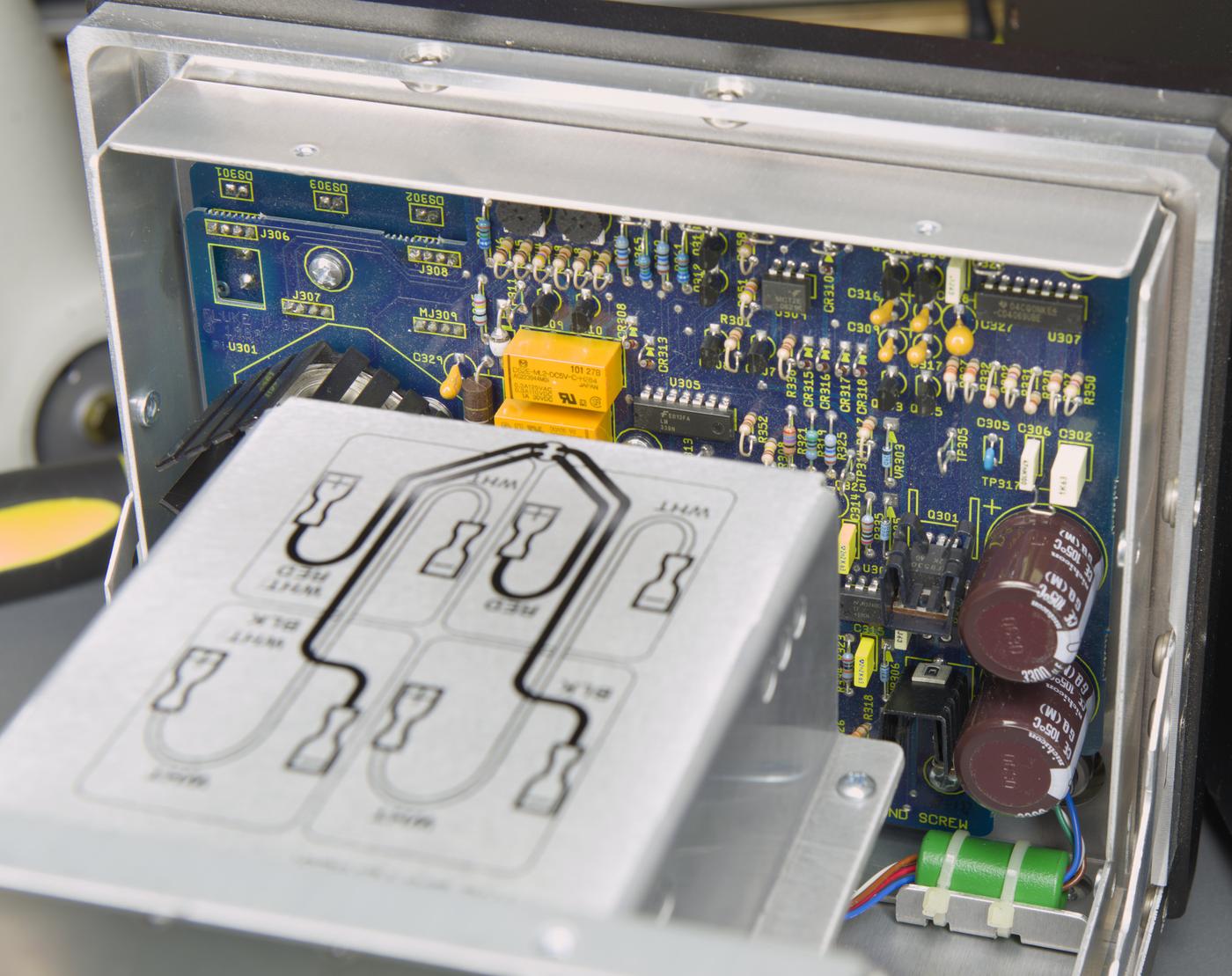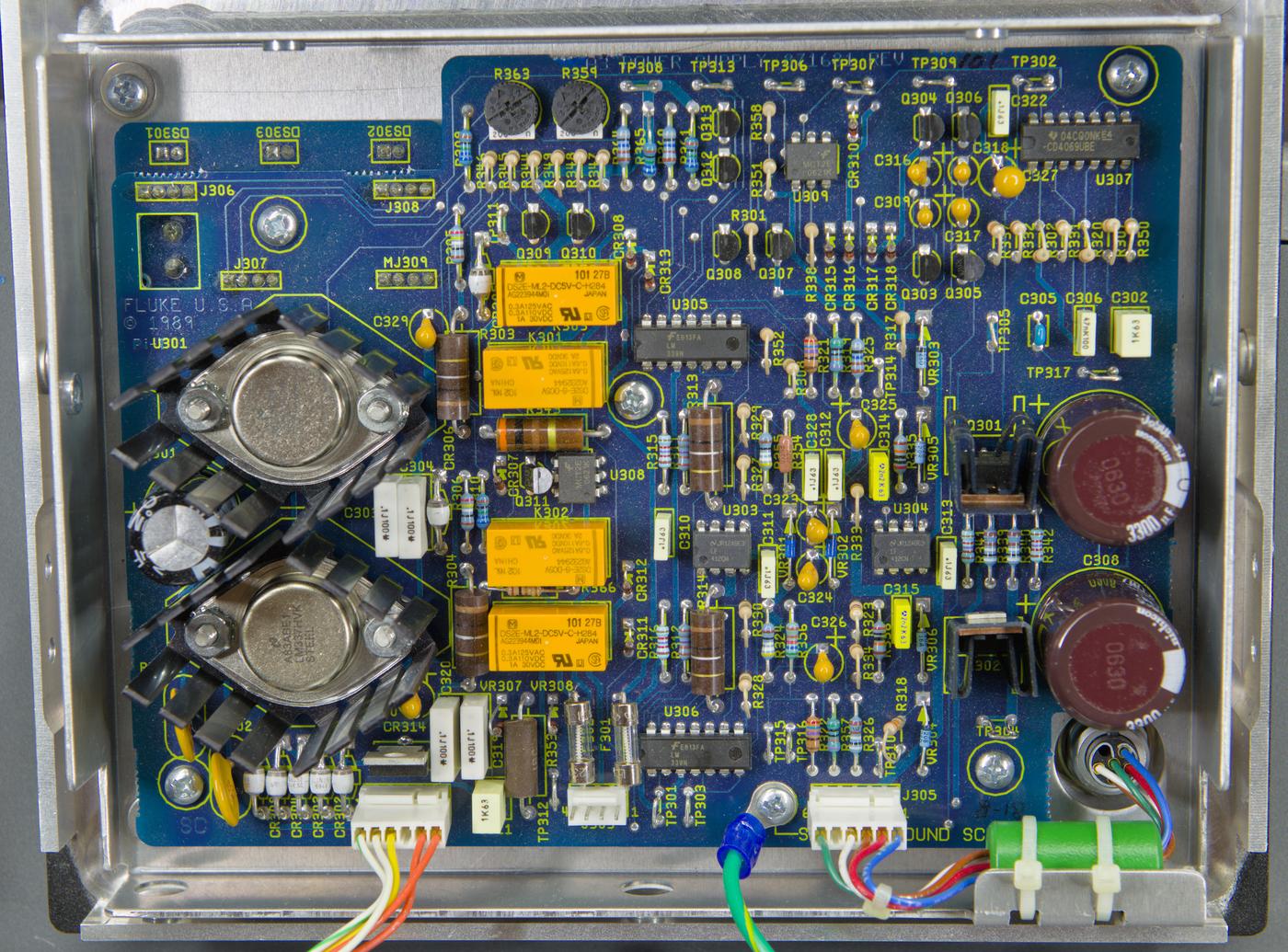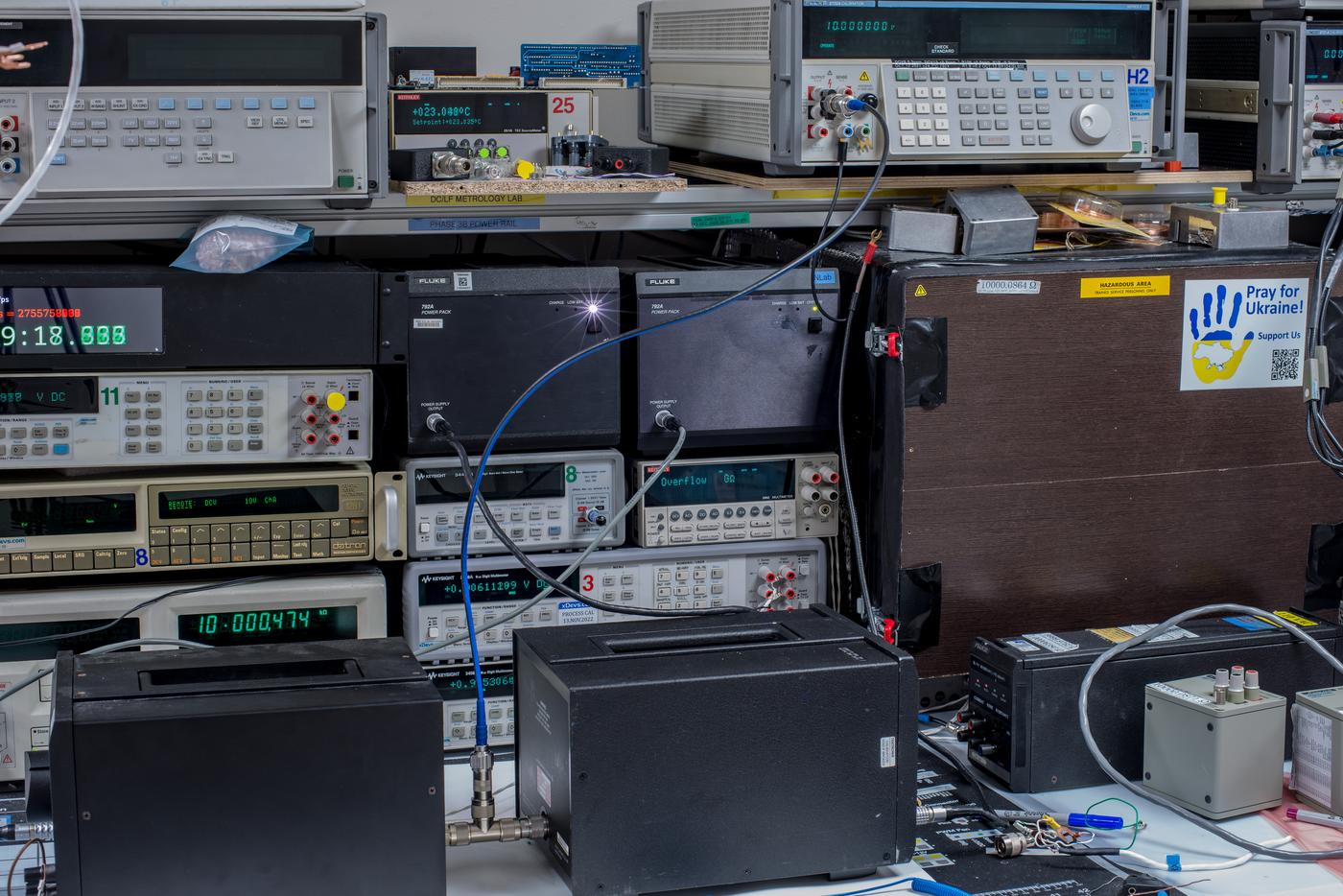Contents
- Intro
- Manuals and documentation
- Exterior and user interface
- Teardown and design evaluation
- High voltage 1000V AC/DC divider resistor
- Dual input switch assembly
- Troubleshooting and repair
- Initial tests and calibration
- 2nd 792A systems with Tektronix calibration
- 3rd 792A system with Fluke year 2012 calibration
- Performance and stability
- Comparison to Ballatine TVC + HPAK 34420A
- Comparison to Wavetek 4920
- Comparison to HP 3458A
- Comparison to Fluke 8920A
- Conclusion and summary
Intro
The Fluke 792A is an very high accuracy AC/DC Thermal Transfer Standard, designed to meet the most demanding ac traceability requirements. Using the patented Fluke RMS sensor and thin film range resistors, the 792A offers an extraordinary transfer accuracy, with total uncertainties of as low as ±10 ppm (±5 ppm from the NIST). The 792A also provides a wide voltage range of 2 mV to 220V (1000V with external range resistor), and a wide frequency range of 10 Hz to 1 MHz.
The Fluke solid-state RMS sensor also provides the 792A with remarkable temperature stability and fast settling time. Now you can be ready to make measurements in 30 seconds instead of 30 minutes. To simplify the transfer process, the 792A’s 2V output permits you to use a high resolution digital multi meter rather than a null meter. The Fluke 792A is designed to support the calibration of the most accurate ac instruments in your standards lab workload, including calibrators like the Fluke 5700A, voltmeters like the Fluke 8506A, voltage amplifiers and other ac/dc transfer standards
Fluke 792A is main standard used to test and characterize multifunction calibrators, such as Fluke 5700A/5720A /5730A and AC voltage measurement standards, such as Fluke 5790A, Fluke 5790B and Wavetek 4920.
Manuals and documentation
Thermal Voltage Converters and Comparator for Very Accurate ACV measurements
AN: How the loading of an AC/DC standard can effect measurements of ACV/ACI
Fluke AN: Design and evaluation of Fluke 792A transfer standard
Fluke 792A Instruction manual, with schematics. PN 871723, July 1990, Rev.1
Exterior and user interface
Standard consists of two boxes, one being battery block/power supply (on the left) and actual transfer standard (on the right). If you buy it from Fluke for serious amount of money, you also get fancy transfer switch to toggle input connection for standard and external 1000V range resistor, to measure high voltages. Transfer box itself can only measure up to 220VAC/VDC.
In this eBay deal 1000V Range resistor was not part of the kit, so will to hunt that rare beast separately.
Teardown and design evaluation
Attention to details, zip-tie hooks to get board out if required. Steel wool in the chamfered corner to ensure good RF contact with shield box, to make sure no electrons escape!
According to date codes on components, this specific 792A was manufactured in the middle of 1996, some 20 years ago.
Range switch assembly

Fluke 792A RMS sensor and hermetic range resistors contain Beryllium Oxide ceramics. While normal use of 792A is safe, BeO dust or fumes from damage to these components HIGHLY TOXIC and breathing them can result in serious injury or worse. Beryllium is IARC Group 1/EPA Class A EPA carcinogen and exposure can cause Chronic Beryllium Disease, an often fatal lung disease. Never disassemble, grind, lap, fire or chemically clean on any ceramic parts inside 792A.
Sensor PCBA
Sensor test
The key component of Fluke 792A performance is custom solid-state thermal transfer RMS sensor. It’s not impossible that this RMS sensor is failed, and that can quickly make unit’s complete repair very expensive.
So one of reasons why we get everything apart to this level, is to actually check if RMS sensor good or not. Procedure of this simple test listed in instruction manual in troubleshooting section. It calls to measure resistance between pins 6 and 7 of U111 sensor hybrid assembly. If it’s no longer between 368 Ω and 432 Ω then U111 sensor is damaged and must be replaced.
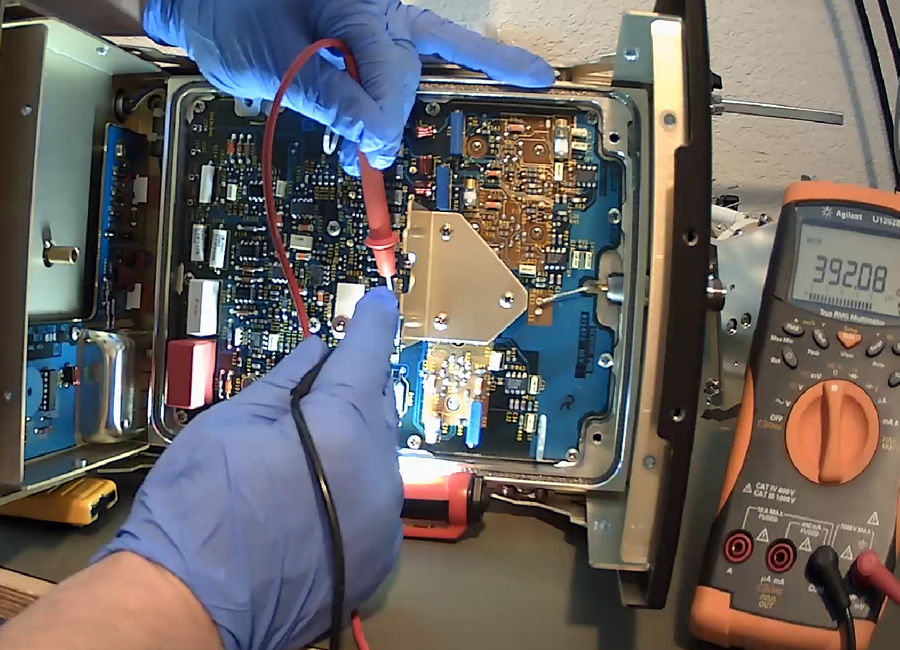
Our measurements with portable Agilent DMM shown sensor resistance 392 Ω, very well within expected good range. Big “Phew!” moment here!
Front filter PCB
Standard DC output, guard and ground terminals are connected to high quality copper 5-way binding posts, very similar to ones used in Fluke 57xx series calibrators and other Fluke standards. Similar connectors can be bought from Low Thermal for about $25/piece.
High voltage 1000V AC/DC divider resistor
High-voltage divider is another special piece of 792A kit.
Dual input switch assembly
Troubleshooting and repair
Model 792A Power pack repair
In condition as received power pack does not show any signs of life, and does not turn on with AC power. Simple check procedure hinted from instruction manual.
Initial cover removal only shows more shields inside. Fluke 792A build like a famous Matreshka dolls, triple shield box inside a box inside a box.
Box in center contain four 6V lead-acid sealed batteries, which are likely dead after 20 years. Let’s see.
This can be done either by measuring battery pack output at J303 connector (should measure around 12V pin 1-2 and 12V pin 3-4). Or simply remove the cover and just to check each battery terminal voltages.
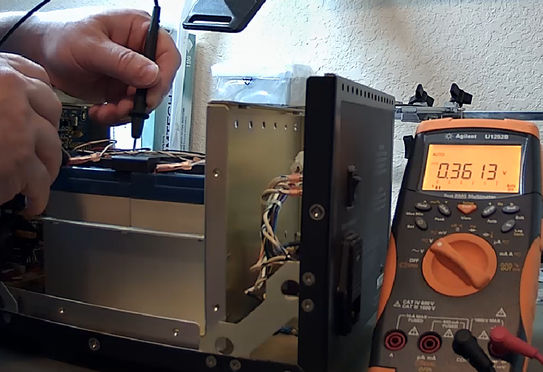
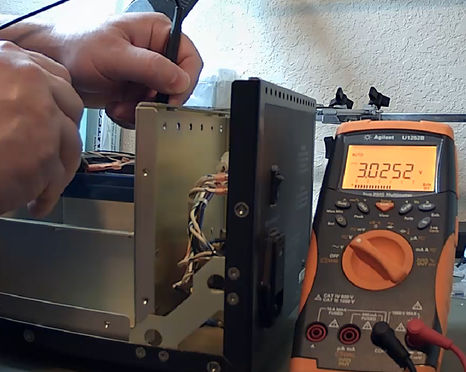
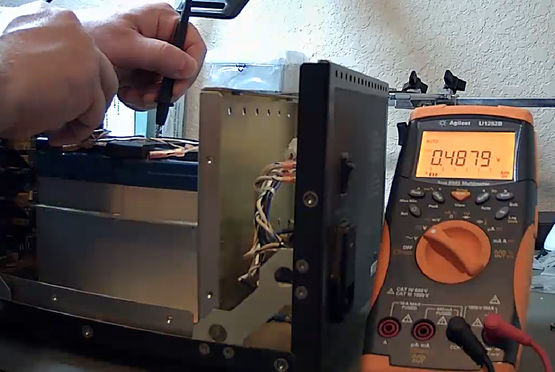
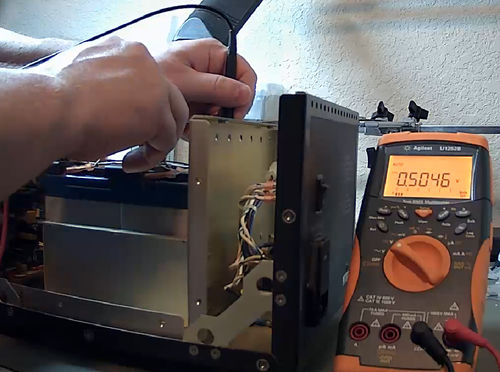
Well, no comments required, all four batteries are completely dead. Let’s remove then and get access to power supply PCBA. This is done by removing front chassis side.
After temporary change with two good 12V battery, output voltage was measured at expected ±11.3 V levels. However relay K30x which connect charger to the battery got very hot quick. Powering unit with AC made relays click very fast for a second and that was it.
At least we know at this point that output voltage regulator is correctly working, which bring some confidence that even if transfer 792A unit have problem, it’s not came from power supply. So focus on troubleshooting now is on charge/detection circuitry. Fluke supplies schematics of 792A to our benefit (Thank you, Fluke!) so that makes troubleshooting bit easier.
Both negative and positive regulators are symmetrical, and can be used to compare each side for faster troubleshooting.
After investigation and few days of troubleshooting, next parts were replaced. Relays were replaced just in case.
- Make sure fuses F301, F302 are OK. Voltage difference between fuse terminals should equal zero. OK..
- Measure supply voltage on U307 at pins 14-7. Should be around ~12VDC. OK..
- If OPERATE indicators briefly goes on at power on, there is likely a short. Check resistance between test points TP302 (+11V), TP304 (-11V) and TP305 (Common). Automatic shutdown also activated in case of too low battery voltage (can be checked at J303 connector). OK..
- If battery charger is faulty, check mains fuse and voltage setting. OK..
- Use scope to measure U301 pin 2 and pin 3 with respect to TP308 (Charger COMMON). Should see half-sine waves about 24Vpk-pk. OK..
- Logic supply voltage should be around +22VDC between cathode of CR309 and TP308 test point. OK..
As a result, Power pack block now working as expected. Larger batteries were used for test, while replacement already on their way.
Both BT1 and BT2 battery now charging as expected, reaching ~13.2 and ~13.3 VDC after 16+ hours of charge.
Output voltages are within few millivolts positive and negative, well in spec.
| Power supply | Measured | Minimum spec | Maximum spec | Notes |
|---|---|---|---|---|
| +11 VDC | +11.15 VDC | +10.7 VDC | +11.3 VDC | Manual page 5-21,22 |
| -11 VDC | -11.15 VDC | -10.7 VDC | -11.3 VDC | Manual page 5-21,22 |
| Battery 1 floating voltage | +13.29 VDC | After 16hrs charge | ||
| Battery 2 floating voltage | +13.42 VDC | After 16hrs charge |
Initial tests and calibration
Input of 792A has an internal protection circuitry that guards against accidental overvoltage. However, the instrument may be damaged if the PSU turned on while voltage is applied to the Type-N input connector. Always turn the power switch ON BEFORE applying a signal to the input connector.
Let’s check range resistors prior to actual measurements.
All resistors are good! Time to connect 792A to Fluke 5700A, test DMM and see some transfers. Protection mechanisms also were tested.
| 2.2VAC 1kHz applied to 792A input | 2.2VDC applied to 792A input |
|---|---|
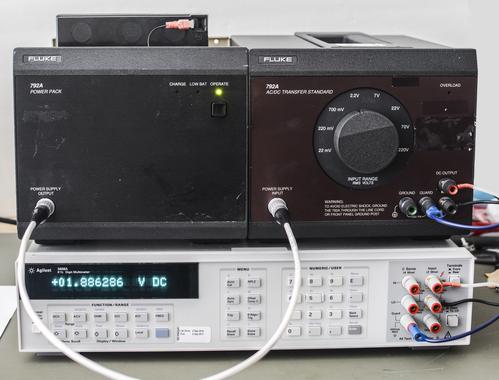 |
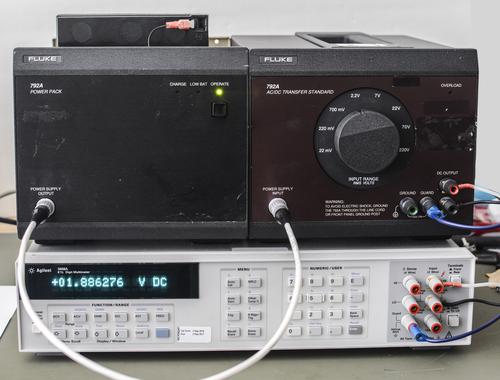 |
It works!
2nd 792A systems with Tektronix calibration
792A Power pack repairs
This system was also received with very dead batteries. Replacement PowerSonic 6V 4.5Ah VRLAs were ordered from Digikey, with same size and footprint to replace original battery in the power pack.
High voltage Fluke 792A-7002 1000V range attenuator
System received discussed above received without one of the key components – 1kV attenuator. Due to ultra-low transfer accuracy of Fluke 792A range resistor for 1000V range was moved outside of the actual standard enclosure to avoid extra heat and interference from high voltage coupled into sensitive AC/DC transfer unit.
In theory this is just 200 kΩ high voltage resistor placed in metal enclosure with N-type connectors. But devil is in details, as usual. Simple resistor in a box would not have stable high frequency response at 1000V 100kHz, so whole lot of design challenges had to be solved by Fluke.
This range resistor was acquired from eBay listing, and was sold in unknown condition. It was pretty expensive but I had to take a chance to complete the 792A system together.
Bottom plate has four screws and calibration seal, that was completely voided. Somebody was inside and had opened the enclosure for whatever reason. Hopefully element is still intact and not charred into ash by previous users.
Sides have number of socket heat bolts that Fluke loves for mounting plastic handles on calibrators and other equipment. These screws hold the frame with dielectric plates and resistive elements of actual attenuator assembly.
Input and output N-connectors seen better days but seem to be still in usable shape. Connectors are most likely customized for 792A enclosure and could be pretty difficult to replace.
Opening range resistor voids calibration data and full re-characterization of standard would be required.
We got this resistor untested with zero history or calibration data, so in this specific case it was nothing to loose. Do not do this for calibrated equipment!
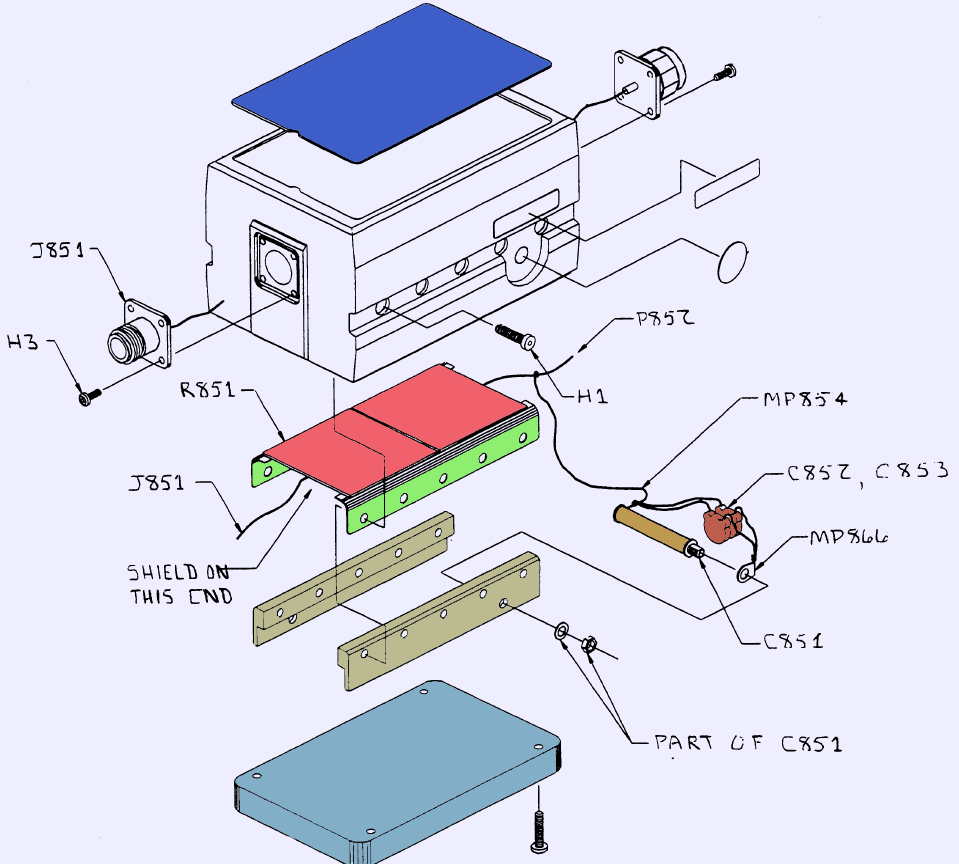
Removing four 6/32 screws release the aluminum seal plate that protects the range resistor guts. If you need to ask how thick plate should be, answer is “Yes, please!” :) I’ve measured 12.7mm thickness across the lid. Thickness of metalwork is important as this range resistor should also work well and be repeatable with applied 1000VRMS 15 Hz signals.

White substrate in this range resistor are made of Beryllium Oxide ceramics.
Do not stress it or mechanically abuse. BeO is hazardous when inhaled.
Metal plate across input side of the resistive network provides additional active guarding to eliminate capacitive effects across the thin film resistance element. Such driven shield is used to flatten the AC response of the resistor. The most effective shields provide decreasing field strength longitudinally along the resistor resulting in no current flow in the capacitance to the shield. Using the driven shield around one of two series connected resistive elements was analyzed at NIST by D. X. Huang, Thomas E. Lipe Jr., Joseph R. Kinard Jr., Clifton B. Childers back in 1995.
We can see two 100 kΩ thin film elements, which have much better dimensional stability than typical coaxial resistive dividers. Planar element is also easier to mount on large heatsink surfaces to further improve performance of such attenuator over temperature. NiCr thin film network is deposited on alumina substrate which is mounted to underlying beryllium oxide heat dissipation substrate. Alumina is much worse thermal conductor to BeO but it is used due to surface smoothness and compatibility with thin film and glass cover material assembly. Using a patented process (US 4803457) the TCR of the thin film resistor can be trimmed to less than 1 ppm/°C.
The 792A uses strips of copper soldered to the heat substrate and then clamped to the exterior case to conduct the heat from the resistor. This results in very low thermal resistance from the thin film resistor to the case, often less than 1 °C/W. The low thermal resistance combined with the very low temperature coefficient result in very fast settling times compared to the coaxial designs.
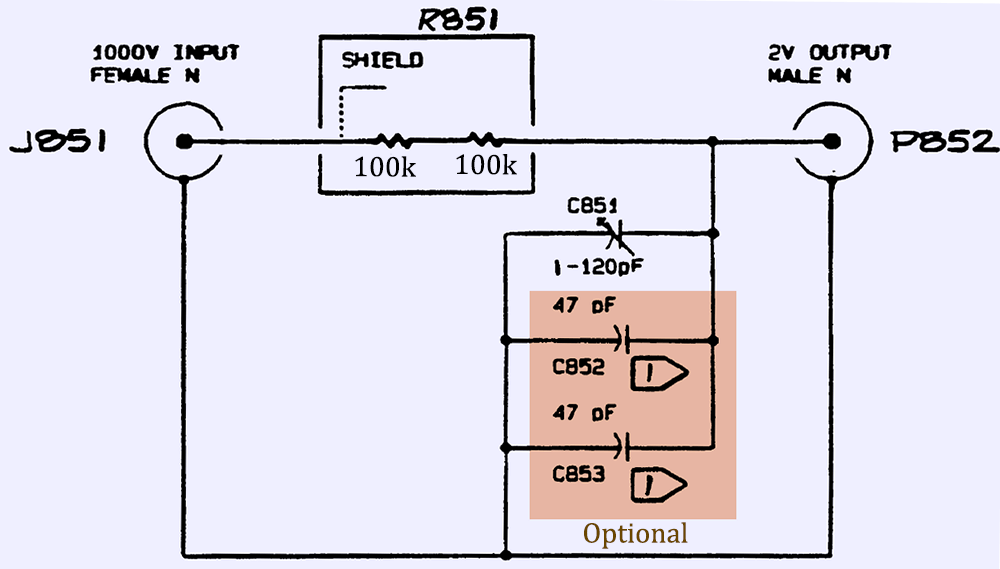
Tube element near the output is precision adjustable capacitor C851 with range from 1 to 120 pF. This capacitor was added to allow the flatness to be adjusted after 792A-7002 is fully assembled in production environment. There is possibility to install additional 47pF C852 and/or C853 as well if needed for AC/DC performance adjustment. However in attenuator here neither are installed.
For a 1000V range resistor to be useful, its AC/DC difference must also be very repeatable and stable, so it will be very interesting challenge to characterize and properly test this range resistor in future. Good 792A range resistor together with AC/DC transfer unit is capable to deliver measurement uncertainty better than ±10 ppm at full 1000V 100kHz signal level with stability to span over many years.
3rd 792A system with Fluke year 2012 calibration
Few years ago friendly local lab acquired a complete Fluke 792A with actual uncertainty sheet from the old Fluke Everett Primary Electrical Laboratory certificate.
Calibration report was issued on June 11, 2012 using Met/CAL: 792A UUT Procedure; Rev.20110118.
Unit came as a full set with high-voltage attenuator and AC/DC switch and nice Pelican 1640 hard-shell plastic case.
Attenuator and switch serial numbers match the actual main transfer unit, so we can be confident that this kit was not separated or mismatched previously.
Both transfer and power pack look pristine but had dead empty batteries.
Battery replacement is fairly easy and can be done in an hour. 792A power pack using set of four identical 6V VRLA batteries.
N Connectors were clean and nice.
Removing covers from 792A Power pack gives us access to inner shielded compartment for battery access. There is no need to disassemble 792A transfer unit.
Batteries are standard 4.0 Ah type, such as Genesis Enersys NP4-6.
Charger PCB is nice and clean because there are no vent holes or fan in the 792A unit.
Marking on PCB reveal production date estimate of this instrument around middle of 2006, week 30.
792A Power pack repairs
Performance and stability
Performance against another Fluke 792A system
Comparison to Ballatine TVC + HPAK 34420A
Comparison to Wavetek 4920
Comparison to HP 3458A
Comparison to Fluke 5790A
Conclusion and summary
Projects like this are born from passion and a desire to share how things work. Education is the foundation of a healthy society - especially important in today's volatile world. xDevs began as a personal project notepad in Kherson, Ukraine back in 2008 and has grown with support of passionate readers just like you. There are no (and never will be) any ads, sponsors or shareholders behind xDevs.com, just a commitment to inspire and help learning. If you are in a position to help others like us, please consider supporting xDevs.com’s home-country Ukraine in its defense of freedom to speak, freedom to live in peace and freedom to choose their way. You can use official site to support Ukraine – United24 or Help99. Every cent counts.
Modified: Feb. 4, 2025, 6:42 a.m.


